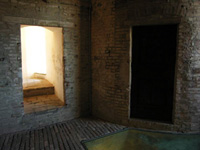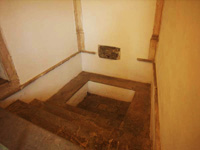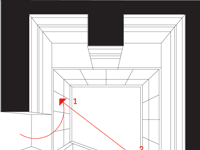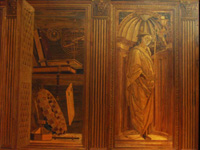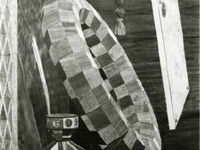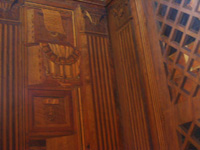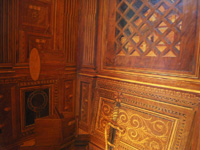And when the night arrives, I return home, and enter into my studiolum; and on the threshold I take off that everyday costume, and put on royal and curial vests; and thus I enter into the ancient courts of those ancient men, where I am lovingly accepted by them, and where I can feed upon that food that is only mine, for which I was born; where I do not feel ashamed to speak with them and ask them about the reasons of their deeds; and they humanely reply to me; and for those hours I do not feel any dullness, forget every affliction, I'm not afraid of poverty, and not anxious of death: I entirely rely upon them.—Niccolò Machiavelli, from a letter to Francesco Vettori, 10 December 1513
6.1 The Duke's Private Percorso
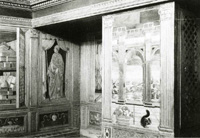 Fig. 6.1. Federico da Montefeltro in the robes of a humanist scholar. Fig. 6.1. Federico da Montefeltro in the robes of a humanist scholar. |
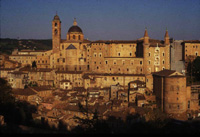 Fig. 6.2. The city of Urbino and the ducal palace. Fig. 6.2. The city of Urbino and the ducal palace. |
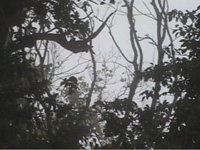 Urbino Day Urbino Day |
|
1From Vespasiano da Bisticci's biography for Federico da Montefeltro, we can imagine an ideal summer day for the duke of Urbino, were it ever to have happened, as follows. By dawn's light, unarmed, he would ride out from the palace with a handful of men for morning exercises in the surrounding countryside, returning as others were just beginning to stir. After dismounting, he would attend Mass with his household and townsfolk, since he was "before all things most devout and observant in his religious duties." Afterward, Federico would go into a garden with its doors open to provide counsel to all who wished it, until lunch, when he would join a gathering of up to five hundred guests, citizens and members of the household, including the sons of noblemen committed to the duke for military training.
2As in a monastery, meals at the Urbino court were accompanied by a steady diet of literary readings. "Some one would always read to him; during Lent a spiritual work, and at other times the Histories of Livy, all in Latin." Montefeltro imposed a steady and modest diet for the household; he ate "plain food and no sweetmeats, and drank no wine save that made from such fruits as cherries, pomegranates or apples." Every day, without fail, a good quantity of bread and wine was distributed to those in need. Federico also fasted according to all vigils ordered by the Church, without exception, even when for reasons of health he had received special dispensation from the pope.
3At all hours, between the courses of meals as well, the duke gave audience to anyone who wished, preferring to speak directly with citizens, and promptly resolving matters. After lunch, he would go "into his closet to attend to his affairs and to listen to readings, according to the season. At vespers he went forth again to give audience."
4Early in the evening, he would visit the cloister of Sta. Chiara, which he had built, or the convent of St. Francis, where in a large meadow he would observe thirty or forty of his young men throwing the lance. When he felt necessary, "he would reprove them, in order that they might do better. During these exercises anyone might address him." At the hour of supper Federico would return with the youths to the palace to dine on exemplary food and texts. After, he would challenge the youths under his tutelage to rise early for exercises the following morning, and if there were no further requests for his counsel, "he would go with the leading nobles and gentlemen into his closet and talk freely with them." Afterward, the duke would climb to an observatory above the studiolo before retiring.1
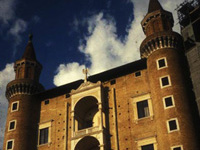 Fig. 6.3. The turrets of the ducal palace. Fig. 6.3. The turrets of the ducal palace. |
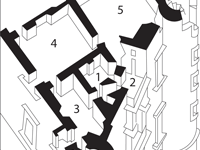 Fig. 6.4. Axonometric detail of the Urbino ducal palace. Fig. 6.4. Axonometric detail of the Urbino ducal palace. |
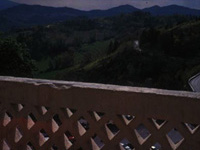 Fig. 6.5. View from loggia, outside Urbino studiolo. Fig. 6.5. View from loggia, outside Urbino studiolo. |
|
5By drawing these slender but informative threads through spatial sequences in the palace, we may speculate more roundly on the habitual uses of various chambers, including the studiolo. Maria Pernis has proposed, for example, that the north turret2 (lowest of the two depicted in fig. 6.4) was conceived as a spine for the duke's private percorso, a symbolic narrative that "ascended" through the ducal palace from worldly action through physical and spiritual purification to contemplative pursuits, recalling Aeneas's journey in Virgil's Aeneid.3 Before such an ascent would be possible, however, Federico would have first descended (an act no less symbolic) by the scala a lumaca,4 from his bedchambers on the piano nobile to the stables three flights below, at the foundations of the palace.5
6Following his morning exercise, Federico could have enjoyed the benefits of his thermal bath—one of the earliest of its kind in the Renaissance—modeled by Francesco di Giorgio on examples from Roman antiquity.6 Physical cleanliness, particularly of the hands, was enforced in the five hundred–person household with a rigor that Pernis attributes to a life-threatening malady Federico had contracted as a child.7 As stipulated in the Ordine et officij, an official register of procedures at the ducal palace, everyone—from Urbino's citizens to food handlers and grooms—were bound by a code of conduct and personal hygiene that was unusually thorough for its time.8
7 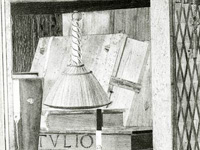 Fig. 6.9. Scopetta, north wall, Urbino studiolo.The scopetta, one of the devices ubiquitous to the Montefeltro palaces, underscores a perceived symmetry between physical and moral purity. Found in an intarsiated pilaster-capital at Urbino and depicted as an object and emblem in both studioli, the scopetta had been absorbed into the emblems of the Montefeltro through Federico's marriage to Battista Sforza in 1460. At Urbino, a whisk broom is suspended from a nail inside a cabinet in the north wall, where it shares the company of manuscripts by "TVLIO" (Cicero) and "NACA" (Seneca). At Gubbio, the scopetta provides a double reference to the duchess Battista: in addition to its heraldic associations with the Sforza, the scopetta is encircled with pearls, one of the duchess's favorite items. Pearls also adorn the young Guidobaldo in official portraits, likely in remembrance of Battista, who died from pneumonia shortly after giving birth to the prince.9
Fig. 6.9. Scopetta, north wall, Urbino studiolo.The scopetta, one of the devices ubiquitous to the Montefeltro palaces, underscores a perceived symmetry between physical and moral purity. Found in an intarsiated pilaster-capital at Urbino and depicted as an object and emblem in both studioli, the scopetta had been absorbed into the emblems of the Montefeltro through Federico's marriage to Battista Sforza in 1460. At Urbino, a whisk broom is suspended from a nail inside a cabinet in the north wall, where it shares the company of manuscripts by "TVLIO" (Cicero) and "NACA" (Seneca). At Gubbio, the scopetta provides a double reference to the duchess Battista: in addition to its heraldic associations with the Sforza, the scopetta is encircled with pearls, one of the duchess's favorite items. Pearls also adorn the young Guidobaldo in official portraits, likely in remembrance of Battista, who died from pneumonia shortly after giving birth to the prince.9
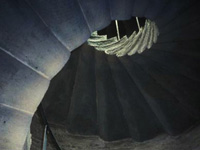 Fig. 6.10. The duke's private spiral staircase. Fig. 6.10. The duke's private spiral staircase. |
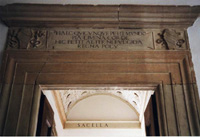 Fig. 6.11. Entrance to the Tempietti. Fig. 6.11. Entrance to the Tempietti. |
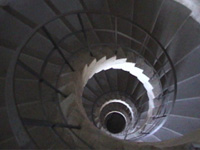 Spiral stairs, Urbino: the duke's descent and ascent Spiral stairs, Urbino: the duke's descent and ascent |
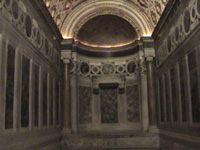 Urbino Tempietti Urbino Tempietti |
8Proceeding to the floor above, Federico would have visited the tempietti, twin chambers located directly above the bath and beneath the studiolo. The conditional tense would have is significant: Federico did not have the opportunity to use the chapel, which was completed after his death under Ottaviano's supervision.10 In fact, the tempietti are on the same level (piano terra) as Ottaviano's personal suite of chambers. Before entering the vestibule to the tempietti, an inscription announces to visitors that they stand at the entrance to the City of God: "The person who seeks this sacred threshold with a pure heart, he seeks the shining kingdom of the eternal heaven."11 An inscription in the small vestibule leading to the twin chambers reads: "You see the twin 'sacelli' that are united together but with a slight difference; one of them is dedicated to the Muses while the other is sacred to God."12
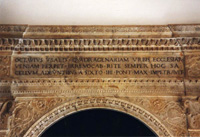 Fig. 6.12. Entrance to Capella del Perdono. Fig. 6.12. Entrance to Capella del Perdono. |
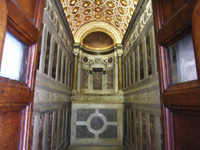 Fig. 6.13. Capella del Perdono, from entrance. Fig. 6.13. Capella del Perdono, from entrance. |
9The Cappella del Perdono bears particular religious significance. By intercession of Ottaviano, Pope Sixtus IV "granted a special indulgence to those who visited the Chapel on the Monday after Easter."13 On this occasion, a reliquary known as Il Perdono, normally preserved above the altar, was placed above the room's entrance to be to be venerated by a procession of Urbino's citizens.14 Accordingly, an inscription on the architrave, from the Gospel of John (20:22–23), reads: "Receive the Holy Spirit and the sins of those you will forgive will be forgiven."15
10Aside from the sins Dante recounted in the social register of the Inferno,16 the Montefeltro were respected for their piety, particularly for their support of the Franciscans.17 Federico's "father" Guidantonio, a devout follower of Bernardino da Siena, had invited the saint to preach two of his Quadragesimale at Urbino18 and was buried in a Franciscan habit in the church of San Donato. In addition to sponsoring the construction of numerous monasteries and convents for the order, Federico later commissioned di Giorgio to incorporate this older structure into a new church that was consecrated for San Bernardino.
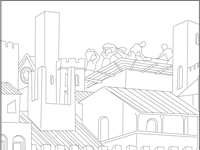 Fig. 6.14. Detail of The Effects of Good Government. Fig. 6.14. Detail of The Effects of Good Government.Extended Caption 22 |
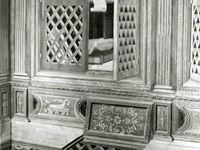 Fig. 6.15. Cabinet with hunting horn, Gubbio studiolo. Fig. 6.15. Cabinet with hunting horn, Gubbio studiolo.Extended Caption 22 |
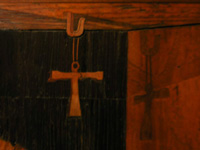 Fig. 6.16. Tau-shaped tuning key, Gubbio studiolo. Fig. 6.16. Tau-shaped tuning key, Gubbio studiolo.Extended Caption 22 |
|
11For the adjacent Tempietto delle Muse, the use of which is not as easily determined, several artists, including Raphael's father, the court poet and painter Giovanni Santi, composed an allegorical cycle of portraits of Apollo, Minerva, and the nine Muses. Remaining evidence, including an inscription19 and eight portraits removed to the Corsini Gallery in Florence,20 points to a programmatic complementarity between the tempietti that Pernis attributes to the direct influence of Marsilio Ficino. Where the Cappella del Perdono attends to spiritual purity, the Tempietto delle Muse is dedicated to purity in philosophical and artistic inquiry.21
12 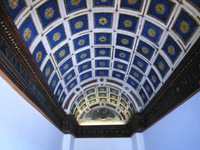 Fig. 6.17. The portraits of the muses conceived for the Tempietto.Further consideration should be given to a word in the vestibule's inscription. Sacella is a figurative term signifying the treasury contained in one's mind. It is one of a list of such terms, including saccula, cella, arca, thesaurus, forulus, loculumenta, cubilia, and scrinium (to name but a few),22 that have been recently plumbed to reveal the depth and continuity of the lineage of architectural mnemonics in the craft of Western thought. A gesture to this tradition would be most appropriate at the threshold of a shrine for the daughters of Mnemosyne.
Fig. 6.17. The portraits of the muses conceived for the Tempietto.Further consideration should be given to a word in the vestibule's inscription. Sacella is a figurative term signifying the treasury contained in one's mind. It is one of a list of such terms, including saccula, cella, arca, thesaurus, forulus, loculumenta, cubilia, and scrinium (to name but a few),22 that have been recently plumbed to reveal the depth and continuity of the lineage of architectural mnemonics in the craft of Western thought. A gesture to this tradition would be most appropriate at the threshold of a shrine for the daughters of Mnemosyne.
13In analyzing the tempietti, Luciano Cheles has noted that "what is most 'modern' about them is the association of sacred and profane, for it proclaims a belief in the complementary nature of the Christian and pagan traditions."23 Pernis asserts, with more precision, that the chambers reconcile Christianity with Platonism. As implied in the inscription above the threshold, these traditions remained distinct for the Urbino court yet reconciled by the image of Augustine's City of God.24 The "use" of the Cappella del Perdono and Tempietto delle Muse is thus highly symbolic; their adjacency enables, architectonically, a resolution of forms of wisdom that were widely regarded as contradictory. The reconciliatory position taken by Montefeltro in these delicate matters is evident throughout the palace—in its physical composition and ornamentation, in the contents of its library and the selected influences on the court's scholarship and politics.
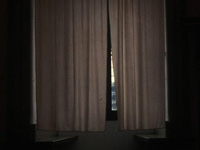 Fig. 6.18. Window seat in the duke's dressing room. Fig. 6.18. Window seat in the duke's dressing room. |
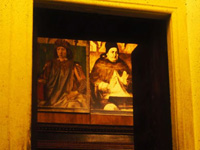 Fig. 6.19. Urbino studiolo from Federico's entrance. Fig. 6.19. Urbino studiolo from Federico's entrance. |
14One flight up from the tempietti, the duke would arrive in his dressing chamber for final preparations before proceeding through the studiolo to the Sala d'Udienza.25 On entering the studiolo, Federico would be greeted by the view of the ideal city in the east wall, surmounted by images of Solomon and Aquinas. Drawing toward the center of the room, Federico would see his armor to the left and the miniature studiolo to the right. Although the location of the fictive city between recalls the reconciliatory tone from the tempietti below, the imagery of the east wall alludes even more directly to one of several themes that enlace the studiolo.
^top6.2 On Action and Contemplation
15The function of the studioli is not easily pinpointed: the rooms belong to a rubric of small Renaissance chambers, designated by such interchangeable terms as gabinetto, cameretta, scrittoio, and studietto, that were used by their patrons to overlapping and often uncategorical ends.26 As apparent from Vespasiano's biography, the Urbino studiolo served various uses throughout the day, ranging from reflective repose to matters of civil justice, political negotiation, and leisurely conviviality. Each activity reflected a different facet of Federico's brand of governance as duke of Urbino and the underlying influence of a well-rounded, or "mixed," humanist education.
16Immediate precedents to the studioli include the "studies" of Federico's mentors—Pope Nicholas V, Piero de' Medici, and Leonello d'Este—which had been inspired by Petrarch's writings on the benefits of solitude and leisure for intellectual pursuits.27 A popular image from early in the 15th century, depicting Petrarch surrounded in his study by books and instruments, offered artists such as Jan van Eyck, Domenico Ghirlandaio, and Sandro Botticelli a prototype for the portraiture of humanist scholars and Church Fathers.28 Leonello d'Este described the appropriate provisions for studious preoccupations: "As well [as books] it is not unseemly to have in the library an instrument for drawing up horoscopes or a celestial sphere, or even a lute if your pleasure ever lies that way: it makes no noise unless you want it to. Also decent pictures or sculptures representing gods and heroes. We often see, too, some pleasant picture of St. Jerome at his writing in the wilderness, by which we direct the mind to the library's privacy and quiet and the application necessary to study and literary composition."29
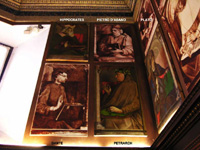 Fig. 6.20. Petrarch, among the illustrious men in the west wall of the Urbino studiolo. Fig. 6.20. Petrarch, among the illustrious men in the west wall of the Urbino studiolo. |
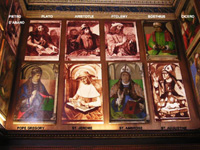 Fig. 6.21. St. Jerome, among the illustrious men in the north wall of the Urbino studiolo. Fig. 6.21. St. Jerome, among the illustrious men in the north wall of the Urbino studiolo. |
17The theme of privacy and quiet, a common thread among these chambers and their humanist patrons, occupied one side of the ancient debate concerning the respective values of an active and/or a contemplative life. For his part, Petrarch had resuscitated such classical authors as Pliny the Younger, who in his private letters described his study—"cubiculi mei"—as located near the bedroom and furnished with an armarium containing books to be read "over and over again."30
18Not coincidentally,31 Leon Battista Alberti, who reputedly dedicated an early version (1452) of his De re aedificatoria to Federico,32 described that the husband's and wife's bedchambers should be discreetly joined, with each leading to separate ancillary rooms—the wife's chamber to a dressing room and the husband's into a library. At Urbino, the duke's and duchess's bedchambers were linked by a private external balcony above hanging gardens. Federico's rooms connected to the studiolo, whereas the duchess Battista's contained a private chapel.
19 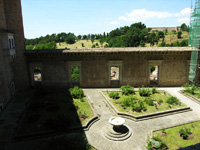 Fig. 6.22. A passageway connecting the duke's and duchess's quarters.Alberti was also occupied by the dialectic of the vita activa–vita contemplativa.33 Through his own treatise on the subject, De commodis literarum atque incommodis,34 and a study of the Florentine family, Della famiglia,35 Alberti deeply influenced a younger generation of powerful and wealthy soldier-scholars, including Leonello d'Este and Federico, who negotiated their turbulent political climate as much by tactical eloquence as by militaristic valor. The incentive among this new cultural elite to be equally adept with pen and sword was expressed by Vespasiano: "It is difficult for a leader to excel in arms unless he be, like the Duke [Montefeltro], a man of letters, seeing that the past is a mirror of the present. A military leader who knows Latin has a great advantage over one who does not."36
Fig. 6.22. A passageway connecting the duke's and duchess's quarters.Alberti was also occupied by the dialectic of the vita activa–vita contemplativa.33 Through his own treatise on the subject, De commodis literarum atque incommodis,34 and a study of the Florentine family, Della famiglia,35 Alberti deeply influenced a younger generation of powerful and wealthy soldier-scholars, including Leonello d'Este and Federico, who negotiated their turbulent political climate as much by tactical eloquence as by militaristic valor. The incentive among this new cultural elite to be equally adept with pen and sword was expressed by Vespasiano: "It is difficult for a leader to excel in arms unless he be, like the Duke [Montefeltro], a man of letters, seeing that the past is a mirror of the present. A military leader who knows Latin has a great advantage over one who does not."36
20On a practical level, knowledge of Latin equipped a condottiere with an arsenal of historic examples of Roman strategy in warfare: Vespasiano offers numerous examples of the prudence with which Federico organized and executed his battle plans. More generally, for a military leader with political aspirations, familiarity with letters was vital for matters of governance and conducive to cultivating relations with such powerful scholarly patrons as the humanist popes Nicholas V, Pius II, and Sixtus IV. In his memoirs, Pius II recalls a "sweet and lively conversation" with Federico about the Trojan War during which the count, "who had read much," asked if "the ancients wore armor similar to those of our times." Pius II responded that "Homer and Virgil describe all sorts of arms which are still used in our days, but also many others that have gone out of fashion."37
21Understandably, Federico's historical interests included a keen curiosity toward ancient weapons and machines, like those described by Vitruvius in book ten of De architectura. This curiosity is memorialized at the entrance court of the ducal palace of Urbino, where 72 stone formellae (tablets) were set into the back of a continuous stone bench that wraps the base of the facciata ad ali (winged facade). Executed by Ambrogio Barrocci da Milano, the formellae were carved in relief to represent war machines, hydraulic turbines, and various military and architectural emblems from the sketchbooks of Francesco di Giorgio.38
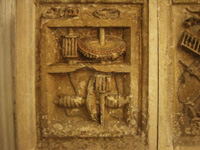 Fig. 6.23. Triple hoist mechanism carving. Fig. 6.23. Triple hoist mechanism carving.Extended Caption 23 |
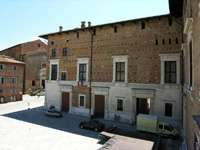 Fig. 6.24. "Unfinished" façade of Urbino's ducal palace. Fig. 6.24. "Unfinished" façade of Urbino's ducal palace.Extended Caption 23 |
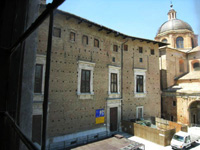 Fig. 6.25. The second "wing" of the entry façade. Fig. 6.25. The second "wing" of the entry façade.Extended Caption 23 |
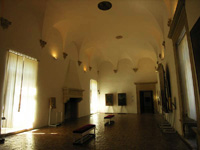 Fig. 6.26. Sala del Conversazione. Fig. 6.26. Sala del Conversazione.Extended Caption 23 |
22The placement of these images in the public forecourt demonstrates the transparency between the duke's endeavors and their direct influence on the health of Urbino and its citizens. "Within his State, Federico's popularity stemmed not only from his benevolent rule, but also from the very large profits derived from his activities as a condottiere, since they enabled him to keep personal taxation at low levels."39 The matter of taxation had direct architectural implications: Federico's colleagues—the Sforza in Milan, the d'Este in Ferrara, and the Malatesta in Rimini—were compelled to fashion their dwellings as fortresses in order to protect themselves from their own citizens, who were often at arms over the lords' high taxation.40
23 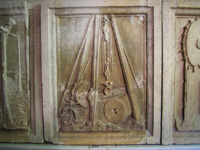 Fig. 6.27. Column hoist carving.In addition to extensive construction elsewhere in the dukedom, the Urbino palace was an active construction site for much of Federico's final thirty years of life. This activity intensified between 1474 and 1478, when Federico's reputation, personal health, and earnings were at their zenith. Mechanisms of architectural construction and destruction thus represented the source and investment of Federico's (and the city's) wealth and health. By incorporating these images into the palace facade, at the interface of public and private spheres, the duke and his architect offered citizens a palpable reminder of the interdependence of the House of Montefeltro and the city and lands of Urbino.41
Fig. 6.27. Column hoist carving.In addition to extensive construction elsewhere in the dukedom, the Urbino palace was an active construction site for much of Federico's final thirty years of life. This activity intensified between 1474 and 1478, when Federico's reputation, personal health, and earnings were at their zenith. Mechanisms of architectural construction and destruction thus represented the source and investment of Federico's (and the city's) wealth and health. By incorporating these images into the palace facade, at the interface of public and private spheres, the duke and his architect offered citizens a palpable reminder of the interdependence of the House of Montefeltro and the city and lands of Urbino.41
24This relationship is crystallized at the architectonic heart of Federico's governance, in the studiolo, where images of the duke's weapons and armor are interspersed with books and scholarly instruments. Resting against the underside of upturned bench seats we find a sword near the door to the duke's bedchambers and a mace near the passageway to the Sala d'Udienza. A particularly ferocious weapon, the mace symbolized Fortitude, the virtue of "true courage" that, as Castiglione describes, "frees the mind from the passions that it not only fears not dangers, but even pays no heed to them."42 This cardinal virtue, appropriate to a military commander, is represented elsewhere in the studiolo and palace by two of the Montefeltro imprese, an ostrich and an exploding grenade.
25 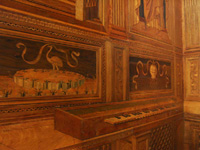 Fig. 6.28. Clavichord, inlaid with metal strings, Urbino studiolo.The ostrich, shown with a metal spike in its beak, represents tenacity: its accompanying motto, "Ican Verdait En Crocisen," is a mangled rendering of the German idiom "I can digest a large piece of iron." Introduced into Montefeltro heraldry by Federico's grandfather Antonio, the device commemorated the reappropriation of the Montefeltro territories after a long exile.43 Cheles has also suggested that the emblem's proximity to the names of Cicero and Seneca accords with the philosophers' moral fiber.
Fig. 6.28. Clavichord, inlaid with metal strings, Urbino studiolo.The ostrich, shown with a metal spike in its beak, represents tenacity: its accompanying motto, "Ican Verdait En Crocisen," is a mangled rendering of the German idiom "I can digest a large piece of iron." Introduced into Montefeltro heraldry by Federico's grandfather Antonio, the device commemorated the reappropriation of the Montefeltro territories after a long exile.43 Cheles has also suggested that the emblem's proximity to the names of Cicero and Seneca accords with the philosophers' moral fiber.
26The exploding grenade, displayed ubiquitously, was Federico's personal signature of Fortitude.44 In addition to his tactical genius, Federico gained renown for his pioneering use of field artillery against Bartolomeo Colleone and the Venetian forces in 1467.45 Numerous sketches in di Giorgio's taccuino (sketchbook) speculate on the trajectory of missiles, integrating ancient weaponry (scorpions and ballistae) with recent technological advances such as perspective. In these drawings we recognize several instruments from the studioli—including the astrolabe, dividers, level, plumb line, and quadrant—that were common to the quattrocento architect, military engineer, land surveyor, and astronomer. Matched with Federico's strategic skills, the presence of these professionals and their provisions in the theater of battle produced a formidable display that contemporaries regarded as "l'arte del Duca d'Urbino."46
27While praising Montefeltro's Fortitude, Vespasiano emphasizes Federico's "consummate" powers of foresight, stating that the duke triumphed "less by his sword than by his wit."47 Shrewd deployment of learned references was essential to quattrocento politics and warfare. In addition to their usefulness in arranging marriages,48 artfully composed letters were considered invaluable to political negotiations, in which the pen often figured as prominently as the sword. As evident in the studioli, utensils for letter writing—including penne,49 sharpening knives, inkwells, and bottles (as well as eyeglasses)—were essential provisions for a quattrocento study.
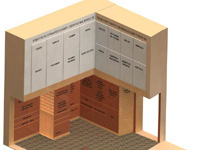 Fig. 6.29. View to southeast corner of Urbino studiolo. Fig. 6.29. View to southeast corner of Urbino studiolo. |
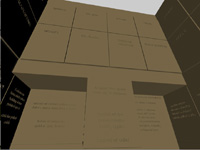 Urbino Studiolo Urbino Studiolo |
28On first analysis, the composition of the studiolo manifests a clear, bilateral distinction between action and contemplation. Federico's armor and a baton of command (action) are located to the left of the city, while the miniature studiolo (contemplation) is to the right. The portraits of the uomini illustri above, Cheles has noted, appear to correspond to this dialectical arrangement. Cicero and Seneca (eloquence and political ethics) and Moses and Solomon (justice and wisdom in human affairs) are placed above the armor niche, while Homer and Virgil (epic poetry) and Thomas Aquinas and Duns Scotus (speculative wisdom) are found above the faux studiolo. Diminutive figures of Hercules (accompanied by the Nemean lion) and Atlas "support" this distinction.50 Hercules holds the active Cicero–Seneca and Moses–Solomon in place, while Atlas supports the contemplative Homer–Virgil and Thomas Aquinas–Duns Scotus. In book 1 of Cristofero Landino's Disputationes camaldulenses, an inquiry on the active and contemplative lives dedicated to Federico in the winter of 1473, the character Alberti compares these two mythical figures: "Hercules was wise, but not for himself; all mortals benefited from his wisdom. In fact, during his peregrinations, which covered large parts of the world, he eliminated horrible wild beasts, tamed pernicious and huge monsters, suppressed the most cruel tyrants, and brought back law and freedom to many peoples and nations. Had he stayed with his tutor Atlas, who was devoted to a purely idle wisdom, we would have had a sophist instead of Hercules."51
29Although Federico's achievements were often characterized by contemporary poets as Herculean, the overall disposition of the studiolo contents suggests an inclination of the patron toward peaceful, contemplative pursuits. Whereas books and musical instruments appear abandoned in mid-use, the sword and dagger are sheathed in their scabbards. Likewise, Federico's armor has been removed and stored in an arrangement that recalls a detail from The Virtues of Good Government by Ambrogio Lorenzetti. In this fresco, a pile of martial armor offers a pillow for the reclining figure of Peace, who in seductive repose turns a receptive ear and extends an olive branch to the viewer. Beside her, as part of an alternating sequence of passive and active virtues, Fortitude is dressed for battle with mace and pavis in hand.52
30 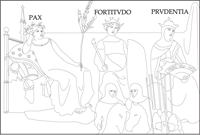 Fig. 6.30. Detail of the virtues from the Allegory of Good Government.Examination of several details in the studiolo reveals a similar interweaving of action and contemplation. Virginia Tenzer has noted that the surfaces against which the sword and mace rest are decorated with vegetal traceries of olive, mustard, and mulberry. The olive branch is associated with peace, the mustard plant with humility and faithfulness, while the mulberry is an attribute of Minerva, goddess of practical wisdom and war. The sword is itself a conflation of the "pen versus sword" dialectic. In addition to its use as a weapon, the sword was a well-known symbol for the image of Justice (as depicted in the ducal palace's Door of the Virtues) and also for the art of Rhetoric. In the ducal library's splendidly illustrated manuscript of Martianus Capella's De nuptiis philologiae et mercurii, Rhetoric is depicted carrying a sword and wearing armor beneath her robes.53 In the official portrait with Guidobaldo, from 1476, Federico is similarly portrayed.
Fig. 6.30. Detail of the virtues from the Allegory of Good Government.Examination of several details in the studiolo reveals a similar interweaving of action and contemplation. Virginia Tenzer has noted that the surfaces against which the sword and mace rest are decorated with vegetal traceries of olive, mustard, and mulberry. The olive branch is associated with peace, the mustard plant with humility and faithfulness, while the mulberry is an attribute of Minerva, goddess of practical wisdom and war. The sword is itself a conflation of the "pen versus sword" dialectic. In addition to its use as a weapon, the sword was a well-known symbol for the image of Justice (as depicted in the ducal palace's Door of the Virtues) and also for the art of Rhetoric. In the ducal library's splendidly illustrated manuscript of Martianus Capella's De nuptiis philologiae et mercurii, Rhetoric is depicted carrying a sword and wearing armor beneath her robes.53 In the official portrait with Guidobaldo, from 1476, Federico is similarly portrayed.
31 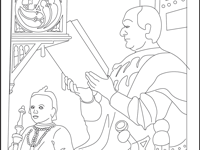 Fig. 6.31. Double Portrait of Federico and Guidobaldo da Montefeltro.Throughout the studiolo, visual and linguistic ornament provides ductile channels for narrative interpretation. Whether originating from the studiolo images according to an iconographic program or within the observer's imagination from remembered associations or a combination of both, these interpretations would be guided by rhetorical persuasion as a narrator deemed appropriate. To this end, the images and their architectonic arrangement offered a theater of empathy (theos, seeing) for the complementary influences of narrator and audience.
Fig. 6.31. Double Portrait of Federico and Guidobaldo da Montefeltro.Throughout the studiolo, visual and linguistic ornament provides ductile channels for narrative interpretation. Whether originating from the studiolo images according to an iconographic program or within the observer's imagination from remembered associations or a combination of both, these interpretations would be guided by rhetorical persuasion as a narrator deemed appropriate. To this end, the images and their architectonic arrangement offered a theater of empathy (theos, seeing) for the complementary influences of narrator and audience.
32At the end of chapter two, I described several examples of etymological play and ethical fabulation from imagery in the east wall. Further evidence of rhetorical play is found in the basket of fruit in the central panel, where pomegranates burst with ripeness.54 From visual and linguistic parallels between an exploding grenade and ripened pomegranate,55 we discern a subtle reference to the interdependence of Duke Federico's leadership and the prosperity of Urbino by the mutual benefits of action (war) and contemplation (peace). This theme encircles the chamber in an ornamental interplay of olive branches (on the bench legs) and pomegranates (on the corresponding pilaster bases behind).
33 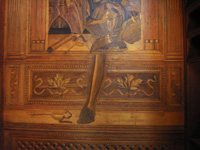 Fig. 6.32. Close proximity of olive branch and greave (peace and war).From Federico's perspective, the narrative "significance" of these images could be tailored to the occasion. On one hand, it might be emphasized that the dukedom benefited from the duke's active skills at warfare. Conversely, it might as easily be presented that Urbino's prosperity, exemplified by the palace, the studiolo, and the chamber's contents, resulted from the peace secured by Montefeltro's prudent diplomacy. This might appear to be a splitting of hairs, yet such distinctions were significant for such writers as Castiglione and Alberti's protégé Landino, who states: "It has not escaped you [Duke Federico] that those who have written about social and civic life have divided the whole subject into peace-time and war-time endeavours, pointing out that the first must be sought for their own sake, and the other not for themselves at all but only to recover the first."56 Castiglione notes that the life of the prince ought "to partake both of the active and of the contemplative, as much as may comport with his people's weal."57
Fig. 6.32. Close proximity of olive branch and greave (peace and war).From Federico's perspective, the narrative "significance" of these images could be tailored to the occasion. On one hand, it might be emphasized that the dukedom benefited from the duke's active skills at warfare. Conversely, it might as easily be presented that Urbino's prosperity, exemplified by the palace, the studiolo, and the chamber's contents, resulted from the peace secured by Montefeltro's prudent diplomacy. This might appear to be a splitting of hairs, yet such distinctions were significant for such writers as Castiglione and Alberti's protégé Landino, who states: "It has not escaped you [Duke Federico] that those who have written about social and civic life have divided the whole subject into peace-time and war-time endeavours, pointing out that the first must be sought for their own sake, and the other not for themselves at all but only to recover the first."56 Castiglione notes that the life of the prince ought "to partake both of the active and of the contemplative, as much as may comport with his people's weal."57
34In Federico's time, war was not viewed pejoratively. For a condottiere in particular, the delicate balance of war and peace was essential for the prosperity of the lands and people under his protection, as well as the artists and scholars supported at his court. Imbalance between modes of action and contemplation could cause severe repercussions.58 On a practical level, if there were no prospects for battle or for preserving the peace, there would be no lifeblood economy for cities such as Federico's Urbino and Malatesta's Rimini. If on the other hand warfare were unceasing, resources would be diverted from such peaceful intellectual pursuits as fabricating studioli. Castiglione notes: "To be always at war, without seeking to arrive at the end of peace, is not permitted. . . . [I]t is a monstrous thing and worthy of blame for men to show themselves valiant and wise in war and in peace and quiet to show themselves ignorant and of so little worth that they know not how to enjoy their happiness."59 The virtuous prince, or condottiere, would comport most closely by his people's weal, it was believed, by fighting for peace.
35 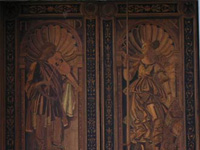 Fig. 6.33. Intarsiated figures of Apollo and Minerva.Examples of such prudent leadership were found in historical narratives and contemporary portraiture of illustrious heroes, such as those executed by Taddeo da Bartolo in the antechapel of Siena's Palazzo Pubblico (1414) and by Andrea Castagno for the Villa Carducci (1450). Cheles notes that two leaders depicted in these cycles, Bartolo's Scipio Africanus and Castagno's Queen Tomyris, hold a spear (the weapon of Minerva) with its point turned to the ground, a motif found at Urbino in the intarsiated door leading from the Sala dei Angeli to the Sala del Trono, where Minerva is paired with Apollo. Representative of magnanimity and peaceful intent, this gesture is also found in numerous antique Roman coins featuring "Mars, the pacifier," where the god of war holds his spear turned downward while fixing his gaze on an olive branch in his other hand.60 Resemblance to the image of Peace in Lorenzetti's fresco does not seem chance; it is consistent with the mantra that balance between peace and war, with emphasis placed on peace, affords prosperity.
Fig. 6.33. Intarsiated figures of Apollo and Minerva.Examples of such prudent leadership were found in historical narratives and contemporary portraiture of illustrious heroes, such as those executed by Taddeo da Bartolo in the antechapel of Siena's Palazzo Pubblico (1414) and by Andrea Castagno for the Villa Carducci (1450). Cheles notes that two leaders depicted in these cycles, Bartolo's Scipio Africanus and Castagno's Queen Tomyris, hold a spear (the weapon of Minerva) with its point turned to the ground, a motif found at Urbino in the intarsiated door leading from the Sala dei Angeli to the Sala del Trono, where Minerva is paired with Apollo. Representative of magnanimity and peaceful intent, this gesture is also found in numerous antique Roman coins featuring "Mars, the pacifier," where the god of war holds his spear turned downward while fixing his gaze on an olive branch in his other hand.60 Resemblance to the image of Peace in Lorenzetti's fresco does not seem chance; it is consistent with the mantra that balance between peace and war, with emphasis placed on peace, affords prosperity.
36Comparable images are found in Montefeltro's personal iconography. A medal cast in 1468 in honor of Federico by Clemente da Urbino includes the astrological signs of Mars, Venus, and Jupiter, encircled by the inscription: "Fierce Mars and the Cytherean Venus, in conjunction with the most high god of Thunder, equally contribute to your power and influence your destiny."61 In the pantheon of the Greek and Roman gods, Harmony/Concordia was the offspring of the god of war and the goddess of love: as daughter of Aphrodite/Venus, Concordia was goddess of marital and civic harmony; as daughter of Ares/Mars, she represented harmonious action in war. Later, in Ripa's Iconologia (1603) the emblem of Concordia includes a plate and crown with bursting pomegranates, an image that is front and center in the Urbino studiolo's east wall.
37Federico's own intarsiated portrait reflects the influence of this imagery (see fig. 6.1). Like Scipio, Tomyris, and Minerva, Federico holds a spear with its point turned downward. Unlike the others, however, the duke is depicted not in battle regalia but rather in humanist robes. This manner of dress literally embodies the Ciceronian phrase "Let arms to the toga yield" that Piccolomini/Pius II had included in his treatise on an ideal education, composed for the king of Hungary in 1450.62
38During his own education, Federico dreamed of emulating the deeds of Scipio, the famed general whose defeat of Hannibal and Carthage ensured regional supremacy for the Republic of Rome. Montefeltro's master, Vittorino da Feltre, advised him otherwise. "I do not wish you to become Scipio, but Alexander: like you, he was the son of a prince, and a prince himself."63 Vittorino predicted, in a letter sent to Guidantonio da Montefeltro, that Federico would be not only a military leader (dux) but moreover a philosopher, embodying the ideals described by Plato in the Republic.64 With arms at rest and instruments of scholarship and "right" leisure as if in mid-use, the studiolo conveys the essence of philosophic rule: the armament of one's body must be matched by a mind well armed with reason.65
^top6.3 The Gallery of the Illustrious (Uomini Illustri)
 Fig. 6.34. Illustrious men, north wall, Urbino studiolo. Fig. 6.34. Illustrious men, north wall, Urbino studiolo.North Wall Encomia |
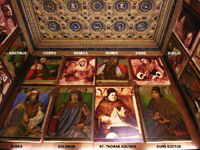 Fig. 6.35. Illustrious men, east wall, Urbino studiolo. Fig. 6.35. Illustrious men, east wall, Urbino studiolo.East Wall Encomia |
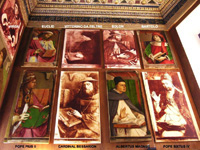 Fig. 6.36. Illustrious men, south wall, Urbino studiolo. Fig. 6.36. Illustrious men, south wall, Urbino studiolo.South Wall Encomia |
 Fig. 6.37. Illustrious men, west wall, Urbino studiolo. Fig. 6.37. Illustrious men, west wall, Urbino studiolo.West Wall Encomia |
39The portraits of the 28 uomini illustri greatly illuminate the scope and demeanor of scholarship pursued by Federico and his court.66 Each theologian, philosopher, poet, lawyer, historian, and doctor represented an exemplary position concerning the nature and uses of wisdom—ancient and modern, sacred and profane, Aristotelian and Neoplatonist. The precise mixture of illustrious heroes reflects Federico's interpretation of the well-established tradition of surrounding oneself with worthy examples for imitation (and emulation) in one's affairs.67 Castiglione notes, "Every man must understand himself and his own powers, and govern himself accordingly, and consider what things he should imitate, and what things he ought not."68 To this end, Machiavelli offers a (modest) metaphor of archery:
Men walk almost always in the paths trodden by others, proceeding in their actions by imitation. Not being always able to follow others exactly, nor attain to the excellence of those he imitates, a prudent man should always follow in the path trodden by great men and imitate those who are most excellent, so that if he does not attain to the greatness, at any rate he will get some tinge of it. He will do as prudent archers, who when the place they wish to hit is too far off, knowing how far their bow will carry, aim at a spot much higher than the one they wish to hit, not in order to reach this height with their arrow, but by help of this high aim to hit the spot they wish to.69
40Though some debate continues about the arrangement of these portraits, Pasquale Rotondi's proposal remains the most satisfactory.70 According to Cheles, the top tier of the paintings manifests an encyclopedic program, embodying "almost a complete spectrum of the leading intellectual fields of the time,"71 while the bottom register is composed primarily of theologians and the Church Fathers.72 En masse, the group embodies various paths to wisdom that would furnish the duke with intellectual and moral equipment for governance. Ensembles within the group provide insight into contemporary philosophical debates.
41The pairing of Thomas Aquinas and Duns Scotus, for example, is emblematic of ongoing friction between the Franciscan and Dominican Orders.73 Ripples from this dissent are evident in Vespasiano's biography, in which Federico is said to rate "St. Thomas as clearer than Scotus though less subtle."74 The portrait of Aquinas is placed in a symbolically choice location, directly above the image of the ideal city at the east wall, but we find Scotus's name—and not Aquinas's—in the company of Plato, Seneca, and Tulio (Cicero) in the intarsia. In the dialectics of the day, this arrangement was equivalent to a "balanced scorecard," in which word and image were subjects of delicate diplomacy.75 With this example we detect the well-measured influence of Cardinal Bessarion, who in his In calumniatorem Platonis refers to both Aquinas and Scotus in his reconciliation of Plato with Aristotle, whose portraits are also fittingly next to each other.76 Similarly, the Franciscan pope Sixtus IV, who writes that Scotus and Aquinas differed in words but were of one mind, is portrayed with the Dominican Albertus Magnus.77
42Other notable pairings include Vittorino da Feltre, Federico's "very holy teacher," whose mathematical inclinations placed him at the side of the ancient geometer Euclid, shown with a compass, an object found in both studioli. Cicero and Seneca, representing eloquence and ethical political action, are paired in name among books contained in the north wall as well as by their portraits at the east wall.78 Virgil and Homer, whose names are also twinned in the intarsia, are similarly paired. Their poetic works provided such early humanists as Dante and Petrarch, represented in the lower register of the west wall, with a defensible springboard for their writings. Ptolemy, the paternal figure of astronomy, is coupled with Boethius, whose De institutione musica was included in Vittorino's curriculum at the Ca' Zoiosa for the study of musical theory.
43The association of good laws with the health of the city and its citizens may be detected in the pairing of Solon, whom Aristotle credits with establishing a well-tempered constitution for the city-state of Athens,79 and Bartolus, a lawyer renowned for his fair judgment. Meanwhile, the presence of Pietro d'Abano80 and Hippocrates reflects a special interest at Urbino in recondite principles of astrobiological medicine and its capacity to temper the constitutions of individuals. These arrangements also refer to a broader debate concerning the preeminence of medicine or law and the nature of their respective practices. Collucio Salutati wrote that law was handed down by God at Sinai and as such embraces moral philosophy, whereas medicine, being empirical and experimental, belonged to the mechanical arts rather than the sciences. Poggio Bracciolini and Leonardo Bruni countered that medicine was derived from the universals in Natural Philosophy and that the practice of lawyers, being derived from the situational contingencies of Roman law, was akin to such mechanical arts as cooking, weaving, and carpentry.81
44Physical gestures in several portraits may be traced to Quintilian's Institutio oratoria, "a work which had considerable influence on Renaissance educationalists, including Vittorino." In particular, Cheles cites the "OK" sign made by Petrarch: "If the first finger touches the middle of the right-hand edge of the thumb-nail with its extremity, the other fingers being relaxed, we shall have a graceful gesture well suited to express approval or to accompany statements of facts, and to mark the distinction between our different points."82
45Noting the portraits of Aristotle, Hippocrates, Albertus Magnus, and Dante, Cheles again cites Quintilian's treatise: "The following short gestures are also employed: the hand may be slightly hollowed as it is when persons are making a vow, and then moved slightly to and fro, the shoulders swaying gently in unison: this adapted to passages where we speak with restraint and almost with timidity."83
46Encoded within the paintings, then, are physical gestures deemed exemplary for rhetorical persuasion.84 This matter also concerned Alberti, who in De pictura consults Cicero in his discussion of gestures befitting a painting's thematic and physical arrangement: "Nature provides . . . that we mourn with the mourners, laugh with those who laugh, and grieve with the grief-stricken. These feelings are known from movements of the body."85
^top6.4 On the Physicality of Thought: Solitude, Solicitude, and Cogitatio
47Demonstrating a personal regimen later recommended by Machiavelli, Federico remained physically and intellectually active during times of peace by conducting military exercises every dawn and dedicating his afternoon hours to readings and disputation.86 "After rising from [the] table [at midday] and giving audience to all who desired," Federico would repair to his studiolo, at times accompanied by a reader who would read selections from the duke's favorite authors, including Livy and Augustine.87 According to Vespasiano, Montefeltro continued his education to the end of his life by studying with the various scholars invited to the court, including Maestro Lazzaro, with whom he disputed on the "difficult passages" of Aristotle's Ethics and Politics.88 He proceeded to Natural History, Physics, and the theological works of Aquinas and Scotus. Federico's keen interest in logic and disputation would be commemorated in the Gubbio studiolo by his portrait with the goddess of Dialectic. Just before his death, Vespasiano reports, the duke turned his attention to readings of mathematical treatises with the "great philosopher and astrologer" Paul of Middleburg.89
48Federico's withdrawal to the studiolo with his reader reflected a traditional mode of learning and repose by which the duke could "feed upon that food" that was found in the writings of his illustrious heroes and "converse" with them about "the reasons for their deeds." Mary Carruthers has noted that medieval reading was conceived not as a solipsistic activity but more like a "hermeneutical dialogue" between two memories, as a process "whereby one memory engages another in a continuing dialogue that approaches Plato's ideal (expressed in Phaedrus) of two living minds engaged in learning."90 This manner of reading trained the mind in the habit of familiarizing itself with the "foods" of its preference, digesting and incorporating the wisdom of another's text into oneself. As Gregory the Great states: "We ought to transform what we read into our very selves, so that when our mind is stirred by what it hears, our life may concur by practicing what has been heard."91 Reading and feeding were complementary activities. Federico's support of the monastic tradition of reading lessons from scripture and history during meals reflects the continuation of the ancient practice of ruminative familiarization at Urbino.92
49 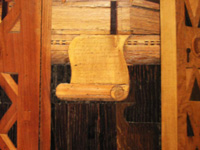 Fig. 6.38. Note in northwest wall of Gubbio studiolo.Likewise, the slips of paper (notae) found in each studiolo, peeking out of books or "pinned" to the intarsia, represent another medieval technique of impressing significant passages into the memory. Petrarch, whose writings offered subsequent humanists a bridge to medieval and ancient traditions, had composed a private dialogue with Augustine in which the saint encourages him to transcribe wholesome maxims from his readings onto notae and into the margins of his manuscripts. This would provide, he says, "hooks" in the memory to assist with the poet's meditation, "so that whenever or where some urgent case of illness arises, you have the remedy as though written in your mind."93 Such moral elixirs as the phrase "virtutibus itur ad astra," boldly inscribed on a nota and "nailed" to a shelf at Urbino, would have been an especially useful mnemonic for the various modes of solitude afforded by the studiolo.
Fig. 6.38. Note in northwest wall of Gubbio studiolo.Likewise, the slips of paper (notae) found in each studiolo, peeking out of books or "pinned" to the intarsia, represent another medieval technique of impressing significant passages into the memory. Petrarch, whose writings offered subsequent humanists a bridge to medieval and ancient traditions, had composed a private dialogue with Augustine in which the saint encourages him to transcribe wholesome maxims from his readings onto notae and into the margins of his manuscripts. This would provide, he says, "hooks" in the memory to assist with the poet's meditation, "so that whenever or where some urgent case of illness arises, you have the remedy as though written in your mind."93 Such moral elixirs as the phrase "virtutibus itur ad astra," boldly inscribed on a nota and "nailed" to a shelf at Urbino, would have been an especially useful mnemonic for the various modes of solitude afforded by the studiolo.
50Of course, Federico required a different sort of privacy from that prescribed by Petrarch. Although a poet such as Pietro Bembo, a future member of Guidobaldo's court,94 recommended extended periods in a countryside villa distant from worldly cares, the privacy for a prince and military leader was somewhat more limited.95 For Federico in particular, solitude did not necessarily signify tranquillity but often meant a state of acute edge-of-the-seat concentration that was emotional and whole-body, not only mental.
51To better appreciate this active mode of rumination, we refer to Aquinas, who in his digest of Cicero's memory rules had modified the word solitudo to sollicitudo. Carruthers describes this term as an "attitude of mind which vexes or 'worries' [as a dog worries a bone] the emotions and the sensations in order to engage in the activity of making, storing, recalling memory images, to the exclusion of outside strepitus [confusion, noise] and bustle even when it is going on immediately around one."96
52A small room teeming with images might seem to our eye a place too busy, too stimulating, for placid thought. However, in a long-standing tradition, sensory agitation was believed to activate the mind and, in particular, the memory, enabling one to break from the strepitus97 of the external world to focus inward on the matters at hand. Augustine describes the active nature of thought through the term cogitatio: "Once they [thoughts] have been dispersed, I have to collect them again, and this is the derivation of the word cogitare, which means to think or to collect one's thoughts. For in Latin the word cogo, meaning I assemble or I collect, is related to cogito, which means I think, in the same way as ago is related to agito."98
53Agito, "to move, to rouse," describes the fundamental restlessness of cogitatio, which passes "with a wandering movement"99 among things sensed and stored as sense-images (imagines) in the memory. Through cogitatio, "a combinative or compositional activity of the mind,"100 the mind is brought under its own gaze to select, arrange and recombine its contents according to circumstance.101 The ability to concentrate, to shift focus adroitly from one's immediate surroundings, was essential for Federico to form prompt and sound judgments, whether in the course of battle or in civil affairs. Rather than a retreat from everyday concerns, solitude-as-solicitude trained one's habits of concentration in proximity to worldly responsibilities, as a calm in the eye of a storm.102 Leonardo Giustiniani describes the challenging nature of this practice: "In all one's life there is no task so difficult or more worthy of a great man than either not to be moved, or if one's mind is already disturbed, to be able to collect it easily, though it has been scattered far and wide, and place it in a safe and tranquil haven."103 The sensuous intensity of the studioli would have offered the Montefeltro dukes ideal settings for the mind's workings, as places wherein and whereby to shut out strepitus and "collect" themselves to address their duties of governance.
54Throughout the day, as Vespasiano emphasizes, Montefeltro made himself readily accessible to provide counsel for citizens and visiting dignitaries,104 whether between courses at a meal, al fresco in one of the palace courtyards, or in the Sala d'Udienza. If the issue could not be promptly resolved, Federico would withdraw with his reader to the studiolo, where, surrounded by the countenances of the uomini illustri and with recourse to their writings, Federico would give the matter due consideration. His judgments, which were usually "dispatched on the same day," were said not to have been "bettered if they had come before Bartolo of Sassoferato," the famed lawyer included among the uomini illustri.105
^top6.5 The Roman Cubiculum
55Understandably, one might be inclined to distinguish contemplative from governmental activities in the studiolo.106 However, contemplative activities were not viewed separately from Federico's responsibilities of governance. The character and composition of the Urbino studiolo, including its proximity to the Sala d'Udienza, would have had as much to do with its function as a judicial chamber as with a propagandistic display of magnificentia.
56In the Art of Building, Alberti had recommended an arrangement of several interconnected rooms to filter between the public and private zones of a palace. "Before the innermost rooms should be an atrium or hall, where clients can await the chance to discuss business with their patrons, and where the prince may sit on the tribunal and give judgment."107 Alberti's humanist interests in ancient Roman texts and architectural ruins directly influenced his writings on these matters. In his discussion of the appropriate arrangement of audience chambers in a princely dwelling, Alberti notes: "I find in Seneca that Graccus, followed by Livius Drusus, was the first not to grant everyone an audience at once, but to divide up the people, and receive some in private, some in company with others, and some en masse, thus distinguishing close friends from secondary acquaintances. If you are wealthy enough, you may prefer to have a number of different doors; these will enable you to dismiss your visitors in a different part from where you had earlier received them, and to exclude any whom you do not wish to receive, without causing offense."108
 Fig. 6.39. Axonometric detail of the Urbino ducal palace. Fig. 6.39. Axonometric detail of the Urbino ducal palace. |
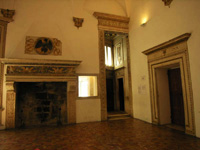 Fig. 6.40. The salon d'udienza (audience chamber). Fig. 6.40. The salon d'udienza (audience chamber). |
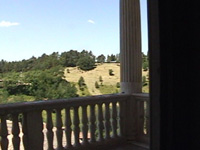 Urbino Studiolo Loop Urbino Studiolo Loop |
|
57We find this arrangement at the Urbino studiolo (chamber #1), which is connected to three separate rooms—the Sala d'Udienza (#5), the duke's dressing room (#3), and the exterior loggia (#2). In turn, separate doors connect the loggia with the more public salon and more private bedchambers. The duke would have been able to receive certain esteemed visitors in the studiolo—while others waited in the salon—and proceed with them to the external loggia to conclude or continue their discussion while enjoying the magnificent view of the surrounding countryside. Afterward, the guest could depart through the door to the salon rather than having to return by way of the studiolo. By then, another guest could have been admitted to the studiolo, while others waited elsewhere, perhaps in the salon. The architectural arrangement of these rooms would have set the stage for the duke, Ottaviano, and court officials to have enacted the diplomatic choreography recommended by Seneca and Alberti.
58In addition to classical authors, Alberti and Federico witnessed examples of the interplay of architecture and rhetoric through ongoing archaeological excavations in the Roman forum. Texts and ruins revealed that certain areas of the Roman dwelling were designated for "entering into thought." The spatial comportment and ornament of these locations articulated an ambience conducive for thought by providing the sensuous conduits for guiding one's mindfulness to the open construction site of one's memory.
59In book 2 of De oratore, an inquiry into the ideal philosophical orator, Cicero offers a few examples of these domestic settings.109 The character Antonius recounts how Simonides of Ceos had discovered the principles of architectural mnemonics from the banquet table by placing images (imagines) in an orderly set of architectural locations (loci) visualized in his memory.110 Elsewhere in the dialogue, Antonius and Crassus take a siesta to contemplate their responses to matters that others had placed before them. Antonius chooses to compose his thoughts while walking in the portico.111 Crassus, in contrast, retires to an exedra, where he devotes his midday respite to "the closest and most careful meditation."112
60Aside from the portico and exedra, there is another chamber in the Roman house, the cubiculum, to which Crassus (and Cicero, who had purchased Crassus's house) could have repaired to meditatively compose himself and his judgments. Obscure in its origins and function, this chamber remains to this day somewhat misunderstood. The Oxford English Dictionary renders cubiculum (as well as its derivative cubicle) as "bedroom," a logical assessment given its Latin root, cubare, to recline. Otherwise, Vitruvius mentions the cubiculum once, noting that "private rooms [cubicula] and libraries should look to the east, for their purpose demands the morning light."113 Pliny the Younger, as we have seen, offers a more informative comment in his Epistolae, evoking a studious ambience: "My cubiculum has a press let into the wall which does duty as a library, and holds books not merely to be read, but read over and over again."114
61 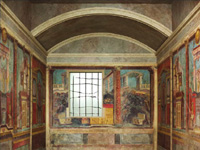 Fig. 6.41. The cubiculum from the villa of P. Fannius Synistor, 50-40 BCE.A well-preserved cubiculum, extracted from the villa of Fannius Synestor at Boscoreale, may be visited at the Metropolitan Museum of Art in New York. In accord with traditional scholarship,115 the label describes the cubiculum as a bedroom; to this end, a small couch was previously placed in the room (it has been excluded following a recent restoration). Although this piece of furniture was not original to the chamber, its inclusion was not necessarily erroneous. The error lies in the assumption that the couch would have been used for sleeping and not for other activities. As Philo, envoy to the emperor Caligula, observed: "The couches upon which the Romans recline at their repasts shine with gold and pearls."116 Repasts and siestas were not used merely as periods of eating and sleeping, as their English translations suggest. Instead, as may be gathered from Cicero, this period of the day and the setting of the cubiculum would have been used for "business, for conversation with particular friends, for reading and contemplation."117 Carruthers elaborates:
Fig. 6.41. The cubiculum from the villa of P. Fannius Synistor, 50-40 BCE.A well-preserved cubiculum, extracted from the villa of Fannius Synestor at Boscoreale, may be visited at the Metropolitan Museum of Art in New York. In accord with traditional scholarship,115 the label describes the cubiculum as a bedroom; to this end, a small couch was previously placed in the room (it has been excluded following a recent restoration). Although this piece of furniture was not original to the chamber, its inclusion was not necessarily erroneous. The error lies in the assumption that the couch would have been used for sleeping and not for other activities. As Philo, envoy to the emperor Caligula, observed: "The couches upon which the Romans recline at their repasts shine with gold and pearls."116 Repasts and siestas were not used merely as periods of eating and sleeping, as their English translations suggest. Instead, as may be gathered from Cicero, this period of the day and the setting of the cubiculum would have been used for "business, for conversation with particular friends, for reading and contemplation."117 Carruthers elaborates:
[Synestor's cubiculum is] just large enough for a single couch. The word Cicero uses, lectulus, meant not just a bed for sleeping, but one for conversation and study—perhaps because of its partial homophony with legere, lectus, "gather by picking" (like flowers) and "read." Its walls are all painted in panels, intercolumnia, with fantastic, theatrical architecture. . . . The murals make a "theater" of locations that, apparently, was assumed to be conducive to inventional meditation—not because it provided subject-matter, but because the familiarity, the route- (and rote)-like quality, of such a patterned series in one's most tranquil space could help provide an order or "way" for compositional cogitation.118
62 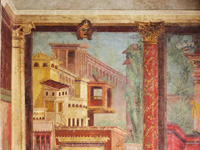 Fig. 6.42. Mnemonic ornament from the cubiculum from the villa of P. Fannius Synistor, 50-40 BCE.In addition to the peripatetic mode of composition preferred by Antonius, Romans meditated in a reclined position—at times in a more public exedra, at others in the more private cubiculum.119 The linguistic twining of bed and reading, via Cicero's lectulus, continued into the Renaissance: Castiglione includes the interpolation as an exemplary pun in his discussion of an ideal courtier's sense of humor.120 However, as evident in such quattrocento portraiture as Antonello da Messina's portrait of St. Jerome, the posture for thought had shifted from a reclined to a seated position; Cicero's "daybed" had been replaced as the furniture-for-musing by the reading lectern.
Fig. 6.42. Mnemonic ornament from the cubiculum from the villa of P. Fannius Synistor, 50-40 BCE.In addition to the peripatetic mode of composition preferred by Antonius, Romans meditated in a reclined position—at times in a more public exedra, at others in the more private cubiculum.119 The linguistic twining of bed and reading, via Cicero's lectulus, continued into the Renaissance: Castiglione includes the interpolation as an exemplary pun in his discussion of an ideal courtier's sense of humor.120 However, as evident in such quattrocento portraiture as Antonello da Messina's portrait of St. Jerome, the posture for thought had shifted from a reclined to a seated position; Cicero's "daybed" had been replaced as the furniture-for-musing by the reading lectern.
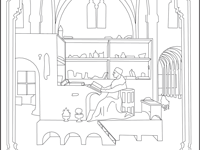 Fig. 6.43. Drawing of St. Jerome in His Study. Fig. 6.43. Drawing of St. Jerome in His Study. |
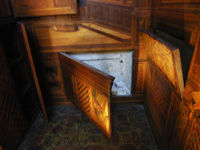 Fig. 6.44. Operable intarsia panels folded open, Urbino studiolo. Fig. 6.44. Operable intarsia panels folded open, Urbino studiolo. |
 Fig. 6.45. Reconstruction of lectern arrangement. Fig. 6.45. Reconstruction of lectern arrangement. |
|
63In each of the Montefeltro studioli, lecterns figure prominently. At Urbino, a large lectern is featured in the miniature studiolo: adjacent panels fold out to form what Rotondi has proposed as a bench and reading stand. It is doubtful, however, that this arrangement accounts for the "tavola" that Baldi places toward the middle of the chamber.121 On closer scrutiny, the physical components of Rotondi's proposal do not appear sturdy enough to support this argument. More likely, this design gesture gave the duke another visual delight to demonstrate to visitors, particularly with regard to its proximity to the studiolo-within-a-studiolo. Because the studiolo was used for reading and letter-writing, the tavola was probably a freestanding intarsiated lectern, as was then popular.122 Perhaps it was similar to the mobile lectern depicted at Gubbio.
64From all accounts, it is apparent that Federico used the Urbino studiolo in a manner akin to the Romans' use of the cubiculum. In the Sala d'Udienza, Federico received visitors seeking counsel. After hearing their news or requests, Federico would retire to the studiolo, where the presence of a well-learned reader, Maestro Lazzaro, would have offered a worthy adviser to dispute the finer points of pertinent texts, political as well as theoretical, assisting the duke to arrive at a decision.
65To draw an even more concrete connection between the studiolo and cubiculum, we might return, in full, to the phrase from Pliny's Epistolae mentioned earlier: "Parieti eius cubiculi mei in bibliothecae speciem armarium insertum est quod non legendos libros sed letitandos capit."123 In his analysis, Cheles crops cubiculi mei from his translation of the phrase, perhaps because of its traditional misinterpretation as "bedroom."124 When we restore to the cubiculum its studious significance, we realize that Cheles was more correct in his comparison than he may have realized: the physical description of Pliny's cubiculum concurs precisely with the physical arrangement of the Urbino studiolo.
66During World War II, when the studiolo contents were dismantled and temporarily removed to the castle at San Leo, a blind cavity—not a concealed structural pilaster or vertical conduit—was discovered behind the image of the ideal city.125 It is plausible, then, that the book press had been built precisely to fulfill Pliny's specifications, providing storage for equipment appropriate to a study126 and books "to be read and read again"—in this case, authoritative texts and documents to be readily consulted, as the duke (and his interlocutor) desired.
^top6.6 FEDE+RICO and the Faithlessness of Princes
67Among the affairs Federico conducted in the studiolo at Urbino, not all were ruminative, convivial, or particularly civil. Although Dora Thornton states that the Urbino studiolo would "surely" not have been used for "the most secret negotiations of Federico's government, which would properly have taken place in his bedchamber,"127 an episode recounted by Vespasiano suggests otherwise: "While the Venetian messenger was at Urbino it chanced that one of the Duke's chief officers was in his closet [studiolo], and after the Venetian had left, he turned to the Duke and said, 'Eighty thousand ducats is a good price simply for staying at home'; whereupon the Duke replied wisely, 'To keep faith is still better, and is worth more than all the gold in the world.'"128
68In 1482, Pope Sixtus IV had formed an alliance with Venice, whose expansionist interests had turned toward Ferrara, home of Federico's long-standing allies, the d'Este. Sensing that Federico would not agree to carry out this strategy, the Venetians sent an ambassador to bribe Federico to "stay at home." Federico, fearing that the balance of power would shift too far in favor of the Venetians, refused the offer and led the forces of Florence, Milan, and the king of Naples to defend Ferrara.129
69The outcome of quattrocento Italian politics and warfare was often determined by what would today be considered behind-the-scenes negotiations. In these matters of political chess, the studiolo imagery would have offered Montefeltro an effective means to narrate a firm but lighthearted diplomacy. For example, following the Venetian messenger's proposition, Federico could have conveyed his guest's attention to the personification of Faith in the south wall (standpoint #1 in Fig. 6.38), and then to an adjacent cabinet in which the letters F E D E are found on four facets of an octagonal inkwell. Here, in a demonstration of rhetorical chreia (an edifying anecdote), the duke could pause to reflect on the virtue of religious devotion and its earthly counterpart, loyalty. If the messenger were to ask what would become of the "riches" represented by the second half of the duke's name (since the remaining four facets of the inkwell are "obscured" from view), Montefeltro could redirect his narrative to the fronts of two box-drawers located directly behind them, in the northwest corner of the studiolo (standpoint #2). There they would find a drawer with "RI" in its rightful slot, while a drawer displaying "CO" had been "removed" and "placed" on the bench below.
70Federico might then remind the messenger of a previous occasion, in 1467, when his contract with the king of Naples had terminated and Venice attempted to hire away his services. When the Venetians presented a letter of their offer, Federico shrewdly passed it along (unopened) to the commissaries of the Italic League, as a gesture of loyalty to the king, his most loyal patron.130 Federico might then have diplomatically concluded (as his biographer Vespasiano would later write) that "all those to whom he gave his word bear witness that he never broke it . . . whether under obligation or free."131
71An observant messenger would have noticed that the letters on the drawers for "FE" and "DE" were obscured, a subtlety that heightens the spatial experience (and underscores the intent) of this trope on the duke's name, which means literally "rich with faith."132 A keenly observant messenger would have noticed that the object covering the "DE"—an ermine—was also found beneath two of the three theological virtues. And even if the messenger were not curious about these subtleties, the duke would likely have pointed them out, jesting that the intarsists had absentmindedly left the bench below the portrait of Faith "upturned," hiding the third ermine.
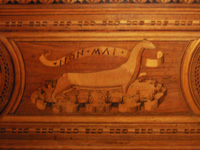 Fig. 6.51. Image of ermine and phrase "non mai," Gubbio studiolo. Fig. 6.51. Image of ermine and phrase "non mai," Gubbio studiolo. |
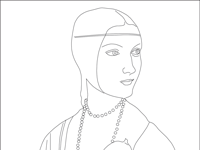 Fig. 6.52. Leonardo da Vinci's portrait of Cecilia Gallerani. Fig. 6.52. Leonardo da Vinci's portrait of Cecilia Gallerani. |
72Federico would not have needed to explain the significance of this animal, a popular image of purity and loyalty. The accompanying phrase "non mai" (never) refers to the tradition that an ermine would rather die than soil its pure white coat. The messenger would also have noted that the king of Naples had installed Duke Federico as a member of the Order of the Ermine in August 1474: the collar of the order is found dangling from the "DE" box-drawer at Urbino, and (sans ermine) encircling the initials FE DuX in four ceiling coffers at Urbino. The collar is also found at the Gubbio studiolo above the entryway and in Berreguete's portrait of Federico and Guidobaldo. It is also possible, as Raggio suggests, that the ermine and the phrase "non mai" carried more personal associations for Federico, as a declaration of innocence in the assassination of his younger brother, Duke Oddantonio da Montefeltro, in 1444.133
73Apart from its theological significance, faith-as-loyalty appears to have been a scarce commodity in the late quattrocento. According to Machiavelli, "One could furnish an infinite number of modern examples, and show how many times peace has been broken, and how many promises rendered worthless, by the faithlessness of princes."134 Federico was well schooled in these matters. During the Battle of Rimini (1469), in which Federico assisted in the city's defense, forces from Milan and Florence had been promised but did not "keep faith." With his skill in drawing up a clever plan of battle and binding his men to enforce it, Federico won the battle against superior numbers "more by science than by force."135
74Loyalty was evidently a challenge for soldiers as well as princes. A leader, if not directly experienced in these matters, could not evoke the confidence to bind even his own men to enact his strategies.136 In this light, then, "keeping faith" reflected a prince's capacity to harness and conduct the will of others. For his skill in these matters, Federico gained particular renown. In the Apologus to his translation of Plato's De regno, dedicated to Montefeltro on 6 January 1482, Marsilio Ficino plays on the duke's name, describing in a witticism that Federico was known as "a fide regia fideregum" and "ab orbis imperio Orbinatem ducem" by superior intelligences and as "Federicus Urbinas dux" by men.137
75It is at times difficult to regard the honorific titles and humanist panegyrics bestowed on a figure such as Federico da Montefeltro without reservation. This is particularly true when Machiavelli, who writes from a perspective following numerous tides of foreign invasion, lays direct blame for the demise of the Italian nation on the condottiere, whose benign code of military execution he believes had reduced Italy to "slavery and degradation": "They used every means to spare themselves and the soldiers any hardship or fear by not killing each other in their encounters, but taking prisoners without expectation of ransom. They made no attacks on fortifications by night; and those in the fortifications did not attack the tents at night, they made no stockades or ditches around their camps, and did not take the field in winter. All these things were permitted by their military code, and adopted, as we have said, to avoid trouble and danger."138 When we compare Machiavelli's criticisms with specific accounts of Montefeltro's activities, we may discern why Federico had gained the esteem of his contemporaries. On several occasions, Vespasiano underscores how the duke kept faith in the face of daunting opposition and recounts how he led nighttime raids on enemy fortifications.139 Until recently, Montefeltro's reputation, bolstered by biographers and historians, had exculpated him on points for which condottieri were generally held in contempt.
76It is tempting yet misleading to interpret the actions of Federico and his contemporaries according to normative categories of good and bad, or to evaluate their passion for honorifics and panegyrics as either "historically accurate" or "inflated." By entering the thicket of images in the studioli to ponder their meanings and workings, we are thrust into the messy webs of their surrounding culture. Machiavelli's suggestion, for example, that a prince "not deviate from what is good, if possible, but be able to do evil if constrained," must be appreciated in context.140 Although political and military leaders were exhorted to virtues of constancy and temperance, the late quattrocento (and early cinquecento) was not a juste milieu, as Machiavelli illustrates:
Many have imagined republics and principalities which have never been seen or known to exist in reality; for how we live is far removed from how we ought to live, that he who abandons what is done for what ought to be done, will rather learn to bring about his own ruin than his preservation. A man who wishes to make a profession of goodness in everything must necessarily come to grief among so many who are not good. Therefore it is necessary for a prince, who wishes to maintain himself, to learn how not to be good, and to use this knowledge and not use it, according to the necessity of the case.141
Although Machiavelli agrees with the common wisdom that a prince should ideally manifest all of the best qualities and virtues (including his own list of five essential characteristics), he asserts that this is not realistic in practice.142 Human conditions preclude the possibility of possessing or observing all of these qualities, so the prince should be "prudent enough to avoid the scandal of those vices [that] would lose him the state. . . . And yet he must not mind incurring the scandal of those vices, without which it would be difficult to save the state, for if one considers well, it will be found that some things which seem virtues would, if followed, lead to one's ruin, and some others which appear vices result in one's greater security and well-being."143 In other words, a prince's "goodness" might harm his state under certain circumstances, where an act of vice might be necessary to preserve it. "To learn how not to be good, and to use this knowledge and not use it," is a subtle twist of Cicero's definition of prudence as "the knowledge of what is good, what is bad and what is neither good nor bad."144 Machiavelli's recommendation offers a shrewd point of entry into the realm of ethics, the subject Federico disputed exhaustively with his readers.145
77To preserve the state, asserts Machiavelli, a prince must know how to fight by two methods: the laws of men and the force of a beast. As a beast, the prince "must imitate the fox and the lion, for the lion cannot protect himself from traps, and the fox cannot defend himself from wolves."146 Of these two modes, Machiavelli notes, "Those that have been best able to imitate the fox have succeeded best."147 Although martial images throughout the studiolo and palace lionize Montefeltro's Fortitude, it is clear from Vespasiano's biography that Federico inclined naturally to the shrewd action and policy of the fox.
78After Federico assumed command of Urbino in 1444, Sigismondo Malatesta intensified the ancient feud with the Montefeltro by sending letters to Francesco Sforza of Milan and Cardinal Ludovico Scarampo, a papal legate, in which he attacked Federico's character while implicating him in the assassination of Oddantonio. Further, Sigismondo challenged Federico's legitimacy, reasoning that the marriages of two of Count Guidantonio da Montefeltro's sisters to members of the Malatesta family should have entitled him, and not Federico, to rule Urbino.
79Fortunately for Federico, a secretary of the cardinal intercepted and forwarded the letter to Urbino, and on 8 January 1445, Federico's response was delivered to both the cardinal and Sigismondo. In this letter, "a masterpiece of libellous eloquence,"148 Federico lists the various atrocities that Sigismondo had allegedly committed, condemning him to Dante's Inferno. In addition to annulling Malatesta's charges, this letter was later used by Pope Pius II as "evidence" in a trial against Malatesta. Pius II appointed Cardinal Nicholas of Cusa to conduct the proceedings, which concluded with Sigismondo's excommunication and the burning of his straw effigy on the Campidoglio, in the Campo dei Fiori, and on the steps of St. Peter's Cathedral.
80A key to apparent contradictions in Federico's world is reflected in the multifaceted character of virtù. Although often portrayed as the hallmark of inflated humanist rhetoric,149 the exercise of virtù was believed to cultivate a well-tempered character, enabling prince, courtier, and craftsman to maintain a sapient balance regardless of circumstance. In mid-quattrocento Italy, balance was critical to negotiate such intricate intellectual and political matters as the continued strife between church and empire and the reintegration of Byzantine scholarship and culture with the ideologies of the Roman Church following the fall of Constantinople in 1453.150
81Beneath the scholarly hubris and "moralistic patina" that have accumulated around this term,151 exhortations to virtù addressed the delicate workings of the human psyche and, by extension, the fragile nature of human relationships.152 As with the liberal arts, categorical distinctions of the virtues153 were fluid and ever-shifting, affording easier digestion of notions that are otherwise densely intertwined. The roll call of virtues in the works of Castiglione, Landino, and Machiavelli were not perceived, in their own time, as banal panegyrics;154 rather, they approximated an ideal concert (or concord) of actions and responses, offering practical guidelines that could be tailored to contemporary social and political mechanics.155
82 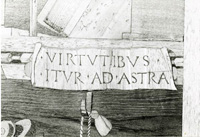 Fig. 6.53. Detail of "virtutibus itur ad astra," north wall, Urbino studiolo.The significance of virtù in the Montefeltro studioli is emphatic. Cheles has discerned a valuable link between the phrase "virtutibus itur ad astra," represented at Urbino, and the opened manuscript of Virgil's Aeneid, displayed on the lectern in the Gubbio studiolo.156 The page shown at Gubbio contains the following passage: "Each has his day appointed; short and irretrievable is the span of life to all: but to lengthen fame by deeds—that is valour's task."157 Elsewhere in the Aeneid we find the phrase "macte nova virtute, puer: sic itur ad astra."158 Selecting the corresponding terms in the Urbino studiolo, the phrase reads "with virtue/valour, so man scales the stars."
Fig. 6.53. Detail of "virtutibus itur ad astra," north wall, Urbino studiolo.The significance of virtù in the Montefeltro studioli is emphatic. Cheles has discerned a valuable link between the phrase "virtutibus itur ad astra," represented at Urbino, and the opened manuscript of Virgil's Aeneid, displayed on the lectern in the Gubbio studiolo.156 The page shown at Gubbio contains the following passage: "Each has his day appointed; short and irretrievable is the span of life to all: but to lengthen fame by deeds—that is valour's task."157 Elsewhere in the Aeneid we find the phrase "macte nova virtute, puer: sic itur ad astra."158 Selecting the corresponding terms in the Urbino studiolo, the phrase reads "with virtue/valour, so man scales the stars."
83Although Virgilian virtù was steeped in military connotations, an aspect fitting to Duke Federico's livelihood, the measure of a prince was determined not only by his valor during war and strife but more acutely by his conduct during times of peace. According to Castiglione, "It is fitting in war, and always, to have all the virtues that make for right—like justice, continence [fortitude], temperance; but much more in time of peace and ease, because men placed in prosperity and ease, when good fortune smiles upon them, often become unjust, intemperate, and allow themselves to be corrupted by pleasures."159 For Federico and his contemporaries, the notion of virtù encompassed the military valor expressed in Virgil's Aeneid, the moral and ethical overtones of pantheistic and Christian wisdom, and the skills demonstrated in the craft of thought and material artifacts. Whether embodied as a virtuous deed, as the virtuous civic setting wherein the deed took place, or as the registration of the deed and its setting by the virtuoso work of an artist, virtù effected empathy among human emotions, the divine, and the sensible realm of materials. As an integration of the visible and invisible, virtù accessed the pantheon of communal memory.
84The role of the architect was pivotal in these matters. As beneficiary of the well-rounded education associated with the cultivation of virtù, the architect was ethically responsible for shaping the actions of men through the built environment. Alberti notes, "There is nothing, aside from virtue, to which a man should devote more care, more effort and attention, than to the acquisition of a good home to shelter himself and his family."160 The virtù of dignified houses enabled families and city-states alike to weather the unpredictable influences of contemporary politics and chance.
^top6.7 The Influence of Politics on Patronage
85In response to the fall of Constantinople, the Peace of Lodi in 1454 unified the five powers of the Italic peninsula—the Papal States (including Urbino), Naples, Venice, Florence, and Milan—into the mutual defense alliance of the Italic League. From its inception, the alliance was tenuous: concessions were made on all accounts in order for agreement to be reached among its intricately intermarried and perpetually embattled members.161 Francesco Sforza, previously a condottiere employed by the Visconti, was installed as duke of Milan to protect the territory from possible dynastic claims made by the French king. This in turn offered stability to the Venetians, who were threatened by Ottoman expansion162 and were concerned about the prospects of a French invasion.
86As a result of this alliance, friendships Federico had cultivated during his itinerant education as a youth—with the Gonzaga, Sforza, d'Este, and Medici—gave the young count a unique opportunity. Admired for his loyalty and shrewd diplomacy, characteristics not commonly associated with condottiere at the time,163 Federico was elected captain of the league.164 Paid during times of war and peace alike, Federico played a pivotal role as arbitrator among the league's members. Although the Italic League endured, officially, for almost 25 years—from the Peace of Lodi to the Pazzi conspiracy of 1478—the powers never ceased to align and realign themselves according to strategic suballiances.
87The perpetual imbalance of these alliances and rivalries directly influenced artistic and intellectual patronage and commerce. In the same year that Alberti visited Urbino (1464) and had his horoscope cast by Jacob of Speier, Federico's astrologer, the newly elected Pope Paul II, disbanded the College of Abbreviators. Recently established by Federico's staunch supporter, the humanist Pope Pius II, the college had provided a lively intellectual center (and a source of gainful employment) for Alberti and such like-minded scholars as Bartolomeo Platina, who had instructed Marsilio Ficino in Greek and would later become the first official librarian of the Vatican Library. Platina, a trained soldier who, like Federico, had studied at the Ca' Zoiosa and served under the famed General Niccolò Piccinino, was chosen by his colleagues to protest the pope's decision. Known for his hot temper as much as his eloquence, Platina was subsequently imprisoned and narrowly escaped execution.165
88The extreme nature of these events reflects the volatile interdependence of politics and scholarship. At the time, Paul II (the Venetian Pietro Barbo) had just won a bitterly contested election over Cardinal Bessarion, a scholar who had emigrated from Byzantium by way of Greece and subsequently became deeply involved in the politics of Venice and of the Holy See. As noted in the encomium on his portrait in the Urbino studiolo, Bessarion had supported the unification of the Greek and Roman Churches as early as 1438. Through his influential treatise In calumniatorem Platonis (1458–69),166 Bessarion sought to resolve the heated philosophical dialectics problematizing this union by reconciling the teachings of Plato and Aristotle. In this treatise, as Paul Kristeller notes: "Bessarion not only defends Plato's life and doctrine against the attacks of [scholars such as] Trapezuntius, but he also describes Plato's contributions to the various fields of learning and then presents Plato's metaphysical doctrines with an emphasis both on their intrinsic merits and on their agreement with Christian theology. Bessarion treats Aristotle with great respect and tends to harmonize him with Plato rather than to criticize him. He often cites the Latin theologians, especially Augustine, Aquinas, and Duns Scotus."167
89  Fig. 6.54. Cardinal Bessarion, among the illustrious men in the south wall of the Urbino studiolo.
Fig. 6.54. Cardinal Bessarion, among the illustrious men in the south wall of the Urbino studiolo.
Extended Caption 24At the Congress of Mantua in 1459, Pius II charged Bessarion and Nicholas of Cusa with convincing Venice to participate in a new crusade to recapture Constantinople.168 As of 1463, Bessarion had been placed in charge of the expanding settlement of Greek émigrés in Venice. Although he had converted to Latin Catholicism in 1438, these positions of authority, held by a Byzantine with a stated agenda to preserve his own vanishing culture, likely posed a threat to members of the Venetian aristocracy and the Holy See. Nonetheless, Bessarion's intellectual and political motivations ingratiated him with humanist leaders and scholars, with whom he openly shared the rarities of his famous library and the benefits of his influence. Bessarion had secured Platina's appointment to the College of Abbreviators, and his secretary, the German mathematician Johannes Müller (Regiomontanus), proved deeply influential in Rome and on the practice of astronomy at Urbino.169 Piero della Francesca, another member of Bessarion's circle in Rome, later received Montefeltro's patronage.170
90As Federico's "wisest, and best of friends," Bessarion was godfather to all three of the duke's sons and exhorted them to study the classics.171 To this end he presented Antonio, whom he baptized in 1450, with Homer's Iliad, in Greek.172 Following Bessarion's death in 1472, Federico served as the executor of the cardinal's will, a task that included the transfer of a major portion of Bessarion's library to Venice, as the foundation for what would become the Library of St. Mark. For nearly two years, thirty chests of books containing rare works of Euclid and Ptolemy—previously inaccessible to Italian scholars—were stored in the cloister of Sta. Chiara, a few hundred meters from the ducal palace at Urbino. The presence of these chests in Urbino from 1472 to 1474 coincides with the beginning of two projects central to Federico's aspirations, the formation of the ducal library and the conception of the studiolo.
91Almost twenty years after the incident of the abbreviators, Federico and Marsilio Ficino encountered similar complications of fortune. In 1472, Federico had endeared himself to Ficino's patron, Lorenzo de' Medici, through his rapid and decisive victory over Volterra.173 In gratitude, Federico was richly rewarded with one of the prized possessions of Volterra—a Bible composed in Greek, Hebrew, and Latin174—as well as with a ceremonial jousting helmet designed by Antonio Pollaiuolo, the dedication of Cristofero Landino's Disputationes camaldulensis, and residences in Florence and its countryside.
92By the time that Ficino was prepared to dedicate a collection of his own works to the duke, alliances had again shifted. On 26 April 1478, in a conspiracy often attributed to Cardinal Girolamo Riario and members of the Pazzi family, Lorenzo was wounded and Giuliano murdered in an attack on the two Medici brothers in the Florence cathedral during Mass. Although absolved of involvement, Federico was bound by contract to Riario's uncle, Sixtus IV, and was summarily counted among the enemies of the Medici.175
93It now appears that for the past five hundred years Federico had outfoxed historians as well as his contemporaries; a letter recently discovered in a private Urbino archive suggests that the duke may have in fact orchestrated this fateful event. According to Marcello Simonetta, who discovered and decrypted the letter, Federico personally insisted on eliminating the Medici brothers, offering "550 soldiers and fifty knights and expressing gratitude for the pope's gift to . . . Guidobaldo, a golden chain that represented legitimization of the Montefeltro dynasty under papal jurisdiction."176
94As a result of this incident, Ficino had to postpone his offering to Federico, though he would not have long to wait. By 1482, Sixtus IV had formed a new alliance with Venice, which had turned its own expansionist interests toward Ferrara, the seat of the d'Este. Fearing that the balance of power would shift too far in favor of the Venetians, Federico withdrew his services from the pope and joined Florence and Milan in defending Ferrara. It would be the duke's final campaign. Thus it was in the spring of 1482, instead of 1477, that Ficino received Lorenzo de' Medici's consent to dedicate his works to Federico, a condition that may also have influenced completion of the intarsia for the Gubbio studiolo, executed in the Maiano workshop in Florence.177
^top6.8 Temperance and the Golden Mean
95The quattrocento mind was habituated to the probability that today's ally could well be tomorrow's rival, to become again an ally the following day. Machiavelli observes, "Let no state believe that it can always follow a safe policy, rather let it think that all are doubtful."178 In 1467, Florence, Milan, and Naples formed the Anti-Venetian League. Seven years later, Venice was in league with Florence and Milan. In 1478, Florence was at war with Naples and the Papal States. By 1480, the alliances had completed a full circle, when Florence signed a treaty with Naples and joined with Milan against Venice and the Papal States.
96With one's economic and intellectual latitude ineluctably drawn by these uncertain politics, discretion was a maxim. Even a highly educated condottiere was not immune from scrutiny in these matters. Although Sigismondo Malatesta was renowned and feared for his intelligence and battle skills, his penchant for the extreme—such as his overzealous advocacy of the Byzantine arch-Neoplatonist Gemisthus Pletho179—alienated the Holy See and contributed to his eventual excommunication.
97 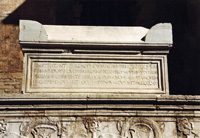 Fig. 6.55. Pletho's sarcophagus, ensconced in the southwest wall of the Tempio Malatestiano.In this changeable climate, it was wise to seek a "mean" between transparency and opacity with others, representing as much a deepened understanding of oneself as a diplomatic approach to interpersonal relations. As Aristotle describes in the Nichomachean Ethics: "By the mean which is relative to ourselves I denote that which is neither too much nor too little, and this is not one and the same for everybody. . . . [A]n expert in any field avoids excess and deficiency, and seeks and chooses the mean—that is, not the objective mean but the mean relatively to ourselves."180 Evoking metaphors of calculable measure, the notion of the "mean" dovetailed with Temperance, a cardinal virtue that provided practical advice for moderation and self-regulation in one's character and everyday activities; in education, diet and exercise, governance, and leisure.
Fig. 6.55. Pletho's sarcophagus, ensconced in the southwest wall of the Tempio Malatestiano.In this changeable climate, it was wise to seek a "mean" between transparency and opacity with others, representing as much a deepened understanding of oneself as a diplomatic approach to interpersonal relations. As Aristotle describes in the Nichomachean Ethics: "By the mean which is relative to ourselves I denote that which is neither too much nor too little, and this is not one and the same for everybody. . . . [A]n expert in any field avoids excess and deficiency, and seeks and chooses the mean—that is, not the objective mean but the mean relatively to ourselves."180 Evoking metaphors of calculable measure, the notion of the "mean" dovetailed with Temperance, a cardinal virtue that provided practical advice for moderation and self-regulation in one's character and everyday activities; in education, diet and exercise, governance, and leisure.
98Temperance is derived from the Latin temperare, to mix in due proportions. As reflected by its personification in the Door of the Virtues at Urbino, this definition stems from the ancient Greek symposium, or drinking party, at which the levity or gravity of an occasion was determined by mixing the wine with prescribed amounts of water. An example of this practice is found in the beginning of Plato's Symposium, a work deeply influential to the Urbino court.181
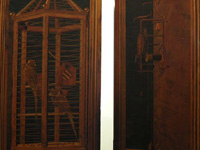 Fig. 6.56. Papagalli and mechanical clock, Urbino studiolo. Fig. 6.56. Papagalli and mechanical clock, Urbino studiolo. |
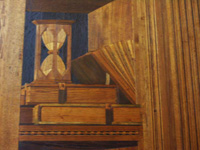 Fig. 6.57. Hourglass, Urbino studiolo. Fig. 6.57. Hourglass, Urbino studiolo. |
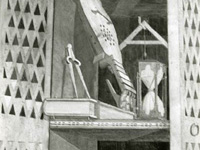 Fig. 6.58. Ingenioq cabinet, Gubbio studiolo. Fig. 6.58. Ingenioq cabinet, Gubbio studiolo. |
|
99Etymologically akin to weather and time, qualities of perpetual change, Temperance is also represented by mechanical clocks and the hourglass.182 In the Urbino studiolo, an elaborate clock appears on the door leading to the duke's bedchambers, and an hourglass occupies a cabinet shelf in the north wall, above the names of Virgil and Homer, alongside the personification of Hope. A second hourglass is found beside the lectern in the miniature studiolo, a particularly jocund play of temporal and spatial layering.
100The concept of a proportional mean for contemplation and material fabrication preoccupied the Franciscan polymath Fra Luca Pacioli, who joined the Urbino court during Guidobaldo's reign. In a treatise devoted to the subject, Divina proportione (1497/1509), Pacioli emphasized the importance of due proportion in various fields—in medicine, mechanics, and fortifications, in art (by perspective and the mixing of colors), and particularly in architecture, as an extension of the lineaments of the human body. Although Pacioli was fascinated with such processes of mathematical and geometrical embodiment as stereometry and stereotomy,183 the friar's interest in the divine proportion (or "golden mean") did not center on its instrumentalization.184 An instructor of theology, Pacioli was less concerned with translating the divine into the worldly than with transporting human intellect—by way of the senses—to contemplate mysteries beyond human comprehension. Pacioli, like Ficino and Cusa, regarded artistic works as powerful vehicles for divine contemplation. As Cusa observes in the first phrase of De visione Dei: "If I strive in human fashion to transport you to things divine, I must needs use a comparison of some kind."185 For Pacioli, the mechanical arts (in general) and architecture (in particular) offered analogical "ladders" for the transmutation of matter to spirit.
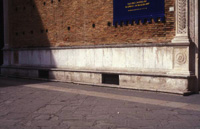 Fig. 6.59. Bench along palace façade. Fig. 6.59. Bench along palace façade.Extended Caption 25 |
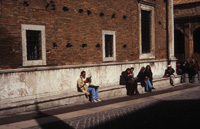 Fig. 6.60. Palace bench, continued. Fig. 6.60. Palace bench, continued.Extended Caption 25 |
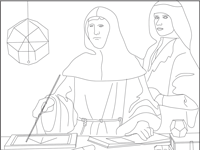 Fig. 6.61. Portrait of Fra Luca Pacioli. Fig. 6.61. Portrait of Fra Luca Pacioli.Extended Caption 25 |
Extended Caption 25 |
101In spite of its arithmetical intonations, the mean associated with Temperance was neither a statistical norm to be maintained nor an objective standard to be unequivocally applied. Aristotle emphasizes that the mean would be subject to change—as a process of acclimatizing oneself to circumstances that change from moment to moment, "like the wind." Each person, facing the same set of circumstances, would (and should) respond differently, according to individual humoral physiology.186
102The lesson from Temperance is that one must learn to "tune" or "temper" oneself, like an instrument, to a given occasion. The mathematical and mechanical attributes of Temperance offered the quattrocento mind a comprehensible metaphor accounting for human actions and responses, providing an ideal and means of "adaptable constancy." From this perspective, the warning that a prince "must have a mind disposed to adapt itself according to the wind, and as the variations of fortune dictate" was less Machiavellian in a pejorative sense than a prudent assessment of human nature and a key to self-knowledge.187
103The awareness that one was always yet never oneself was a philosophical maxim that served in political necessity. Plato's Symposium describes the complementarity of being and becoming: "Even during the period for which any living being is said to live and to retain his identity . . . he does not in fact retain the same attributes, although he is called the same person; he is always becoming a new being and undergoing a process of loss and reparation, which affects his hair, his flesh, his bones, his blood, and his whole body. And not only his body, but his soul as well. No man's character, habits, opinions, desires, pleasures, pains, and fears remain always the same; new ones come into existence and old ones disappear."188 According to the ancient tradition of humoral medicine, extending back through Avicenna and Galen to Hippocrates, a balanced character could be maintained by carefully tempering the body's internal humors.189 With the absorption of Greek and Arab scholarship during Federico's life, this tradition found new purchase in the writings of Platina and his student Ficino, whose treatise on prolonging life, De vita producenda, relates: "Pythagoras, that temperate man, praised three things above all else . . . keeping temperance in emotions, keeping temperance in all foods, and keeping a temperate climate. With such prudence of the humors, with God's help, you will keep far away the intemperateness which is the cause of early aging and an early death. If you choose to live each day of your life in this way, the author of life himself will help you to stay longer with the human race and with him whose inspiration makes the whole world live."190
104The humors were not hermetically contained within the body but were subject, it was believed, to the shifting influences of terrestrial climate and celestial bodies. Consequently, the salubrity of one's physical environment was a fundamental concern to Vitruvius and Alberti, who supported the "traditional" practice of haruspices and auspices to determine the healthfulness of a given location before constructing a private residence or city.191 In book 1 of De re aedificatore, chapters 3 through 5, Alberti attends to those aspects of climate that are explicit and obscured, referring to Hippocrates and the need to accumulate historic accounts (symptoms) of "hidden properties" bestowed by nature to a given locale.192 "When selecting the locality, it is not enough to consider only those indications which are obvious and plain to see, but the less evident should also be noted, and every factor taken into account."193 At Urbino, Alberti notes, "water is found as soon as you dig,"194 giving an architect–hydraulic engineer such as Francesco di Giorgio ample opportunity to convey his ingegno (natural talent, ingenuity) to various humorous inventions, such as Heroic fountains and a thermal bath, conceived to benefit the health of the duke and life in the palace in general.195
105 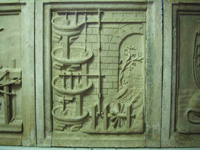 Fig. 6.63. Formella carving.Although given to a choleric temperament,196 Federico was esteemed for his measured speech and was said to never display anger unless it was deemed (theatrically) appropriate.197 According to Vespasiano, the duke knew how to moderate his temperament, softening it "with the utmost prudence."198 Although the biographer does not mention specific techniques used by Federico, one mode of humoral regulation would have been appropriate diet and exercise.
Fig. 6.63. Formella carving.Although given to a choleric temperament,196 Federico was esteemed for his measured speech and was said to never display anger unless it was deemed (theatrically) appropriate.197 According to Vespasiano, the duke knew how to moderate his temperament, softening it "with the utmost prudence."198 Although the biographer does not mention specific techniques used by Federico, one mode of humoral regulation would have been appropriate diet and exercise.
106In De honesta voluptate et valetudine (1470),Bartolomeo Platina offers advice on sleeping, waking, exercise, bathing, and sex, as well as the aesthetics of ambience control for convivial dining.199 He also devotes a short chapter to choosing a place to live, offering an abbreviated account of Alberti's recommendations that shows particular concern for the quality of air and favorable condition of winds to the site. The main subject of the treatise, however, absorbing nine of its ten books, is food. Platina summarizes: "I have written about food in imitation of that excellent man, Cato, of Varro, the most learned of all, of Columella, of C. Matius, and of Caelius Apicius. I would not encourage my readers to extravagance, those whom I have always in my writing deterred from vice. I have written to help any citizen seeking health, moderation and elegance of food rather than debauchery and have also shown to posterity that in this age of ours men had the talents at least to imitate, if not to equal, our ancestors in any kind of speaking."200
107In the introduction, Platina carefully frames the nature of his inquiry into "right" pleasure and health. His wording reflects particular sensitivity concerning Epicureanism,201 one of the charges for which Sigismondo Malatesta had been excommunicated by Pius II and for which Dante condemned Ottaviano's ancestral namesake to the Inferno.202 At the heart of his argument is the importance of pleasure in the senses and food "without debauchery": "Far be it from Platina to write to the holiest of men [Father Baptista Roverella] about the pleasure which the intemperate and libidinous derive from self-indulgence and a variety of foods and from the titillations of sexual interest. I speak about that pleasure which derives from continence in food and those things which human nature seeks."203 Recalling Socrates's tenet that "we should eat to live and not live to eat," Platina considers pleasure to be "neutral, neither good nor bad, as is health."204 Pleasure "will be great and enduring if we embrace with foresight and moderation what is in accord with nature, shunning what is harmful."205
108Following the tenets of his teacher, Vittorino da Feltre, about whom he composed a biography,206 Platina urges that the regimen of diet should be attuned to each person uniquely: "Not all foods suit all people, but as there are various elements and various appetites of men according to their humors, as well as various tasks, so ought there to be various foods so that each may acquire what is agreeable, flavorful, and nutritious."207 According to da Feltre's tenets, Federico's diet was modest: "He ate plain food and no sweetmeats,208 and drank no wine save that made from such fruits as cherries, pomegranates or apples"—fruits found in the east wall of the Urbino studiolo.209
109  Fig. 6.64. Hunting horn suspended in the Gubbio studiolo.Elsewhere in the first book Platina includes a short chapter on exercise, urging that "we are endangered by too much ease and by too much fatigue; therefore, we ought to hold to a mean so as not to exchange pleasure for pain."210 As might be expected, the types of exercise recommended by Platina were to vary from person to person, according to lifestyle.211 For a military captain such as Federico, exercise included brisk early morning activity, such as the military maneuvers described previously. Skills of horsemanship, endurance, and geographical acclimation were also exercised by hunting, one of the duke's favorite activities.
Fig. 6.64. Hunting horn suspended in the Gubbio studiolo.Elsewhere in the first book Platina includes a short chapter on exercise, urging that "we are endangered by too much ease and by too much fatigue; therefore, we ought to hold to a mean so as not to exchange pleasure for pain."210 As might be expected, the types of exercise recommended by Platina were to vary from person to person, according to lifestyle.211 For a military captain such as Federico, exercise included brisk early morning activity, such as the military maneuvers described previously. Skills of horsemanship, endurance, and geographical acclimation were also exercised by hunting, one of the duke's favorite activities.
6.9 On Music and "Right" Leisure
110The preponderance of musical images in the studioli—in each, they outnumber all items, including military weapons—provides further insight concerning quattrocento methods of humoral tempering. Like the d'Este at Ferrara and the Gonzaga at Mantova, the Montefeltro court was a committed sponsor of music and dance.212 The variety of instruments owned by the duke was greatly admired by Castiglione, who counted them among the priceless adornments of the ducal palace. Vespasiano notes that Federico delighted in vocal and instrumental music alike, maintaining "a fine choir with skilled musicians and many singing boys," as well as "the most skilful players" of delicate instruments, which the duke preferred to "trombones and the like."213
111On one level, the abundance of instruments reflects the Urbino court's interest in music as a science of proportion revealing consonance between the heavens and earth. According to tradition,214 Pythagoras had discerned that universal laws could be empirically demonstrated as mathematical correspondences between sound and vision. One of the instruments used in these experiments, the monochord, had been devised to show the proportional relation between the subdivisions of a taut string and audible pitches. A treatise on the monochord discussing these matters, composed by Ugolino of Orvieto, was present in the ducal library.215
112 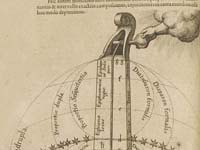 Fig. 6.65. Monochord.In the early quattrocento, parallel advances in musical counterpoint and visual perspective introduced graphic methods for envisioning an entire composition according to a vertical and horizontal orthography of time and space. The belief in a syncretic union between sight and hearing, "the ministers of reason,"216 is expressed by Alberti: "The very same numbers that cause sounds to have that concinnitas, pleasing to the ears, can also fill the eyes and mind with wondrous delight."217 The notion of concinnitas, an "absolute and fundamental rule in Nature," established conceptual parameters for the realization of the studioli according to divine lineaments.218
Fig. 6.65. Monochord.In the early quattrocento, parallel advances in musical counterpoint and visual perspective introduced graphic methods for envisioning an entire composition according to a vertical and horizontal orthography of time and space. The belief in a syncretic union between sight and hearing, "the ministers of reason,"216 is expressed by Alberti: "The very same numbers that cause sounds to have that concinnitas, pleasing to the ears, can also fill the eyes and mind with wondrous delight."217 The notion of concinnitas, an "absolute and fundamental rule in Nature," established conceptual parameters for the realization of the studioli according to divine lineaments.218
113 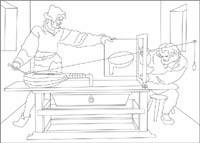 Fig. 6.66. Albrecht Dürer's demonstration of perspectival composition.
Fig. 6.66. Albrecht Dürer's demonstration of perspectival composition.
Extended Caption 26Two contemporary treatises by Franchino Gaffurio, the Teorica musicae and the Angelicum ac divinum opus musice,219 illustrate the Pythagorean experiments with items found in both studioli.220 The Teorica musicae presents flutes and recorders such as those found ubiquitously at Urbino. In an image from the latter treatise, Gaffurio is shown with 12 students, to whom he asserts, "Harmonia est discordia concors" (Harmony is the concord of discord). At his side are depicted an hourglass and a pair of dividers—references to the measure of time and space found together in a cabinet in the Gubbio studiolo—and the pipes of an organ, an instrument of particular significance.
 Fig. 6.67. Clavichord, Urbino studiolo. Fig. 6.67. Clavichord, Urbino studiolo. |
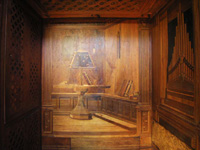 Fig. 6.68. Southeast corner of Urbino intarsia, with miniature studiolo at left and an organ at right. Fig. 6.68. Southeast corner of Urbino intarsia, with miniature studiolo at left and an organ at right. |
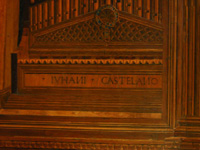 Fig. 6.69. Juhani Castelano, Florentine organ-maker. Fig. 6.69. Juhani Castelano, Florentine organ-maker. |
|
114Castiglione notes that "all keyed instruments also are pleasing to the ear, because they produce very perfect consonances, and upon them one can play many things that fill the mind with musical delight."221 Two splendid keyboard instruments are depicted in each studiolo. At Urbino, a clavichord rests on the bench below Federico's intarsiated portrait; "strung" with inlaid metal wires, it suggests that the duke did indeed encourage guests to touch the intarsia. Directly opposite the chamber, in the niche adjacent to the studiolo-within-a-studiolo, a curtain has been drawn aside to reveal a positive organ. Along with the Montefeltro shield, the name "Iuhani Castelano," the organ's maker, is emblazoned on its front.222 The only other names visible in the studioli are those of classical authors and the duke's own: not even the names of the intarsists are included.
115In addition to the organs' pleasing tonality and precious value, their prominent display in both studioli may also be attributed in part to a political metaphor used by Aristotle in Politics. "The only virtue special to a ruler is practical wisdom; all the others must be possessed, so it seems, both by rulers and by ruled. The virtue of a person being ruled is not practical wisdom but correct opinion; he is rather like a person who makes the [organ] pipes, while the ruler is the one who can play them."223
116There are further associations for these keyed instruments. From the tenth century, the pipes of an organ were commonly called "muses," an evocative detail consistent with the placement of the Castellano organ in the "contemplative" niche of the east wall.224 Polyhymnia, the muse of sacred song, is traditionally represented by the organ. The clavichord, meanwhile, represented an updated version of the monochord,225 reflecting innovations in the compositional methods of counterpoint and musical notation that enabled a player to intone the "perfect consonances" of multiple voices simultaneously. In a contrapuntal work such as a fugue (or ricercar), the leading phrase226 that sets the pattern of movement for the other voices was called the Dux. All the more fitting, then, that this metaphor of divine rule would have been placed beneath the duke's portrait.
117Returning to Polyhymnia: evocation of the muses would be a most appropriate theme for the studioli. For his study, Leonello d'Este had commissioned a cycle of allegorical portraits of the muses, and we recall the location of the Tempietto delle Muse directly below the Urbino studiolo. As guides to memory, attributes of the muses would call to mind the various disciplines of learning and arts of expression that they governed. At Urbino, Urania (astronomy) is represented by the dividers, astrolabe, and armillary sphere; Erato (lyric and love poetry) by the timbre on the bench; Euterpe (lyric poetry) by the abundance of flutes; Thalia (comedy and pastoral poetry) by the viol; Terpsichore (popular song and dance) by the lira da braccio; and Apollo, who frequently accompanies the muses as the god of music, is represented by the lute.227
118On first analysis, three muses appear to be missing from the Urbino studiolo: Melpomene (tragedy); Calliope (epic poetry), usually seen with a trumpet (an instrument the duke disliked); and Clio (history), typically shown with a swan. Consistent with the "hidden" references to the virtues and liberal arts, it is probable that these three are represented by other means. Cheles suggests that the classical authors named in the intarsia are likely candidates: the epic poets O[M]E[RO] and [VIR]GILIO would be ideal ambassadors for Calliope, and [SE]NACA, renowned also for his tragedies, would be a suitable stand-in for Melpomene.228 There is, as yet, no discernable image for Clio; given the presence of the other muses, however, it is likely that her cipher has been obscured by time (or design) and simply remains undetected.
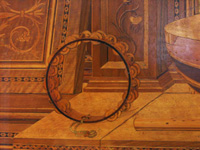 Fig. 6.70. The jingle ring evokes Erato, muse of lyric and love poetry. Fig. 6.70. The jingle ring evokes Erato, muse of lyric and love poetry. |
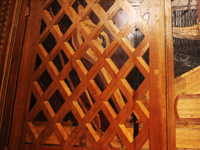 Fig. 6.71. Rebec and its bow, partially obscured behind a cabinet door. Fig. 6.71. Rebec and its bow, partially obscured behind a cabinet door. |
119In the Gubbio studiolo, the muses are more easily accounted for. Urania is represented by the armillary sphere, Euterpe by flutes, Thalia by the rebec, Melpomene by the hunting horn, Terpsichore by the cittern, Erato by the jingle ring, and Polyhymnia by the organ. It is likely that Calliope, usually represented by a trumpet, is signified by the Virgilian verses on the lectern. Clio's swan is also missing at Gubbio, although it is difficult to imagine that the muse of History would not have been figured into both studioli by some erudite and clever means. We might also note that there are two instruments with broken strings at Gubbio, Apollo's lute and harp, as compared with the single lute at Urbino.
120Contemplation of the muses and the "music of the spheres" was not, it should be stressed, a purely intellectual activity. From Pythagoras to Castiglione, music was perceived as a governing agency by which to attune one's soul to beneficial aspects and influences of the heavens. In Timaeus, Plato writes that "all audible musical sound is given to us for the sake of harmony, which has motions akin to the orbits in our soul,"229 a sentiment Castiglione echoed: "The world is composed of music . . . the heavens make harmony in their moving, and . . . the soul, being ordered in like fashion, awakes and as it were revives its powers through music."230
121In concert with diet and exercise, it was believed that the proper musical mode could temper the internal humors, reviving one's powers according to need and occasion. "If the vapors exhaled from vegetable life are terrific for your life," asks Ficino, "how useful would you say songs are? How useful those in the air to the airy spirit, those that are harmonious to the harmonious spirit, songs that are warm and lively to the lively spirit, and how useful are songs full of feeling and conceived in reason to the sensitive and rational spirit?"231
122In Politics, Aristotle lists three classes of melodies—ethical (ethos), active (praktika), and exciting (enthousiasmos)—that were believed to evoke three benefits of music: education, catharsis, and civilized relaxation and relief after tension.232 Although all three melodies could lead to action, a desired musical effect called for the appropriate harmonia, or mode, which was seen as a way of fitting together an "ordered combination or construction of notes."233 For education Aristotle recommends an ethical mode such as Dorian or Lydian, while the Phrygian harmonia is described as "a kind of agitation by which some people are liable to be possessed," arousing religious catharsis and orgiastic Bacchic frenzy.234
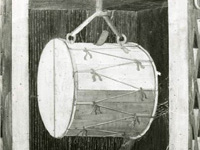 Fig. 6.72. The military instruments of the pipe and tabor, Gubbio studiolo. Fig. 6.72. The military instruments of the pipe and tabor, Gubbio studiolo. |
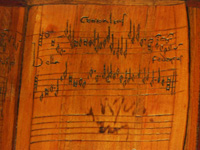 Fig. 6.73. Intarsiated and burnished score of Bella gerit, Urbino studiolo. Fig. 6.73. Intarsiated and burnished score of Bella gerit, Urbino studiolo. |
123To prepare for battle, a military leader such as Federico required active melodies to stir the cholera within himself and among his troops. The pipes and tabor, instruments devised for this mode of agitation, are depicted in both studioli. At Urbino, moreover, a recipe for raising the red bile of the heart is found in a musical score in the west wall intarsia. "Bella gerit" is a marching air that celebrates the duke's leadership. In its lyrics, "Bella gerit" further entwines the themes of action/contemplation and war/peace by extolling Federico's reconciliation of public and private life: "Federico, the greatest leader of all Italians, outdoors and at home, he fights wars and cultivates the Muses."235
124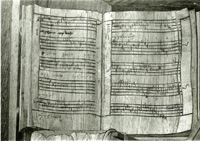 Fig. 6.74. Intarsiated and burnished score of J'ay pris amour, Urbino studiolo.Counterposed with the martial "Bella gerit," another musical score in the Urbino intarsia suggests how the muses (in this case, Erato) could assist in stirring other sorts of emotions, softening the duke's temperament. "J'ay pris amour," a chanson popular among the courts, treats the courtship of love and fortune and is likely a commemoration of Battista Sforza, after whose death the duke did not remarry.236
Fig. 6.74. Intarsiated and burnished score of J'ay pris amour, Urbino studiolo.Counterposed with the martial "Bella gerit," another musical score in the Urbino intarsia suggests how the muses (in this case, Erato) could assist in stirring other sorts of emotions, softening the duke's temperament. "J'ay pris amour," a chanson popular among the courts, treats the courtship of love and fortune and is likely a commemoration of Battista Sforza, after whose death the duke did not remarry.236
J'ay pris amour en ma devise
Pour conquérir joyeuseté.
Heureux seray en cest été
Si puis venir à mon emprise.
I've decked my shield with love's device
To make a captive out of joy;
Content I'll on that summit rest,
Should fortune crown my enterprise.237
125Plato and Aristotle asserted that times of peace and relaxation called for well-tempered activities, in order to restrain bilious and Bacchic inclinations. They concurred that music provided an ideal philosophy for leisure:238 Aristotle perceived music to contribute to "civilised pursuits" and "practical wisdom," providing "a stimulus to virtue . . . by accustoming men to be able to enjoy themselves in the right way."239 Plato declared that music "is not to be used, as is commonly thought, to give irrational pleasure, but as a heaven-sent ally in reducing to order and harmony any disharmony in the revolutions within us."240
126Encompassing these views, Marsilio Ficino wrote extensively on the medicinal properties of music.241 In book 1 of Liber de vita, Ficino urges that a dissonant or sad soul should strum the lyre (lute or harp) to escape the bitterness of chronic melancholy, the black humor attributed to Saturn.242 Citing Mercurius, Pythagoras, and Plato, he stresses the importance of tempering one's studies with pleasure—"let meditation walk no further than pleasure, and even a little behind"—in an admixture of gravity and levity best described by the term jocoseriosity.243 "Venus fertilizes the body, and stimulates fertility. Saturn presses the mind, pregnant by his seed, to give birth. You should therefore remember this proverb: do not be too busy in anything, and restrain your pleasure with the reigns of prudence, for both of these Gods [Venus and Saturn] give birth."244 These comments suggest that the term Citharae—found in Clemente da Urbino's medal and the Tempietto delle Muse—bears a double significance, referring as much to Venus and her revitalizing influence on thought as to the cittern's association with Terpsichore. Recalling Ficino's recommendations for a figure of the universe,245 it is possible that the text in the Tempietto delle Muse evoked Venus's birthplace to enhance the chamber's use as a space for contemplative reflection.
127 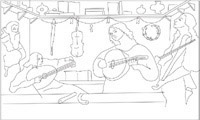 Fig. 6.75. Carpaccio's sketch of a monk listening to musicians tuning up in a studiolo.Consistent with Ficino's recommendations, a drawing by Carpaccio suggests that many (if not all) of the instruments represented in the studioli were likely performed therein, including those instruments bearing connotations of the "music of the spheres," such as the clavichord, organ, and lute.246 Other instruments, like the cittern found at Gubbio, were as readily available in a tavern as in a princely studiolo. Associated with Venus as well as Terpsichore, the cittern was strung with metal wire to ensure reliable tuning for impromptu use.247 With their wood paneling, one can imagine that the studioli offer resonant settings for listening to music, which should be counted among the duke's activities in the Urbino studiolo. Not only could contemplation be active, it could be enjoyable.
Fig. 6.75. Carpaccio's sketch of a monk listening to musicians tuning up in a studiolo.Consistent with Ficino's recommendations, a drawing by Carpaccio suggests that many (if not all) of the instruments represented in the studioli were likely performed therein, including those instruments bearing connotations of the "music of the spheres," such as the clavichord, organ, and lute.246 Other instruments, like the cittern found at Gubbio, were as readily available in a tavern as in a princely studiolo. Associated with Venus as well as Terpsichore, the cittern was strung with metal wire to ensure reliable tuning for impromptu use.247 With their wood paneling, one can imagine that the studioli offer resonant settings for listening to music, which should be counted among the duke's activities in the Urbino studiolo. Not only could contemplation be active, it could be enjoyable.
6.10 On Chess
128Although accounts of the studioli evoke an ambience of quiet and stateliness, the company shared therein was not always grave. As Vespasiano notes, following the evening meal, "the Duke would remain for a time to see if anyone had aught to say, and if not he would go with the leading nobles and gentlemen into his closet and talk freely with them."248 At day's end, then, the studiolo offered a convivial setting for conversation and leisure.
129It is tempting to speculate on the nature of these conversations and activities: To what degree would they have been political? Or would Federico and his guests have diplomatically avoided or only lightly alluded to serious matters? In the north wall intarsia, two spoons in an opened container of candied fruit suggest that the studiolo was shared as a delightful dessert to the day's events.249 One is also reminded of the humorous Intercoenales, or after-dinner stories, that Alberti had modeled after the satirical works of such ancient writers as Lucian, who is well represented in the ducal library.250
130In addition to music and conversation, from the chessboard and pieces depicted in the west wall, it seems more than likely that certain games were played in the studiolo. Cheles has noted that "the presence of a game of chess in a study is not unusual: Piero de' Medici kept one in his scrittoio."251 This is a point well made; in On Right Pleasure, Platina includes chess in his recommendations for the "right" types of games for a gentleman's leisure, along with dice and "various kinds of cards with painted pictures."252
131Cheles and Tenzer concur that the symbolic relation between chess and warfare would be a most suitable theme for a condottiere. Cheles states simply, "[Chess] involves two antagonistic sides of which the strongest wins," noting that this would accord with the proximity of the impresa of the tenacious ostrich in the dado beneath.253 Tenzer adds: "The carved pieces should be associated with skill of mind predominating over Fortune to achieve victory, not only in the game of chess but also in the more serious pursuit of war."254
132 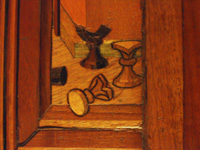 Fig. 6.76. Chess pieces, Urbino studiolo.These interpretations posit that a military leader such as Federico would have considered chess a pleasurable training ground for exercising strategy and further enjoining the active and contemplative lives.255 There is more to discover through this image. Tenzer rightly asserts that the chessboard and pieces function "on a dual level, as disguised symbols."256 In addition to its militaristic character, the game would have represented well the intricacies of political and professional competition for a quattrocento condottiere. Further inquiry reveals that chess might have represented not just two but several levels of association for the duke.
Fig. 6.76. Chess pieces, Urbino studiolo.These interpretations posit that a military leader such as Federico would have considered chess a pleasurable training ground for exercising strategy and further enjoining the active and contemplative lives.255 There is more to discover through this image. Tenzer rightly asserts that the chessboard and pieces function "on a dual level, as disguised symbols."256 In addition to its militaristic character, the game would have represented well the intricacies of political and professional competition for a quattrocento condottiere. Further inquiry reveals that chess might have represented not just two but several levels of association for the duke.
133Aside from its overt play of stratagem, there are circumstantial reasons for the militaristic overtones of chess. Although chess had arrived in Spain in the tenth century by way of the Moors, its presence in Italy by the 11th century followed trade routes into the Orient, as well as the influence of Persian culture on soldiers who had participated in the Crusades. Owing to its origins in the land of the "infidels"257 as well as its popularity among soldiers, chess accumulated certain disreputable associations. In late medieval Italy, gambling on games of chess, dice, and cards offered diversion for soldiers during frequent and lengthy sieges in the wars between the Guelf and Ghibelline.
134Nor were men of the cloth immune from the allure of gaming. In 1061, Cardinal Damianus, bishop of Ostia, wrote to a Florentine bishop who had been discovered playing chess in public: "Was it right, I say, and consistent with thy duty to sport away thy evenings amidst the vanity of chess, and defile the hand which offers up the body of the Lord, the tongue that mediates between God and man, with the pollution of a sacrilegious game?" The Florentine bishop expiated the offense of playing chess "by three recitations of the Psalter, by washing the feet of 12 poor persons, and by giving them liberal alms."258
135Chess, it appears, had a checkered past: it was not always a game of the courts.259 It became "courtly" due to the efforts of clergy who seized on the game's popularity as an opportunity to fashion a moralized model for the ideal city. When Platina, a former soldier, includes chess, dice, and cards among the "right" pleasures for a gentleman, we recognize the influence of these earlier efforts and of Platina's own mentors.260 During the Congress of Mantua in 1459, Cardinal Bessarion, Nicholas of Cusa, and Pope Pius II "played" with the Carte de trionfi—Platina's "cards with painted pictures." These cards, when placed edge to edge, were said to form "a symbolic ladder leading from Heaven to earth."261
136Humanist sources also provided exemplary uses for dice. In the introduction to book 5, chapter 3, of Vitruvius we find a murky passage concerning Pythagoras and his followers, who "write their rules, cube fashion," in 216 lines (the cube of six, a "perfect" number) and proclaim, "Not more than three cubes should be in one treatise." Fortunately, Vitruvius elaborates: "When a cube is thrown, on whatever part it rests, it retains its stability unmoved so long as it is untouched, like the dice which players throw in a tray. Now this analogy they seem to have taken from the fact that this number of verses, like a cube upon whatever sense it falls, makes the memory there stable and unmoved. Greek comic poets also, interposing the canticum sung by the chorus, divided the spaces of their plays. Thus making the parts cube fashion, they relieve by intervals the delivery of the author's words."262 This passage offered humanists an example of how the ancients had used dice for rhetorical purposes. Later, in his 1556 edition of Vitruvius, Daniele Barbaro would meditate on this passage in his discussion on how to construct an ideal treatise.263
137An indirect yet informative episode links chess with Montefeltro family history. In 1266, a Saracen chess player named Buzecca played three simultaneous matches, blindfolded, against three Florentine masters.264 The matches were played to great fanfare before the podestá Guido Novello in the Florence's Palazzo del Popolo and were later commemorated by a fresco in the castle at Poppi.265 Novello's military captain was Buonconte da Montefeltro, Federico's ancestor, whom Dante would remember in Purgatorio (5.88–93).266
138There are a few curious details about this event. Buzecca267 reputedly played two of the matches "by memory," and the third "by sight," winning two and drawing on the other. Admittedly, the logistics are difficult to sort out—if Buzecca was blindfolded, how could he have played two matches by memory and one by sight? And how exactly would one play chess blindfolded? Aside from these lacunae, the admiration for this opponent revolved around his formidable memory, demonstrated by the play of chess.
139In the 13th century, the popularization of chess in Europe and on the Italic peninsula stimulated the invention of numerous "problems" (partite) that were frequently accompanied by illustrations and compiled into manuscripts. The purpose of these manuscripts, in many ways quite similar to that of chess manuals of today, was to assist players in visualizing (and thus conveying to the memory) various configurations or situations that one might encounter during match play. As apparent from the prologue of one of these manuscripts, the Bonus socius (Good companion), these problems were to be learned by heart and to serve as the foundation for further invention, thereby perfecting one's knowledge "through exercise of intellect": "In consequence of the sin of the first man the cell of memory of the human generation is enfeebled; so that all is forgotten that is not before your eyes, or of which you are not continually thinking. It is just the same as placing something in a little bag containing holes. It falls out at once, also what passes in one ear goes out the other immediately. . . . For all these reasons I [Bonus Socius] have taken the trouble to collect into this book all the problems which I have seen or have discovered in trying to invent new ones."268
140As a chess match unfolds, each player must determine which pieces to protect and which to exchange—whether advantageously, evenly, or to a disadvantage. A well-trained memory is essential for a player to envision and select—from the numerous combinations available to the mind's eye—those tactical "moves" that cause the most advantageous resolution of a given partita. As Tenzer notes, chance never intrudes into a chess match: the board thus offers an ideal theater for rational thought, an evenly measured setting in which to exercise the retention, inventiveness, and perspicacity of one's intellect.
141In the late quattrocento, associations between chess and memory remained strong. At the conclusion of his Ars memorativa, Jacobus Publicius includes a group of diagrams that he assures will "delight the soul, sharpen the talent, and express the signs of memory very well."269 Among them he includes the image of a chessboard and a list of its pieces, as well as a "Porphyrian Tree," which, as Henry Bayerle and Mary Carruthers have noted, "played an important role in Raymond Lull's classification of universal knowledge."270 There is no further explanation of these particular diagrams, reflecting the likelihood that at the time, there need not have been.
142The list of the chess pieces bears mention: on either side of the king and queen are the "Counts" (bishops), knights, and castles (termed "Governors"). Each pawn has its own evocative designation; the king's pawn is referred to as the "Treasurer," and the queen's pawn is listed as "Doctor." On the king's flank, bishop's pawn is "Scribe," knight's pawn is "Smith," and castle's pawn is "Farmer." Meanwhile, on the queen's side the bishop's pawn is "Innkeeper," knight's pawn is "Toll-gatherer," and castle's pawn is "Jester."
143A more direct association between Federico and chess may be determined from the pieces displayed. Although Cheles and Tenzer describe them summarily as "pawns," the pieces are clearly not all the same. Pier Luigi Bagatin is more precise: "Si riconoscono una torre e un alfiere" (One recognizes a castle and a bishop).271 The term alfiere (bishop) provides a valuable clue; it derives from the Arabic word for "elephant."272 As Jupiter's eagle was the heraldic emblem for the Montefeltro, so the elephant was the emblem for Federico's nemesis, Sigismondo Malatesta. Following Federico's eventual triumph in this rivalry, Giovanni Santi wrote: "Heaven decided that the eagle, endowed with prudence and fortitude, courage and glory, would bite the elephant's heart."273
144There is another, more curious, association between Federico and chess. In the same year, 1474, that Duke Federico received the Order of the Garter from the king of England, William Caxton's Playe of the Chesse, the second book mechanically printed in English, was dedicated to Prince George, the king's eldest brother. Federico was invested at Grottoferrata that autumn and commissioned his relative Pietro degli Ubaldini to travel to England to receive the order by proxy on 22 August 1475. The colophon of the first edition of Playe of the Chesse reads: "Fynyfshid the last day of marche the yer of our lord god. a thousand foure honderd and lxxiiii." Even allowing for a delay in transit from Bruges (where Caxton was printing) to England, it is likely that news of this book and its subject would have reached the court of Urbino through Ubaldini.
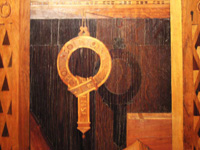 Fig. 6.77. Order of the Garter, Gubbio studiolo. Fig. 6.77. Order of the Garter, Gubbio studiolo.Extended Caption 27 |
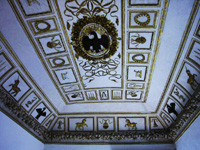 Fig. 6.78. Ceiling of quarters reserved for the King of England, in the Urbino ducal palace. Fig. 6.78. Ceiling of quarters reserved for the King of England, in the Urbino ducal palace.Extended Caption 27 |
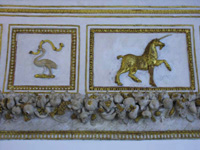 Fig. 6.79. Detail from ceiling of the King of England's quarters. Fig. 6.79. Detail from ceiling of the King of England's quarters.Extended Caption 27 |
|
145Like several of Caxton's early printed books, the Playe of the Chesse was a translation of an earlier work, the Liber de moribus hominum et officiis nobilium ac popularium super ludo scachorum. Its author, Jacopo de Cessoles, the master of theology of the Dominicans at Reims, had seized on the chessboard as a memorable setting for a series of homilies in which he aimed to transform chess from a game of ill repute into a metaphor for the ideal city. For these homilies, Cessoles was concerned less with the practice of chessmanship than with the practical ethics of citizenship and governance. In place of illustrated problems, he combined aspects of the De regimine principium, a contemporary treatise on princely rule composed by the Augustinian Egidius Romanus,274 with a historic account of the chessboard and commentaries on each chess piece.
146According to this history, the philosopher Philometor—"which is as moche to saye in english as he that loveth Justice and mesure"275—invented the game of chess in order to transform King Evilmerodach, who had committed a host of copiously illustrated atrocities, into a benevolent ruler. Philometer fashioned the gaming board after the city of Babylon, with sixty-four squares bounded by a wall and the Tower of Babel in one corner. As philosopher and king proceed with their game, Philometor instructs the king on the value of each piece and how the finest strategy calls for all pieces to work in concert. No individual piece—not even the king or queen—possesses unlimited power or may guarantee victory without the strategic coordination of all pieces. Cessoles/Caxton expounds on this thought: "Among all the evil conditions and signs that may be in a man the first and greatest is when he feareth not / nor dreadeth to displease and bring the wrath of god by synne . . . nor take heed of them who repr[o]ve him and his vices / but flee them / In such wise as the emperor Nero / who fled his master Seneca."276
147For Cessoles, each individual piece (pawn, knight, king) represented a citizen, whose influential powers (or range of movement, determined as the rules evolved) corresponded to their occupation and hierarchical status in the community. As such, chess represented an ethical exercise in which each piece was invested with a symbolic civic and moral duty. As seen later in Publicius's treatise, the queen's pawn represented physicians, spicers, and apothecaries, who are responsible for the queen's health—they are said to know the harmony of the pulses like the harmony of music277—and whose vast learning encompasses the "proportions of letters of grammar," as well as the arts of cosmology and cosmetics. Among these learned doctors, "the master of rhetorique is the chief master in speculatyf."278
148Cessoles's moralization of chess, adroitly superimposed on the plan of Babylon (traditionally considered by Judeo-Christians to be the devil's city),279 marked an attempt to shift the game's allure toward noble aspirations. From an educational standpoint, chess engages the memory to speculate beyond a present circumstance toward the future, expanding one's capacity to plan strategies accordingly. As such, the practice of chess could be readily dovetailed with the cultivation of Prudence. Through the analogy of the chessboard with the city, as well as the chess pieces with the various trades practiced by a city's inhabitants, Cessoles invented a powerful mnemonic diagram for princes and commoners alike, with the reticulated board and its pieces offering a model by which to contemplate the integrated workings of an ideal city—proportionately measured, guided by just and prudent leaders and unassailed by Fortuna.
^top6.11 On Fortune
Fortune, often in mid-course and sometimes near the end, shatters our frail and vain designs, and sometimes wrecks them before the haven can be even seen afar.—Castiglione, Book of the Courtier, 240
149As night falls on the ideal summer day at Urbino and the duke's guests retire to their quarters, other activities in the palace are just beginning. Directly overhead, on the rooftop balcony above the studiolo, Paul of Middleburg has commenced observations of the night sky, employing many of the devices represented in the studioli. And where, one wonders, has Federico's "shadow" been throughout this ideal day? It is hard to imagine that Ottaviano, who governed Urbino in the duke's absence, was unoccupied on his brother's return. Would he have joined Federico and his guests in the studiolo for diplomatic negotiations by day and leisurely activities at night? Or was the Prince of Astrology already above the starry ceiling of the studiolo with Paul of Middleburg, descrying signs from the heavens regarding the health of the duke and dukedom? Would Federico have joined them, at the summit of his symbolic percorso, to contemplate the night sky and bathe in its beneficial celestial influences, as Ficino recommends?280 And after September 10, 1482, when Federico's soul had scaled the stars, would Guidobaldo have accompanied his uncle to the observatory for instruction in the music of the spheres? Did astrology enable Ottaviano to consort with Federico and other departed souls in a dialogue of Euclidean geometry? Would divine speculation bring the young prince closer to his departed father's counsel?
150Etymologically, the occult signifies that which is "hidden" from sight and cannot be known. For the quattrocento, as now, the unknown consisted of future events, personal fate, and the unpredictable influences of fortune.281 Although stars did not determine human action, as physicians like Ficino were careful to note, they were believed to convey divine decrees by their arrangements, enabling observant humans to calibrate their thoughts and actions to beneficially influence their personal destinies. At the beginning of his treatise on prolonging life, Ficino assures his reader: "Long life is not only a matter of what the Fates have put in store for use from the beginning, but something our diligence takes care of as well. The astrologers admit this, too, when they talk about Selections and Images, and it is confirmed by the diligent care of doctors and by experience itself."282
151At Urbino, as at Ficino's Platonic Academy, occult speculation focused on practices of well-tempered living. If signs and hidden influences from the heavens and within oneself could be decrypted, it was believed, one might conduct oneself fruitfully in human affairs.283 Moreover, if the universe operated as a harmonious musical mechanism, then stones, plants, and animals might assist in conveying the powers of their governing stars,284 and humans could tune their habits beneficially by diet, talismans, music, and architecture. Ficino elaborates:
There is a Platonic saying that confirms this, too, that this machine of the world is so connected that heavenly things are on earth in an earthly condition, and earthly things are in heaven in a heavenly dignity; and heavenly things are present in the hidden life of the world, and in the mind, the queen of the world, where they are its vital and intellectual property, its excellence. Through these bodies overhead, some people even think that magic can somehow draw down these heavenly things at the right times to men, making the lower things in agreement with the higher, and that magic can even unite the celestial bodies to us through the celestial things overhead, or work them inside us, where one can finally see them.285
152 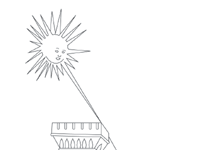 Fig. 6.80. Francesco di Giorgio asserted that music is necessary for the conference and proportion of any building.What is the nature of the "magic" that Ficino describes? Recondite interests percolated at Urbino as early as the 1470s. Through the influences of such hermetic philosophers as Ludovico Lazzarelli286 and Guglielmo Raimondo de Moncada,287 art and scholarship at Urbino received an infusion of ancient myths, astrology, the Jewish kabbalah,288 and the Muslim Koran. Attempts at the court to reconcile these alternative forms of wisdom with Christian mores289 continued the efforts of Cusa290 and Bessarion and laid the groundwork for two controversial works published in 1489, Ficino's Book of Life and Pico della Mirandola's Heptaplus. As an elaboration of the teachings of de Moncada, with whom Pico studied at Perugia in 1486, Heptaplus demonstrated a Christianized kabbalism that combined biblical and Platonic accounts of the creation.291 In a similar vein, the subsequent architectural writings of Pacioli interpreted alchemical transmutation as spiritual epiphany, evinced through mental and material craft.292
Fig. 6.80. Francesco di Giorgio asserted that music is necessary for the conference and proportion of any building.What is the nature of the "magic" that Ficino describes? Recondite interests percolated at Urbino as early as the 1470s. Through the influences of such hermetic philosophers as Ludovico Lazzarelli286 and Guglielmo Raimondo de Moncada,287 art and scholarship at Urbino received an infusion of ancient myths, astrology, the Jewish kabbalah,288 and the Muslim Koran. Attempts at the court to reconcile these alternative forms of wisdom with Christian mores289 continued the efforts of Cusa290 and Bessarion and laid the groundwork for two controversial works published in 1489, Ficino's Book of Life and Pico della Mirandola's Heptaplus. As an elaboration of the teachings of de Moncada, with whom Pico studied at Perugia in 1486, Heptaplus demonstrated a Christianized kabbalism that combined biblical and Platonic accounts of the creation.291 In a similar vein, the subsequent architectural writings of Pacioli interpreted alchemical transmutation as spiritual epiphany, evinced through mental and material craft.292
153How, then, did one attract heavenly influences and "work them inside" oneself? "This is done with a certain art," Ficino advises, by "gathering many things" that are then "chopped up, mixed together, and digested under a certain star according to medicine and astrology."293 Although this comment suggests dietetic recipes (which the Book of Life offers in plenitude), Ficino is also referring to ingredients digested by the memory—Augustine's "stomach of the mind"—including such ruminatory staples as letters, numbers, and ideas. As the food of thought, these are "chopped up" and "mixed together" by the recombinatory mechanics of memory wheels and the kabbalah.
154There was also a more direct means of gathering stellar rays. In the Book of Life, Ficino follows the advice of authors like Avicenna and Pietro d'Abano,294 whom he frequently cites, elaborating on an ancient model of universal pneumatology that binds all substances and living creatures together in an unceasing exchange of spiritual influences. These spirits were believed to flow from the stars through the eyes into the human heart, where they communicated with the body through the blood. Through contemplation, this blood-spirit (Publicius's psychical pneuma) was purified in the chambers of the brain, allowing one's soul to ascend like a winged eye from the earthbound concerns of the body.
155 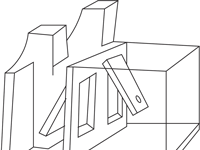 Fig. 6.81. Leonardo's architectonic interpretation of the heart as a furnace.In his recommendations for making a universal figure for contemplation, Ficino urges that one should "not just look at" an image such as an armillary sphere but to "reflect on it in the soul."295 Although the entire Urbino studiolo might well be considered such a universal figure, certain images are ideal for sustaining wonderment in an observer. Beside the central image of the city in the east wall, to which we will return momentarily, the heptagonal figure offers a perpetual motion machine by which to contemplate the interconnection of worldly and divine wisdom.
Fig. 6.81. Leonardo's architectonic interpretation of the heart as a furnace.In his recommendations for making a universal figure for contemplation, Ficino urges that one should "not just look at" an image such as an armillary sphere but to "reflect on it in the soul."295 Although the entire Urbino studiolo might well be considered such a universal figure, certain images are ideal for sustaining wonderment in an observer. Beside the central image of the city in the east wall, to which we will return momentarily, the heptagonal figure offers a perpetual motion machine by which to contemplate the interconnection of worldly and divine wisdom.
 Fig. 6.82. Heptagonal diagram after figure at Urbino studiolo. Fig. 6.82. Heptagonal diagram after figure at Urbino studiolo.Extended Caption 28 |
156 Other contemplative figures literally encircle the studiolo.
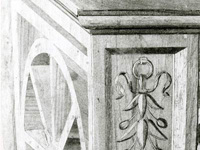 Fig. 6.83. Bench wheels, Urbino studiolo. Fig. 6.83. Bench wheels, Urbino studiolo.Extended Caption 29 |
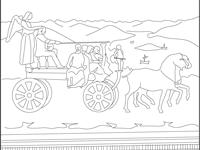 Fig. 6.84. Federico on biga with cardinal virtues. Fig. 6.84. Federico on biga with cardinal virtues.Extended Caption 29 |
157Virtuous images and maxims inlaid in the studioli offer tracks for the observer's gaze. In addition to the top-to-bottom practice of ekphrasis described earlier, the studioli architecture offered innumerable routes for contemplation, lifting the mind's eye from the sensual world toward the heavens by select examples of heroes, edifying phrases, and icons. At Urbino, the arrangement of these tracks leads to the central image of the east wall and back to questions posed earlier in this investigation. Is the distant city depicted in the intarsia Urbino itself? Why is the piazza in the foreground empty? Why is there no apparent historia?
158 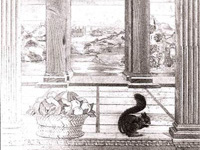 Fig. 6.85. Civic space, east wall of Urbino studiolo.With classical and medieval memory traditions in mind, it appears that the entire studiolo provided subject matter for contemplation, while the empty space of the ideal city furnished the dukes with a locus solus,296 a civic theater in small compass, in which to envision consequences of policy and rehearse rhetorical deliberations.297 The emptiness of this urban setting also reflects, perhaps, the impossibility of realizing the ideal in the tangle of human affairs. Even if the city viewed in the distance were intended to evoke Urbino, countering Tenzer's observations, the similitude would present Urbino as an allusion to the City of God and not as the ideal city in and of itself. This is a critical distinction. While the ideal state had provided a rhetorical commonplace for close to two millennia, it remained for the quattrocento a dream as inaccessible to this world as Plato's Republic or Augustine's City of God.298 Like Plato, Federico and his cohorts considered an ideal state oxymoronic to the human condition, a vision to be contemplated and aspired to, yet never "actualized." The literalization of the City of God on earth, manifest in the following century by El Escorial in Spain, was endemic to temporal concerns after overseas voyages had ruptured and doubled the known world.299
Fig. 6.85. Civic space, east wall of Urbino studiolo.With classical and medieval memory traditions in mind, it appears that the entire studiolo provided subject matter for contemplation, while the empty space of the ideal city furnished the dukes with a locus solus,296 a civic theater in small compass, in which to envision consequences of policy and rehearse rhetorical deliberations.297 The emptiness of this urban setting also reflects, perhaps, the impossibility of realizing the ideal in the tangle of human affairs. Even if the city viewed in the distance were intended to evoke Urbino, countering Tenzer's observations, the similitude would present Urbino as an allusion to the City of God and not as the ideal city in and of itself. This is a critical distinction. While the ideal state had provided a rhetorical commonplace for close to two millennia, it remained for the quattrocento a dream as inaccessible to this world as Plato's Republic or Augustine's City of God.298 Like Plato, Federico and his cohorts considered an ideal state oxymoronic to the human condition, a vision to be contemplated and aspired to, yet never "actualized." The literalization of the City of God on earth, manifest in the following century by El Escorial in Spain, was endemic to temporal concerns after overseas voyages had ruptured and doubled the known world.299
159  Fig. 6.86. Ideal city, painted at Urbino, late quattrocento.For the quattrocento, as in previous centuries, the ideal city offered a skopos, a destination attained after the end of time by living according to virtuous principles in this life. "We should not value this human existence which has been bestowed upon us except in so far as it prepares us for the future state."300 For Federico and his mentor Piccolomini/Pius II, this future state remained tantalizingly beyond (or just to the side of) the vanishing point301 of the human horizon. And, like Pacioli's subsequent observation that a visible point is by mathematical definition not a point,302 any image of the ideal city was understood to be a mere foreshadowing of the heavenly mansions of the "future state." As a rebus for contemplation, then, the ideal city represented an image of concord drawn through the macro- and micro-architecture of the cosmos, aligning the music of the spheres with the city, one's home, private study, and the ark of memory preserved in the heart of the mind.303 Amid this sequence of nested vessels, an occupant of the Urbino studiolo is simultaneously contained within and a container of divine wisdom, embodying the erotic tension of created and creator described by Plato in Timaeus.304
Fig. 6.86. Ideal city, painted at Urbino, late quattrocento.For the quattrocento, as in previous centuries, the ideal city offered a skopos, a destination attained after the end of time by living according to virtuous principles in this life. "We should not value this human existence which has been bestowed upon us except in so far as it prepares us for the future state."300 For Federico and his mentor Piccolomini/Pius II, this future state remained tantalizingly beyond (or just to the side of) the vanishing point301 of the human horizon. And, like Pacioli's subsequent observation that a visible point is by mathematical definition not a point,302 any image of the ideal city was understood to be a mere foreshadowing of the heavenly mansions of the "future state." As a rebus for contemplation, then, the ideal city represented an image of concord drawn through the macro- and micro-architecture of the cosmos, aligning the music of the spheres with the city, one's home, private study, and the ark of memory preserved in the heart of the mind.303 Amid this sequence of nested vessels, an occupant of the Urbino studiolo is simultaneously contained within and a container of divine wisdom, embodying the erotic tension of created and creator described by Plato in Timaeus.304
160Consequently, the influence of concinnitas on the studioli architecture did not represent an imposition of reason onto nature but rather a belief in an underlying order that might rectify human nature and sustain a productive balance in human affairs.305 To this end, in a principality governed by the divine right of birth, it was the prerogative of the ideal prince to establish just laws; the role of the ideal courtier, Castiglione emphasizes, was to assist in upholding these laws. Likewise, the machines of Brunelleschi, di Giorgio, and da Vinci operated according to laws that were believed analogous to visible processes in the earth and heavens: machines transmitted deeply rooted meditational and theological associations that conditioned body and mind. Although nature and artifice were considered dialectically distinct in the quattrocento mind, they were not polarized. As Publicius asserts, "We consider it established that nature is not superior to craft, nor art to nature."306
161Through divine ratios, it was believed, humans could align the "coarse" material wisdom of Minerva with the workings of the universe. Guided by the ministers of reason, sight and hearing, architects and artists channeled beneficial influences through well-proportioned works whose decorum tuned human action to the music of the spheres. Under the aegis of concinnitas, with all things harmoniously enjoined, Pietro Bembo could elegize: "beautiful sky, beautiful earth, beautiful sea, beautiful rivers, beautiful lands, beautiful woods, trees, gardens; beautiful cities, beautiful churches, houses, armies."307 This fundamental belief in a direct correspondence between beauty and truth, demonstrable through mathematical proportion (ratio) and rhetorical logic (oratio), persisted into the Enlightenment.308
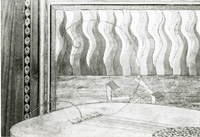 Fig. 6.87. Lute with broken strings, Urbino studiolo. Fig. 6.87. Lute with broken strings, Urbino studiolo. |
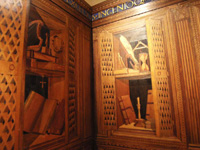 Fig. 6.88. North corner of Gubbio studiolo. Fig. 6.88. North corner of Gubbio studiolo. |
162A question remains concerning the musical instruments. If the studioli embody harmony and concinnitas, why then does each studiolo present instruments with broken strings? On first reading, it is plausible that a subject as thin and "random" as a broken string would have afforded intarsists the opportunity to display their clever wisdom through a detail that evokes surprise and delight. At Urbino, the broken string of a lute spirals gracefully inward. At Gubbio we find two instruments with broken strings—a lute and a St. David's harp. Each of these "Apollonian" instruments was historically referred to as a lyre and demanded attentive tuning: in the cabinet below the harp we find its tuning mechanism, whose tau-like shape evokes the spiritual temperament of the Franciscan Order.309
163These subtleties are easily taken for granted until we consider a passage from Plato's Phaedo, which recounts the final hours of Socrates's life. In this inquiry on the mortal coil and the immortality of the soul, the character Simmias wonders: "Harmony is a thing invisible, incorporeal, perfect, divine, existing in the lyre which is harmonized, but [is it perhaps] that the lyre and the strings are matter and material, composite, earthy, and akin to mortality? And when someone breaks the lyre, or cuts and rends the strings . . . ."310 If the lyre strings represent the corporeal body, is the spiraling figure at Urbino perhaps a memorial gesture to Battista Sforza? Do the broken lute and harp strings at Gubbio refer to the departed souls of Guidobaldo's parents? And if so, then where would their souls have alighted?
164"After death," Plato offers, "the genius of each individual, to whom he belonged in life, leads him to a certain place in which the dead are gathered together."311 At Urbino this "certain place" is evoked, figuratively and literally, in the architecture of the studiolo. The Virgilian paraphrase "virtutibus itur ad astra" suggests that one might enter the pantheon of communal memory by virtuous deeds, joining the elect members of uomini illustri depicted above the intarsia.312 It is likely that the astral significance of this paraphrase was also taken more literally. In Timaeus, Plato relates that the soul descends from the stars and, on the death of its mortal body, returns to the firmament by reincarnation, a theme that recurs in Dante's Paradiso (4.49–60) and several quattrocento works.313 Ficino and Giovanni Santi each declared that Federico's soul (alma) had been sent to earth by Jupiter to resuscitate ancient wisdom.314 At Gubbio the Montefeltro eagle, described by Santi as "l'ucel di Giove" (the bird of Jupiter), surmounts an intarsiated helmet believed to have been modeled on an original by Antonio Pollaiuolo, an artist directly associated with Ficino's Platonic Academy.
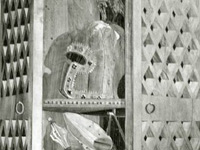 Fig. 6.89. Federico's helmet and scepter, Gubbio studiolo. Fig. 6.89. Federico's helmet and scepter, Gubbio studiolo.Extended Caption 30 |
165 As a departure from the worldly body, contemplation was viewed as a habitual enactment of death that purified one's soul in preparation for its eventual reunion with the firmament. Echoing Plato and Ficino, Castiglione advises:
Let us, then, direct all the thoughts and forces of our soul to this most sacred light, which shows us the way that leads to heaven; and following after it, let us lay aside the passions wherewith we were clothed at our fall, and by the stairway that bears the shadow of sensual beauty on its lowest step, let us mount to the lofty mansion where dwells the heavenly, lovely and true beauty, which lies hidden in the inmost secret recesses of God, so that profane eyes cannot behold it. Here we shall find a most happy end to our desires, true rest from our toil, certain cure for our miseries, most wholesome medicine for our diseases, safest refuge from the boisterous storms of this life's tempestuous sea.315
166In spite of remarkably careful preparations, fortune did not smile on Federico's son. Guidobaldo was crippled with symptoms of podagra (gout), possibly as a result of poisoning, which greatly reduced his effectiveness as a condottiere and rendered him unable to participate in the evening festivities immortalized by Castiglione.316 Unlike his "invincible" father, Guidobaldo was twice exiled from Urbino. On one of these occasions, Guidobaldo suffered the indignity of losing the "impregnable" castle of San Leo, the heart of the Montefeltro dynasty.317 During the second exile, in 1502, the ducal palaces at Urbino and Gubbio were plundered: numerous precious items were stolen or destroyed and the manuscripts of Federico's famed library, their covers torn off, were removed to Forlì.318 Even after Guidobaldo returned to power, his rule was overshadowed by his inability to produce an heir. Although the official adoption of his nephew, Francesco Maria della Rovere, ultimately proved beneficial for the dukedom, the line of the Montefeltro concluded with the artistic and intellectual progeny conceived by Federico, Guidobaldo, and the members of the Urbino court. Their legacy offers material evidence to the roles of the studioli in preparing the Montefeltro dukes for worldly and otherworldly matters, demonstrating the capacity for architecture to provide theaters for epiphany between the known and the unknowable.
Notes
Note 1: For the complete narrative, see Vespasiano da Bisticci, Vespasian Memoirs, 109. Also Pernis, "Ficino's Platonism and the Court of Urbino," 274–75. back
Note 2: "Watchtowers should stand out above the building, to make any disturbances easier to trace." Alberti, Art of Building, 5.3.121. back
Note 3: Pernis, "Ficino's Platonism and the Court of Urbino," 80. back
Note 4: Scala a lumaca, or "snail stairs," was and remains a common expression for a spiral staircase. back
Note 5: Although a side exit was available near the base of the tower, for the morning exercise on horseback the duke and his companions probably left the entrance court by way of a spiral ramp devised by Francesco di Giorgio. Alberti professes "no objections" to a private side door to the palace "for the master of the house alone" that enables him "to let in secret couriers and messengers, and to go out whenever the occasion and circumstances demand." Art of Building, 5.2.120. back
Note 6: The stables were adjacent to the thermal bath, whose water was heated by a kitchen fire behind a wall. See also Pernis, "Ficino's Platonism and the Court of Urbino," 99–112. back
Note 7: Pernis and Adams, Montefeltro and Malatesta, 17. back
Note 8: The author of the Ordine et officij is not known for certain, but several have convincingly suggested Ottaviano degli Ubaldini, at some point during the 1480s (in preparation for, perhaps, or in response to his role as regent?). Ordine et officij, ed. Eiche. back
Note 9: See Pedro Berreguete's official portrait of Federico and Guidobaldo. In another possible association, Vespasiano notes that Federico supported the "friars of Scopeto." Vespasiano da Bisticci, Vespasian Memoirs, 106. back
Note 10: To the end of his life, as Vespasiano noted, the duke attended Mass every morning. Although it would have been appropriate for Federico to pray in the cappella, as part of his symbolic ascent from body to spirit, it is uncertain whether he would have received Mass therein. Pernis, "Ficino's Platonism and the Court of Urbino," 150n69. back
Note 11: "Haec Quicumque Petit Mondo Pia Limina Corde Hic Petit Aeterni Fulgida Regna Poly." Pernis, "Ficino's Platonism and the Court of Urbino," 149. In light of the transparently humanist program of the tempietti—a Christian chapel juxtaposed with "polytheistic" muses—the phrase "Regna Poly" stands out, especially considering the soon-to-be-published Hypnerotomachia poliphilo, a work dedicated to Guidobaldo da Montefeltro. back
Note 12: "Bina Vides Parvo Discrimine Juncta Sacella Altera Pars Musis Altera Sacra Deo Est." Rotondi, Ducal Palace of Urbino, 91. Compare with Luciano Cheles's translation: "Here you see the two small temples divided by just a small space; one is dedicated to the Muses, the other to God." Studiolo of Urbino, 13n21. back
Note 13: Granted between 1471 and 1484, perhaps for the benefit or at the behest of Federico. back
Note 14: Pernis, "Ficino's Platonism and the Court of Urbino," 150. back
Note 15: "Accipite Spiritum Sanctum Et Quorum Remiseratis Peccata Remittuntor Eis." Pernis, "Ficino's Platonism and the Court of Urbino," 151. back
Note 16: In the Inferno, Dante encounters Guido il Vecchio da Montefeltro (d. 1298) in the eighth circle of Hell (canto 27). Although he had retired as a condottiere and joined the Franciscan Order in 1296, Guido gave false counsel to the Colonna during Pope Bonifacio VIII's (1295–1303) campaign against the family. Guido had failed to repent his sins, preferring the pope's fraudulent absolution, and was condemned to eternal damnation (see Renzetti, "Guido di Montefeltro e Bonifacio VIII"). As an interesting aside, it was Bonifacio VIII who, on the occasion of the Jubilee of 1300, had inaugurated the practice of granting indulgences to the dead. LeGoff, Medieval Imagination, 74. An ancestral namesake of Ottaviano's was also condemned to the Inferno. The earlier Ubaldini, lodged in the sixth circle of Hell (canto 10), had been a papal legate accused of heresy for sympathizing with the Holy Roman Emperor and for Epicureanism. Pernis and Adams, Montefeltro and Malatesta, 5. back
Note 17: A full description of Federico's charitable support and religious observances is available in Vespasiano's Memoirs. back
Note 18: Pernis, "Ficino's Platonism and the Court of Urbino," 126. Works of St. Bernardino in the ducal library: U.L. 1124. (1) Albizeschi s. Bernardini (in ms. Bernardini senensis) tractatus de contractibus et usuris seu sermones quadragesimales de evangelio aeterno; and (3) Albizeschi s. Bernardini sermones quadragesimales de christiana religione. Bound with (2) Periili Io. Angeli; (4) Francisci de Platea; and (5) Ioannis Andreae. back
Note 19: QUISQUIS ADES LAETUS MUSIS ET CANDIDUS ADSIS FACUNDUS CITHARAE NIL NISI CANDOR INEST. See Maria Pernis's analysis of this inscription and the term "Candidus" in "Ficino's Platonism and the Court of Urbino," 256–67. back
Note 20: The panels of Minerva and the muses Euterpe and Urania have disappeared. For iconographic analysis of the muses in both the Urbino and Gubbio studioli, see Cheles, Studiolo of Urbino, 68. back
Note 21: Maria Pernis provides a careful analysis of the tempietti in "Ficino's Platonism and the Court of Urbino," chap. 6 and conclusion. back
Note 22: "A sacculus would be something rather larger than a purse, and was used sometimes to carry books as well as coins—very precious things, useful for nourishing memories." Carruthers, Book of Memory, 39. Sacella appears to be a hybrid of sacculus with cella, which is derived from the image of a beehive, a lasting metaphor for storing wisdom away like honey. For discussion of these related terms, see Carruthers, Book of Memory, chap. 1, "Models for the Memory," esp. 33–45. back
Note 23: Cheles, Studiolo of Urbino, 13. Iris Origo has described this reconciliation as the "harmonious blending of the ideals of Humanism and of Christianity." "Education of Renaissance Man," 60. back
Note 24: Three copies of the City of God were present in the ducal library. back
Note 25: From Vespasiano's accounts it is unclear if, or at what point Federico would have eaten breakfast. Although there is no account of meal before afternoon "repast," it is possible that the duke would have taken some form of light colazione to fuel the early stages of his day. Publicius recommends six raisins and six juniper berries after rising, and "a timely lunch without breakfast." Art of Memory, 29. back
Note 26: Thornton, Scholar in His Study, 27–51. A 17th-century plan of the ducal palace at Gubbio lists its studiolo as "Gabinetto." back
Note 27: Cheles, Studiolo of Urbino, 23. Federico possessed two copies of Petrarch's De vita solitaria, one of which (Urb. Lat. 377) he had inherited from his grandfather, Antonio da Montefeltro (1348–1404). Not one of the studies mentioned has survived. back
Note 28: Including a fresco executed by Altachiero (ca. 1400) in the palace of Francesco il Vecchio da Carrara in Padua (see Cheles, Studiolo of Urbino, fig. 90) and illuminations from manuscripts of Petrarch's works, such as the De viris illustribus. See also Raggio, Gubbio Studiolo, 1:fig. 5–83. back
Note 29: Baxandall, "Guarino, Pisanello and Manuel Chrysoloras," 196. Also Cheles, Studiolo of Urbino, 36. Leonello d'Este's study (1448–53) at his castle at Belfiore incorporated intarsia work created for the "first recorded studiolo" (ca. 1414), which belonged to Paolo Guinigi, the lord of Lucca. Included in the contents of the d'Este study was a portrait of St. Jerome in the wilderness, commissioned from Piero della Francesca in 1449. The studiolo at Belfiore was the likely site of the (unsuccessful) reconciliatory meeting between Federico and Sigismondo Malatesta, arranged by Borso d'Este in 1457. For the demise of this studiolo in the War of Ferrara (1482–84), see Wilmering, Gubbio Studiolo, 2:138. back
Note 30: Epistolae, 2.7.8: "Parieti eius cubiculi mei in bibliothecae speciem armarium insertum est quod non legendos libros sed letitandos capit" (My cubiculum has a press let into the wall that does duty as a library, and holds books not merely to be read, but read over and over again). I.V. #464. back
Note 31: I.V. #293. Alberti, Art of Building, 5.17.149. The influence of Pliny's Natural History was deep. It is cited frequently in Alberti's De pictura and would be translated into Italian by Alberti's protégé, Cristofero Landino (see Grayson's translation of De pictura, 98n12). Bartolomeo Platina also composed an Epitome of Pliny's Natural History in 1463 while employed (with Alberti) as a member of the College of Abbreviators. back
Note 32: Baldi makes this claim, Della vita e de' fatti, 3:55–56. Rykwert describes a manuscript finished in 1483 "for the very recondite bibliophile Federico da Montefeltro." Alberti, Art of Building, xviii. back
Note 33: Like Federico, Alberti was an illegitimate child. As a result, he was deprived of his inheritance and had throughout his life to strike a balance between intellectual and economic pursuits. See Kemp, "Introduction," 3. back
Note 34: On the advantages and disadvantages of scholarship, 1428. Kemp, "Introduction," 3. back
Note 35: Urb. Lat. #229. This manuscript belonged to Ottaviano degli Ubaldini. When the library was recataloged toward the end of the 15th century, Alberti's manuscript was placed alongside Aegidius Romanus's De regimine principe, Thomas Aquinas's Physiognomia, and Gregory the Great's Moralia in Job. back
Note 36: Vespasiano da Bisticci, Vespasian Memoirs, 99. back
Note 37: The conversation took place while Federico and a troop of cavalry escorted the pope to a summer retreat in Tivoli. Garin, Prosatori latini, 674–76. Raggio, Gubbio Studiolo, 1:23. back
Note 38: I.V. #294, 607. Pernis and Adams, Montefeltro and Malatesta, 80. For more on the Barrocci family and their impact on Urbino, see Vetrano, ed., La scienza del ducato di Urbino. back
Note 39: Cheles, Studiolo of Urbino, 10n3. back
Note 40: Concerning the construction of fortresses, Machiavelli cautions: "Fortresses may or may not be useful according to the times; if they do good in one way, they do harm in another. The question may be discussed thus: a prince who fears his own people more than foreigners ought to build fortresses, but he who has greater fear of foreigners than of his own people ought to do without them. The castle of Milan built by Francesco Sforza has given and will give more trouble to the house of Sforza than any other disorder in that state. Therefore the best fortress is to be found in the love of the people, for although you may have fortresses they will not save you if you are hated by the people. When once the people have taken arms against you, there will never be lacking foreigners to assist them." The Prince, 119. back
Note 41: Similar to its English counterpart "House," an Italian "Casa" signified both a historical family and its physical dwelling (e.g., "House of Usher"). back
Note 42: Castiglione, Book of the Courtier, 264. It is interesting that "true courage" was identified with being freed from, rather than compelled by, one's passions. back
Note 43: "Ich kahn verdant ein grose Eisen." Olga Raggio attributes this emblem to Federico's grandfather (Gubbio Studiolo, 1:15), while Luciano Cheles attributes it to Federico's father, Guidantonio (Studiolo of Urbino, 78–79). See also Dorothy Miner, "Ovum Struthionis." This work was executed between July 1472 and autumn 1474. back
Note 44: Olga Raggio has identified this type of grenade as a petard, an explosive device mounted to vertical surfaces (doors and walls) to cause a breach. Gubbio Studiolo, 1:114. back
Note 45: Vespasiano da Bisticci, Vespasian Memoirs, 87. back
Note 46: Sigismondo dei Conti, La storie de' suoi tempi, 3:124, as cited in Tommasoli, La vita di Federico da Montefeltro, 348n142. back
Note 47: Vespasiano da Bisticci, Vespasian Memoirs, 84. In a book borrowed from Duke Guidobaldo, the poet Poliziano composed a Greek epigram praising the lender as the worthy son of a father who never suffered defeat, anikitoio patros gonou. Castiglione, Book of the Courtier, 325n27. back
Note 48: An artistic rendering of such negotiations is found in Andrea Mantegna's Camera degli Sposi at the ducal palace of the Gonzaga in Mantova. back
Note 49: The Italian word for pen, penna, originates from feather. A condottiere would have had another source of familiarity with penne, as the stabilizing components of the archer's arrow. back
Note 50: Cheles, Studiolo of Urbino, 51–52. back
Note 51: "Disputatione Camaldulenses," in Garin, Prosatori latini, 762, 764. It is fitting that Alberti would discuss Hercules: his knowledge of Vitruvius would include the episode in the introduction of book 2, when the architect Dinocrates, dressed as Hercules, presents a model of an ideal city to Alexander the Great, who retains his services to design the city of Alexandria. See Cheles, Studiolo of Urbino, fig. 109. The image of Hercules fighting the Nemean lion is also found in the Door of the Virtues. back
Note 52: Starn, Ambrogio Lorenzetti, 74. A pavis is a medieval shield of the sort made in Pavia. back
Note 53: I.V. #465 (fol. 64v). back
Note 54: Cheles identifies the basket of fruit with Giotto's image of Charity in the Scrovegni Chapel (painted ca. 1306) in Padova. Cheles, Studiolo of Urbino, 82, figs. 100, 101. back
Note 55: Grenade and pomegranate (the Italian equivalent is melagranata) both emerge from the Latin granatus, filled with seeds. Pomegranates are found in abundance in the studiolo; at the base of the pilasters (unripened) and in the brocade covering for the bench seat adjacent to the studiolo-within-a-studiolo. In this textile pattern the pomegranates commingle with a curious seven-lobed figure. Virginia Tenzer notes: "The pomegranate pattern dominated textile design in Italy between 1420 and 1550 "Iconography," 302n43. Pomegranates are found also in the Door of the Virtues. back
Note 56: Cheles, Studiolo of Urbino, 71n77. back
Note 57: "I think princes ought to lead both the two lives [active and contemplative], but more especially the contemplative life, because in their case this is divided into two parts: one of which consists in perceiving rightly and in judging; the other in commanding (justly and in those ways that are fitting) . . . and of this Duke Federico spoke when he said that whoever knows how to command is always obeyed. And as command is always the chief office of princes, they ought often to see with their own eyes and be present at the execution of their commands, and ought also sometimes to take part themselves, according to the time and need; and all this partakes of action: but the aim of the active life ought to be the contemplative, as peace is that of war, repose that of toil." Castiglione, Book of the Courtier, 261. These comments echo the sentiments of Aristotle in Politics, 8.3.1337b33. back
Note 58: This matter occupies chapter 14 of Machiavelli's The Prince. back
Note 59: Castiglione, Book of the Courtier, 263. back
Note 60: Cheles, Studiolo of Urbino, 75. back
Note 61: "Mars ferus et summum tangens cytherea tonantem dant tibi regna pares et tua fata movent." See Cheles, Studiolo of Urbino, 72n77, and Raggio, Gubbio Studiolo, 1:26, figs. 3–3, 3–4. Cytherea was an island near the point where Venus emerged from the ocean. back
Note 62: De liberorum educatione. Aeneas Silvius Piccolomini, I.V. #479–84, p. CXLIX, n. 42. Schevill, First Century of Italian Humanism, 77. Also Woodward, Vittorino da Feltre, 136. back
Note 63: "Nolo te Scipionem, sed Alexandrum, respondit; fuit enim, ut tu, principis filius, et ipse princeps clarissimus." Excerpt from the biography of Vittorino da Feltre, commissioned by Federico from his classmate Francesco Prendilacqua. I.V. #418. See Cheles, Studiolo of Urbino, 74n85. back
Note 64: Plato, The Republic, 7.525b. back
Note 65: James Dennistoun has noted: "The d'Este of Ferrara, the Sforza of Pesaro, but above all, Duke Federigo Federico of Urbino, improving upon [Sigismondo Malatesta's] example, had shown how mental cultivation might be brought to modify, or, as the Latin idiom has it, to humanise, without ennervating, a martial character." Memoirs of Dukes of Urbino, 2:43. back
Note 66: "[Federico] sent to Flanders and brought thence a master [Justus von Ghent] who did at Urbino many very stately pictures, especially in Federigo's study." Vespasiano da Bisticci, Vespasian Memoirs, 101. The Memoirs—in which we find Federico's biography among a short list of popes and rulers—is itself a verbal gallery of illustrious men of the quattrocento, including biographies for Cardinal Bessarion, Vittorino da Feltre, Nicholas of Cusa, San Bernardino, and others of Federico's circle. back
Note 67: Cheles, Studiolo of Urbino, 35. There are two main branches of this tradition: one chivalric, celebrating men of arms, and the other glorifying intellectual and moral worth, such as Altichiero's portrait of Petrarch in the cycle of frescoes at the palace of Francesco il Vecchio da Carrara in Padua. The chivalric tradition is exemplified by the cycles of Taddeo di Bartolo and Andrea Castagna, previously mentioned, and the Sala degli Affreschi of the Urbino palace, attributed to Giovanni Boccati. In the quattrocento, imitation (equaling) did not signify "copying," as it does now. While Machiavelli and Castiglione suggest a modest approach to achieving greatness (with respect to one's heroic predecessors), Platina baldly states that his contemporaries might supersede (emulate) the achievements of the ancients in all matters. back
Note 68: Castiglione, Book of the Courtier, 95. back
Note 69: Machiavelli, The Prince, 53. back
Note 70: Cecil H. Clough ("Art as Power," 23–42) offered an arrangement of the illustrious men by which he claimed to resolve inconsistencies of lighting in east and west wall portraits (see also Cheles, Studiolo of Urbino, 19n16). Clough also used updated measurements to relaunch an argument that included double portrait of Federico with Guidobaldo top and center in the east wall, surmounting Piero della Francesca's Flagellation. Though Clough's rationale is interesting, Cheles's previous critique holds (Studiolo of Urbino, 15–21): a link between the portrait of Federico mentioned by Vespasiano and the double portrait is doubtful. Most likely, Vespasiano's comment refers to the portrait of Federico in the robes of a humanist, in the intarsia below. There is a more problematic sticking point for Clough's argument, however. Although he joins almost all other scholars in supporting Laurent Schrader's account of the portraits' sequential arrangement—from 1592, the earliest such report before their disassembly in 1631—Clough's reconstruction places Plato and Petrarch at the center of the south wall. This location is decidedly not prominent, providing no logical reason for Schrader to have produced a list that began with Plato and ended with Petrarch. In contrast, Pasquale Rotondi's scheme of placing Plato at the west end of the north wall—the scheme that is generally accepted and in situ—remains most satisfying while in keeping with Schrader's note. Plato's position directly below the beginning of the dedicatory text, together with his immediate visibility from the visitors' entrance, at which he gazes, makes it an obvious "starting point." Until proven otherwise, compositional inconsistencies hold less gravity here than historical documentation. For my part, I have puzzled over inconsistencies in architectural features in the portraits—why, for example, are Albertus, Sixtus IV, Dante, and Petrarch given wood-beamed ceilings when all other ceilings in the bottom register portraits are masonry, and wood beams are consistent in the top register?—and considered alternative arrangements unhinged from the accepted sequence. Unfortunately, while these afford tantalizing adjacencies with features in the intarsia, they resolve many—but never all—of the inconsistencies. For the time being, then, speculation is trumped by the historical evidence of Schrader's list, and Rotondi's arrangement remains the most plausible. back
Note 71: Cheles, Studiolo of Urbino, 44–45. "Plato/Aristotle, Ptolemy, Cicero, Homer/Virgil, Euclid, Solon and Hippocrates are so incontrovertibly authoritative that they can all act as exemplars, the perfect embodiment of their individual disciplines: Logic, Astronomy, Rhetoric, Poetry, Geometry, Law and Medicine, respectively." Cheles has treated the organization and breakdown of the uomini illustri extensively (35–52). For the list of encomia written on each portrait, see Cheles, appendix A, 93–95. back
Note 72: There are four exceptions. The east wall includes Moses and Solomon (whose wisdom nonetheless represents the foundations of the Church). The west wall includes the ur-humanists Dante and Petrarch. The distinction between the top and bottom registers of the uomini illustri is akin to the wall between the tempietti. back
Note 73: The friction centered on the preeminence of Duns Scotus or Thomas Aquinas. back
Note 74: Vespasiano da Bisticci, Vespasian Memoirs, 100. back
Note 75: In 1475, Urbino hosted a convocation of the Franciscan Order, an event that Maria Pernis suggests influenced certain architectural decisions concerning the ducal palace. "Ficino's Platonism and the Court of Urbino," 136–46. back
Note 76: Kristeller, Renaissance Thought and Its Sources, 159. Cardinal Bessarion owned the Catena aurea of Aquinas (B786–87) and six works of Ioannes Duns Scotus (B460, 706, 781, 785, 793, 903). See catalog B of Labowsky, Bessarion's Library. back
Note 77: Tenzer, "Iconography," 267. back
Note 78: Citing Seneca's treatise on On the Tranquillity of Mind (I.V. #236), Virginia Tenzer notes that the inclusion of these figures on the east wall strengthens the narrative of the vita activa/vita contemplativa. "Iconography," 271. back
Note 79: Aristotle, Politics, 2.12.1273b27. back
Note 80: Pietro d'Abano (1253–1316), to whom Ficino frequently refers, taught at the University of Padua. In his treatise on a proper humanist education (1450), Pope Nicholas V (then Tommaso da Sarzana) writes that d'Abano's astrological works were appropriate for every library, even though the physician had been considered a heretic and his bones were burned as a result of his interest in the occult and refutation of the existence of the devil. Influenced by Averroes, his most important work is the Conciliator differentiarum, which reconciled the Arab and Greek schools of medicine. I.V. #CLVI, n. 15. Cheles, Studiolo of Urbino, 45. Also Tenzer, "Iconography," 255. back
Note 81: Here, the Montefeltro leanings might slightly favor Medicine and Astrology, as Leonardo Bruni had composed a treatise (1405) on the proper humanist education for a sister of Count Guidantonio da Montefeltro. Coluccio Salutati, De nobilitate legum et medicinae. De verecundia. I.V. #252, 489. Poggio Bracciolini, Historica tripartita, I.V. #397, 401, 476, 477, 608, 615, p. CXLIX, n. 52, p. CLVI, n. 31. See Tenzer, "Iconography," 282. back
Note 82: Cheles, Studiolo of Urbino, 41. "Pollici proximus digitus mediumque, qua dexter est, unguem pollicis summo suo iungens, remissis ceteris, est et approbantibus et narrantibus et distinguentibus decorus." Quintilian, Institutio oratoria, 12.3.101, 4:296. Quintilian's entries in the ducal library are I.V. #458, 459, p. CXLVII, n. 29. back
Note 83: Cheles, Studiolo of Urbino, 42. Quintilian, Institutio oratoria, 11.3.100, 4:296. back
Note 84: Likely, there are additional clues in the specificity of these gestures. It might be valuable, for example, to compare the hand gestures of the Franciscan Duns Scotus with tables on the finger symbolism of numbers, the first of their kind, compiled by the Franciscan Luca Pacioli in his Suma de arithmetica geometria proportioni and proportionalita. The tables are located on page 39 of the treatise, verso. Boethius's gesture might be interpreted as arithmetic counting; however, since his presence points also to the discipline of music, the gesture might allude to the mnemonic finger notation devised by Guido d'Arezzo (ca. 990–1050) for solmization. back
Note 85: Alberti, De pictura (tr. Grayson), 2.41.76 (see also Kemp's editorial notes 45, 99.) Cicero De amicitia 14.50. back
Note 86: Machiavelli, The Prince, chap. 14. back
Note 87: Origo, "Education of Renaissance Man," 68. back
Note 88: Montefeltro had commissioned Donato Acciaiuoli, a premier Aristotelian scholar who corresponded with Ficino, to compose a commentary. back
Note 89: Vespasiano da Bisticci, Vespasian Memoirs, 100. back
Note 90: Carruthers, Book of Memory, 169. back
Note 91: Gregory the Great, Moralia in Job, 1.33. back
Note 92: Carruthers, Book of Memory, 166: "The monastic custom of reading during meals is described in some texts as an explicit literalizing of the metaphor of consuming a book as one consumes food." back
Note 93: Petrarch, Secretum, dialogue 2; Draper's translation with alterations from Carruthers (Book of Memory, 163). See also Clark, Care of Books, 291–318. back
Note 94: Pietro Bembo visited Urbino for a few days to use its famed library and remained for six years. A colleague of Castiglione's, Bembo was a central character in the Book of the Courtier, helping in its final revisions. Later in life he was appointed the first official librarian of the Biblioteca San Marcia, from 1530 to 1539, and led the Ciceronians in debates with Erasmus concerning stylistic imitation. See Scott, Controversies over the Imitation of Cicero. back
Note 95: See Castiglione's discussion of a prince's privacy in Book of the Courtier, 93. back
Note 96: Carruthers, Book of Memory, 173. back
Note 97: "Strepitus . . . means 'loud noise, confusion, rumbling,' and other sorts of disordered, unconcentrated, 'busy' noise, the interruption that daily congress creates." Carruthers, Book of Memory, 171. back
Note 98: Augustine, Confessions, 10.11. back
Note 99: "Cogitatio semper vago motu de uno ad aliud transit." Richard of St. Victor, I.V. #87. See Summers, Judgment of Sense, 202. Also: Hugh of St. Victor recalls Augustine's classification of rational vision into cogitatio, meditatio, and contemplatio: "cogitatio is bound to particular things, either to sensations or memories." back
Note 100: Carruthers, Book of Memory, 33. back
Note 101: Augustine, De trinitate, 16.6.8 (I.V. #39); Summers, Judgment of Sense, 202: "It is only through cogitation that the mind can be brought under its own gaze." back
Note 102: See Carruthers, Book of Memory, 173: "Without...emotional concentration, memory fails." Also: "Even in moments of stress the counsel of experience will constrain a turbulent and willful mind" (180). back
Note 103: Labalme, Bernardo Giustiniani, 23. back
Note 104: Vespasiano da Bisticci, Vespasian Memoirs, 107. back
Note 105: Vespasiano da Bisticci, Vespasian Memoirs, 109–11. back
Note 106: Cheles, Studiolo of Urbino, 23. back
Note 107: Alberti, Art of Building, 5.3.121. back
Note 108: Alberti, Art of Building, 5.3.121. From Seneca De beneficiis 6.34.2 (I.V. #236). back
Note 109: I.V. #447. back
Note 110: Cicero De oratore 2.86. back
Note 111: "(In porticu) a structure that provides the intercolumnia [intercolumnar loci] often recommended as backgrounds for memory work." Carruthers, Craft of Thought, 177. back
Note 112: Cicero, De oratore, 3.5.17. back
Note 113: Vitruvius, De architectura, 6.4.1. Vitruvius should not be taken too literally: just as his measurements and proportions often did not correspond with the actual structures, his rules of proper orientation seem to reflect his ideal, rather than actuality. The cubiculum from the villa of Fannius Synestor faced north. back
Note 114: Epistolae, 2.7.8: "Parieti eius cubiculi mei in bibliothecæ speciem armarium insertum est quod non legendos libros sed letitandos capit." back
Note 115: Veyne, History of Private Life, 378–79. back
Note 116: As conveyed through Pliny the Younger, Natural History, 9.35. (I.V. #353). back
Note 117: Carruthers, Craft of Thought, 178. back
Note 118: Carruthers, Craft of Thought, 178. back
Note 119: The Romans adopted this posture from the Greeks. Lectron, a couch, a bed, a support for books. See also Plato's Symposium, 115n2. back
Note 120: Castiglione, Book of the Courtier, 132. The lettiera was a standard form of bed during the 15th century. back
Note 121: "Una tavola nel mezzo": Baldi, cited by Stornajolo, Biblioteca Vaticana, xiv, I.G. It is doubtful that the table would have been placed in the exact center of the studiolo, which would have blocked the perspectival standpoint from use. back
Note 122: Wilmering, Gubbio Studiolo, 2:156. back
Note 123: Epistolae, 2.7.8: "My cubiculum has a press let into the wall which does duty as a library, and holds books not merely to be read, but read over and over again." back
Note 124: Cheles, Studiolo of Urbino, 22. back
Note 125: I thank Giancarlo Ascani for recounting this episode. Olga Raggio states that the intarsia has never been disassembled except for cleaning and maintenance. back
Note 126: Including such items as the inkwells and glasses represented in the intarsia at Urbino and Gubbio. See Tenzer, "Iconography," 208. back
Note 127: Thornton, Scholar in His Study, 121. back
Note 128: Vespasiano da Bisticci, Vespasian Memoirs, 96. Closet, literally translated from gabinetto, falls under the rubric of terms synonymous with studiolo. back
Note 129: As an example of how frequently (and abruptly) the tides of alliances changed at this time, Roberto Malatesta, Federico's son-in-law whom the duke had protected from Pope Paul in the Battle of Rimini of 1469, was now in charge of the papal forces: Roberto and Federico would die on the same day, 10 September 1482. It was rumored that Roberto was poisoned by Sixtus IV's nephew, Girolamo Riario, who desired to assume command of Rimini. See editor's note, Vespasian Memoirs, 98–99. back
Note 130: Vespasiano describes the offer as 100,000 ducats in war and 60,000 in peace. Federico was employed by the king of Naples for 32 years. back
Note 131: Vespasiano da Bisticci, Vespasian Memoirs, 85. back
Note 132: This trope exemplifies the progymnasmata exercise of chreia. back
Note 133: Raggio, Gubbio Studiolo, 1:113–14. back
Note 134: Machiavelli, The Prince, 101. back
Note 135: Vespasiano da Bisticci, Vespasian Memoirs, 91. back
Note 136: Machiavelli, The Prince, 89: "A prince who is ignorant of military matters . . . cannot be esteemed by his soldiers, nor have confidence in them." back
Note 137: Pernis, "Ficino's Platonism and the Court of Urbino," 49–65. back
Note 138: Machiavelli, The Prince, 84. The Prince offers insight into the political machinations in Italy during the latter half of the quattrocento. Owing to the rise in its temporal powers, the Church had become increasingly dependent on external military forces to defend (if not increase) the bounds of its rule. back
Note 139: Vespasiano da Bisticci, Vespasian Memoirs, 87–90. back
Note 140: Machiavelli, The Prince, 103. back
Note 141: Machiavelli, The Prince, 92. back
Note 142: Merciful, faithful, humane, sincere, religious. Yet soon after, Machiavelli adds, "It must be understood that a prince, and especially a new prince, cannot observe all those things which are considered good in men, being often obliged, in order to maintain the state, to act against faith, against charity, against humanity, and against religion." The Prince, 102. back
Note 143: Machiavelli, The Prince, 92–93. back
Note 144: Cicero, De inventione, 2.53.160. back
Note 145: "After he had heard the Ethics many times, comprehending them so thoroughly that his teachers found him hard to cope with in disputation, he studied the Politics assiduously." Vespasiano da Bisticci, Vespasian Memoirs, 99. back
Note 146: Machiavelli, The Prince, 101. back
Note 147: Machiavelli, The Prince, 102. back
Note 148: See Pernis and Adams, Montefeltro and Malatesta, 29–33. Within a week of sending this letter, Federico seized advantage of the poor relations Sigismondo kept with his own family by arranging for the marriage of Malatesta's cousin, Costanza Varano da Camerino, and Alessandro Sforza, who subsequently governed the coastal city of Pesaro. In one stroke, this marriage strengthened Federico's alliance with the Sforza in Pesaro and Milan, and gave Urbino direct access to the sea, cutting the lands of the Malatesta in half. In 1460, these alliances were reinforced when Duke Francesco Sforza arranged the marriage between Federico and Battista Sforza, daughter of Alessandro and Costanza Sforza. back
Note 149: Eamon, Science and the Secrets of Nature, 223: "Princely virtù, rehearsed and extolled ad nauseum in the courtly literature and in dedications of books to patrons." back
Note 150: For the Council of Basel in 1433, Nicholas of Cusa offered a proposal for harmonizing the Church and empire, the De concordantia catholica. However, Pope Eugenius dissolved the council by 1437, and the matter remained unresolved at Cusa's death in 1464. Nonetheless, the council offered an opportunity for Cusa to work with Aeneas Silvius Piccolomini, the future Pope Pius II, with whom he would collaborate on the reunification of the Byzantine and Roman churches. In 1437, Cusa was sent to Constantinople as an ambassador for the Holy See. Along with his colleague Cardinal Bessarion, Cusa collected Greek manuscripts (which were otherwise vanishing with the Byzantine Empire) and served as a vital bridge between Greek and Latin thought. back
Note 151: See Rykwert, "Glossary," in Alberti, Art of Building, 426. back
Note 152: For example, Castiglione writes: "I did not say that temperance wholly removes and uproots the passions from the human mind, nor would it be well to do this, for even the passions contain some elements of good; but [temperance] reduces to the sway of reason that which is perverse in our passions and recusant to right." Book of the Courtier, 254. back
Note 153: The cardinal virtues were traditionally connected to the practical wisdom of politics and action. "Chroniclers, biographers and panegyrists tended to associate their heroes especially with the cardinal virtues, rather than the others—possibly because the Theological ones were so essential that they could be taken for granted." Cheles, Studiolo of Urbino, 67. back
Note 154: Although Luciano Cheles describes the studiolo as "imaginative," he concludes that its subject matter is "a banal one (like that of most contemporary panegyrics)." Studiolo of Urbino, 91. back
Note 155: As an example of virtues in concert, we read in Machiavelli that the prince "must be cautious in believing and acting . . . and must proceed in a temperate manner with prudence and humanity, so that too much confidence does not render him incautious, and too much diffidence does not render him intolerant." The Prince, 97. back
Note 156: Cheles, Studiolo of Urbino, 63. back
Note 157: "Stat sua cuiquedies; breve et inreparabile tempus / omnibus est vitae; sed famam extendere factis, / Hoc virtutis opus." Aeneid, 202. back
Note 158: Virgil, Aeneid, 156. back
Note 159: Castiglione, Book of the Courtier, 264. back
Note 160: Alberti, Art of Building, 1.6.18. back
Note 161: "For all the ferocity of their inter-state squabbles, this was in a sense a rivalry of siblings. When faced with foreigners from across the Alps, from Iberia or the countries of Islam, they were always conscious of being different. Theirs was a common culture springing from a shared inheritance that went back, it so clearly seemed, to a heroic age when the united Italy of classical antiquity had ruled a vast empire." Thornton, Italian Renaissance Interior, 18. back
Note 162: The Venetians, who had lost much of their holdings overseas to the Ottomans, began to regard the terra firma with increasing interest. This became a new factor in the old sibling rivalries of the Italic powers. Meanwhile, the Turks would continue to press toward Italy; in 1480, they landed on Italian soil, subduing the southern seaport of Otranto. back
Note 163: Regarding the dubious conduct of condottiere, see chapter 12 of Machiavelli's The Prince. back
Note 164: The Council of Mantova (1459–60), hosted by Marquis Ludovico Gonzaga, Federico's childhood classmate at Vittorino da Feltre's Ca' Zoiosa, served as a platform for Pius II to organize the Italian states for a new crusade against the Turks. At the council, Federico was elected captain of the league. back
Note 165: See Milham's introduction to Platina, On Right Pleasure. back
Note 166: I.V. #229. back
Note 167: Kristeller, Renaissance Thought and Its Sources, 159. The debate over the primacy of Aristotle or Plato had been taken up by Bessarion's teacher, the arch-Platonist Gemisthus Plethon, and the Aristotelian Scholarios. It is interesting that George Trapezuntius (known also as Trivisanus and Trebisond) had taken a position contrary to Plethon and Bessarion's circle of familiares, since he had once belonged to it. Like Bessarion, Trapezuntius took active part in the exiled Greek community in Venice, being its first priest. Labowsky, Bessarion's Library, 52. Trapezuntius's polemical work, Comparationes philosophorum Platonis et Aristotelis, was written in 1455, three years after Plethon's death. As Paul Kristeller describes: "This work was much more violent than that of Scholarios in its doctrinal and personal attacks against Plethon and Plato himself, and it defended the superiority of Aristotle over Plato on all points, especially his agreement with Christian theology. This attitude of Trapezuntius is rather strange when we consider his life and training." Renaissance Thought and Its Sources, 158. Trapezuntius, like Bessarion, was of Byzantine origins (Crete) and, like Federico da Montefeltro, had attended Vittorino da Feltre's Ca' Zoiosa. back
Note 168: Pius II died in Ancona, waiting in vain for the forces to support this crusade. back
Note 169: Regiomontanus also became friends with Alberti. His works in the ducal library are I.V. #280 and p. CLII, n. 6. back
Note 170: Curious note: a volume in the Urbino library (I.V. #285), containing Euclid's Optics, Ptolemy's De iis qui in coelo aspiciuntor, and Mahomet's De algebra et almuchabala, was copied by Michele Foresio for a certain Francesco da Borgo Sansepolcro, on 24 October 1458. In the dedications to the Suma de arithmetica, Luca Pacioli refers to Pietro degli Franceschi de Borgo san Sepolcro. In the ducal library's Indice Vecchio, there is an entry for Petrus burgensis pictor (I.V. #286), a treatise on the Five Regular Bodies. It appears likely that the figure for whom Bessarion's manuscripts of Euclid (#XI, 6[1142]), and Ptolemy (#377 [895]) were copied was Piero della Francesca, who was then in Rome at the time. It is likely that a manuscript of Archimedes' works (I.V. #287), copied by Jacobus Cremonensis in Rome in 1458, also belonged to Piero. back
Note 171: Buonconte (1441–58) and Antonio (1450–1500) were both born out of wedlock, and legitimized by papal bull. Federico's first marriage, to Gentile Brancaleoni (d. 1457), produced no heirs. Buonconte, who was dear to Federico, was a promising soldier-scholar in the cast of his father. Antonio, also a well-educated soldier, married Emilia Pia in 1487. Guidobaldo (1472–1508), the legitimate heir to the dukedom, was born months before Bessarion died in Ravenna, en route to France. back
Note 172: Bessarion baptised Antonio in 1450, the year he met Federico, and later gave him the manuscript of Homer. MS Urbino graec. 137. Homer, Ilias. Zorzi, Bessarione e l'umanesimo, 2. back
Note 173: By this victory, the Medici maintained control over the supply of alum, an ingredient vital for fixing colours in wool. back
Note 174: I.V. #10. back
Note 175: One of the stipulations of his contract as captain of the Italic League was overriding loyalty to the Papal States, as knight of the pope. back
Note 176: When the attackers were captured and promptly executed, the pope excommunicated Lorenzo, and together with Naples, the Papal States declared war on Florence, effectively dissolving the Italic League. See Lee, "Assassination Solved." If Federico was indeed behind the coup attempt, as the letter suggests, he had (consciously or not) undermined the allegiance he himself led. Moreover, Ficino's 1482 dedication of "a fide regia fideregum" would be laden with irony, intentional or not. back
Note 177: Chapter 3 of Pernis, "Ficino's Platonism and the Court of Urbino." back
Note 178: Machiavelli, The Prince, 123. back
Note 179: Following his excommunication, Malatesta was employed by Venice to fight in Greece. While in Mistras, Sigismondo exhumed Pletho's remains, transported them to Rimini, and interred them in a sarcophagus ensconced in the southwest wall of the Tempio Matatestiano. back
Note 180: Aristotle, Nicomachean Ethics, 2.6 (I.V. #205–8). back
Note 181: Plato, Symposium, 115n3. Federico had been familiar with the Symposium through Vittorino da Feltre, who taught with a compendium of Plato's dialogues at the Ca' Zoiosa. In 1482, Marsilio Ficino dedicated his Convivium, a translation and commentary on the Symposium, to Federico (I.V. #221). Castiglione's Book of the Courtier is indebted to Plato and Ficino, especially in Pietro Bembo's soliloquy on love at the conclusion of Book IV. back
Note 182: Cheles, Studiolo of Urbino, 60n24, 64. In Lorenzetti's "Virtues of Good Government," Temperance is shown holding an hourglass. back
Note 183: According to the Oxford English Dictionary, stereometry is "the art or science of measuring solids," whereas stereotomy is "the art of cutting stones or other solid bodies into measured forms, as in masonry." "Pacioli believed that stereotomy, the careful 'geometrizing' of stone through cutting and polishing, could transmute and spiritualize lowly matter, evoking St. John's Heavenly Jersualem made of 'pure gold resembling pure glass.'" Pérez-Gómez, "Glass Architecture," 278. back
Note 184: For Luca Pacioli, "all numbers are analogical and are related to higher truths; his aim was never simply to engage in 'formal' geometrical manipulations." Pérez-Gómez, "Glass Architecture," 248. back
Note 185: Nicholas of Cusa, De Visione Dei, preface, 3. "The ontological concept of proportion in Pacioli's work . . . owes a greater debt to the tradition that extends from Plato himself to Nicholas of Cusa's coincidentia oppositorum and Alberti's concinnitas" (Pérez-Gómez, "Glass Architecture," 259). back
Note 186: Carruthers, Book of Memory, 294n33. Note also Rykwert's observations on the regional variability of "standard" measures in Italy during this period ("Measures: antique and modern," Alberti, Art of Building, 423). back
Note 187: Machiavelli, The Prince, 103. back
Note 188: Plato, Symposium, 207b. back
Note 189: "This body by which we are all sustained and live is composed . . . of four humors, for it has in it blood, red bile, which we call choler, black bile, which we call melancholy, and phlegm, which is called pituita in Latin. . . . The blood is increased from February 6 to May 8. . . . Choler rises from May 8 to August 6. . . . Melancholy is dominant from August 6 to November 6 [at which point] phlegm flourishes." Platina, On Right Pleasure, 1.10.13. For further discussion of this tradition see Padel, In and Out of Mind; Onians, Origins of European Thought; and Barfield, History in English Words. back
Note 190: Ficino, Book of Life, 2.20.81. back
Note 191: It is clear from Vitruvius's comments that these practices of architectural divination were well established by Roman antiquity. Vitruvius, De architectura, 1.4.9. Alberti, Art of Building, 1.6.17. For more on this subject, see Padel, In and Out of Mind; Illich, H2O; and Rykwert, Idea of a Town. back
Note 192: "The Hippocratic school maintained that only by attentively observing and recording all symptoms in great detail could one develop precise 'histories' of individual diseases; disease, in itself, was out of reach." Ginzberg, Clues, 105. back
Note 193: Alberti, Art of Building, 1.5.15. back
Note 194: Alberti, Art of Building, 10.3.327. back
Note 195: After his early morning exercise, a bath would certainly have been relaxing and/or revitalizing for the duke's spirits. The water-powered machines, organs and musical fountains of Ctsebius and Hero of Alexander are featured in book 10 of Vitruvius. back
Note 196: Since Federico was born on 7 June, he was said to be of "choleric" temperament, the humor of red bile seated in the heart and given to anger and strong emotions. back
Note 197: Paltroni, Commentari, 54. Also Raggio, Gubbio Studiolo, 1:21. back
Note 198: Vespasiano da Bisticci, Vespasian Memoirs, 110. back
Note 199: On Right Pleasure. A treatise that combined "Plinian lore with the recipes of Martino, cook to Cardinal Trevisan, who kept the best table in Rome." Milham, introduction to Platina, On Right Pleasure, xiii. back
Note 200: Platina, On Right Pleasure, 5. Works of these authors are found in the ducal library, in which treatises on diet, health, and agriculture follow treatises on military architecture and precede Cicero's works on rhetoric. Cato I.V. #436; Varro I.V. #436, 437; Columella I.V. #438; Palladius Rutilus I.V. #439, 440; Caelius Apicius I.V. #441, 442. back
Note 201: The philosophical system of Epicurus, holding that the world is a series of fortuitous combinations of atoms and that the highest good is pleasure. Platina legitimizes his research on pleasure by emphasizing historical references that looked favorably on Epicurus. "As Aristotle makes Plato, Pythagoras, Zeno, Democritus, Chrysippus, Parmenides and Heraclitus the basis and substance of his learning and teaching, so does he use Epicurus," who is extolled with "wonderful praises as the best and holiest of men" by Seneca, Lucretius, and Laertius. Defending Epicurus, Platina urges that it is not "what the good man said that is blameworthy but what his corrupted followers added." On Right Pleasure, 1.Intro.4. back
Note 202: Pernis and Adams, Montefeltro and Malatesta, Introduction, 1–5. back
Note 203: Platina, On Right Pleasure, 1.Intro.3. Particularly notable for its caution against "excess" is Platina's discourse on truffles. back
Note 204: Platina, On Right Pleasure, 1.Intro.3. back
Note 205: Platina, On Right Pleasure, 1.8.11. back
Note 206: This work was included in Urbino's library (I.V. #620), paired with Platina's later biography of Cardinal Bessarion. back
Note 207: Platina, On Right Pleasure, 1.10.13. back
Note 208: A confection, cake, candy, or crystallized fruit. back
Note 209: Vespasiano da Bisticci, Vespasian Memoirs, 109. Might this have included hard cider, kirsch, or calvados? An editor's note points out that Federico supported the Jesuates, an "Order" founded by S. Jan Colombin in 1367. According to Montaigne (Travels) the Jesuates "are not priests, neither do they say mass nor preach, but they are skilful distillers of citron and other waters" Vespasian Memoirs, 106. back
Note 210: Platina, On Right Pleasure, 1.2.8. back
Note 211: Platina, On Right Pleasure, 1.9.12. For example, "A man of leisure should read aloud and, after reading, walk a good deal." back
Note 212: It would become even more so during Guidobaldo's reign. Evenings at his court were filled with music and dancing in the Salon delle conversazione, as Castiglione details. Book of the Courtier, 12. During the Montefeltros' exile to Venice from Urbino at the hands of Cesare Borgia (1502–3), Isabella d'Este sent Marchetto Cara, a popular composer of ballads and madrigals who had frequented Urbino, "to relieve the tedium of her friend and sister-in-law the Duchess Elisabetta." Book of the Courtier, 341n95. The Capella di Musica was founded by Guidobaldo in 1506 and exists today. Regarding the Salon delle conversazione: in describing the term salon, Alberti alludes to its derivation (he believes) from saltare, to dance, "because that was where the gaiety of weddings and banquets took place." Art of Building, 5.2.119. Joseph Rykwert (et al.) notes that the true origin of the word is the German Saal. Art of Building, 383n9. back
Note 213: Vespasiano da Bisticci, Vespasian Memoirs, 101. back
Note 214: This ancient tradition was fostered during the Middle Ages in the writings of Augustine, Boethius, Cassiodorus, and Isidore of Seville. Cassiodorus (I.V.# 90, 391) writes: "The heavens and the earth, indeed all things in them which are directed by a higher power, share in this discipline of music, for Pythagoras attests that this universe was founded by and can be governed by music." Levenson, Measure for Measure, 44. back
Note 215: I.V. #CLVI p. 22, cross-referenced with U.L. #258. Ugolini urbevetani archipresbyteri ferrariensis de musica libri, I-VI. back
Note 216: Castiglione, Book of the Courtier, 295. back
Note 217: Alberti, Art of Building, 9.5.305. back
Note 218: Emanuel Winternitz comments: "On the formula of the harmonic proportions were based the standards for the human body and for architecture as well as the musical scale, and as the most recent pearl on this string, the theory of linear perspective." "Quattrocento Science," 109. back
Note 219: Printed in Milan in 1492 and 1496, respectively. back
Note 220: Levenson, Measure for Measure, 50. back
Note 221: Castiglione, Book of the Courtier, 87. back
Note 222: Lorenzo de' Medici also owned an organ made by Castelano. Cheles, Studiolo of Urbino, 83–84. back
Note 223: Aristotle, Politics, 3.4.1277b16. back
Note 224: Levenson, Measure for Measure, 50. back
Note 225: The 15th-century (Italian) treatise by Johannis Gallici, the Liber notabilis musicae, includes an image of "the first stage of the conversion of the monochord into the clavichord." See Montagu, Medieval and Renaissance Musical Instruments, fig. 42. back
Note 226: Also known as the subject. back
Note 227: The lyre was considered equivalent to both the lute and the harp. back
Note 228: Cheles, Studiolo of Urbino, 67–69n64. back
Note 229: Plato, Timaeus, 47d. back
Note 230: Castiglione, Book of the Courtier, 62. back
Note 231: Ficino, Book of Life, 2.15.67. Also: "just as things most temperate in their quality, together with aromatic things, at first temper the humors among themselves, and then temper the natural spirit with itself, so also odors of this kind temper the vital spirit, and their harmonies, in turn, temper the animal spirit. Thus, when you put your faith in the lyre and its sounds, the tones that are tempered in your voice likewise temper your inner spirit." Book of Life, 2.15.68. back
Note 232: Aristotle, Politics, 8.7.1341b32. back
Note 233: Aristotle, Politics, 8.7. See editor's chapter introduction, p. 472; also Karvouni, "Demas." back
Note 234: Aristotle, Politics, 8.7.1341b32. back
Note 235: "Bella gerit musasque colit Federicus omnium maximus Italiorum Dux foris atque domi." Cheles, Studiolo of Urbino, 56. Gerit appears to arrive etymologically from Greek gyrus, circle, and Latin gyrare, whirl or swirl. Reference to "bella gerit" is found in Alciati's Emblemata liber. In emblem 169, entitled, "One ought to fear even the tiniest creatures" (A minimis quoque timendum), Alciati writes: "The beetle wages war and provokes his enemy of his own accord; even though inferior in strength he surpasses her in cunning" (Bella gerit scarabeus, et hostem provocat ultro, Robore et inferior, consilio superat). back
Note 236: It might prove worthwhile to analyze the musical structure of "Bella gerit," since Josquin des Prez soon after (1505) composed a work for Ercole d'Este that employed the technique of soggetto cavato, by which the vowels of the duke's name were transposed into pitch material. From Federico's reign through that of his son Guidobaldo, the courts of Urbino (Montefeltro) and Ferrara (d'Este) were engaged in an open cultural exchange. Guidobaldo was in fact married to Elisabetta Gonzaga, the sister of Isabella d'Este. back
Note 237: Translation from Tenzer, "Iconography," 214. back
Note 238: Aristotle Politics 7.15.1334a11: "For war forces men to be just and restrained, but the enjoyment of prosperity, and leisure in peacetime, are apt rather to make them arrogant. For if it is a mark of disgrace not to be able to use advantages, it is especially so in a period of leisure—to display good qualities when working or on military service, but in leisure and peace to be no better than slaves." back
Note 239: Aristotle, Politics, 8.5.1339a11. Compare with Castiglione: "There is to be found no rest from toil or medicine for the troubled spirit more becoming and praiseworthy in time of leisure than [music . . . which is] refreshing spiritual food." Book of the Courtier, 62. back
Note 240: Plato, Timaeus, 47d. back
Note 241: Tomlinson, Music in Renaissance Magic, 84–89, 101–44. back
Note 242: The Book of Life. Book 1 is entitled De cura valetudinis eorum qui incumbunt studio litterarum (On caring for the health of students). Book 2 is entitled De vita producenda (How to prolong your life). back
Note 243: Ficino, Book of Life, 1.8.17. back
Note 244: Ficino, Book of Life, 2.15.67. back
Note 245: Ficino, Book of Life, 3.19.153. back
Note 246: Levenson, Measure for Measure, esp. the first two chapters. Also Grout, History of Western Music, 201: "The clavichord was essentially a solo instrument for use in small rooms." back
Note 247: Montagu, World of Medieval and Renaissance Musical Instruments, 118. At Gubbio, the cittern is depicted alongside the architect's set square/level, the hourglass, and divider, and directly beneath the term ingenioq, implying that one's natural talent(s) should be guided by discipline and right pleasure. back
Note 248: Vespasiano da Bisticci, Vespasian Memoirs, 109. back
Note 249: While Antoine Wilmering has suggested that the Federico might have a "sweet tooth" (Gubbio Studiolo, 1:107), Vespasiano's description of the duke's diet suggests otherwise. Rather than epicureanism the image of two spoons evokes conviviality. back
Note 250: Lucianus, I.V. #255, p. CXLIX, n. 50; graec. 89–92, 167. As Martin Kemp notes, Alberti dedicated a collection of these stories to Paolo Toscanelli, "a doctor who was a leading student of mathematics, astronomy and optics." "Introduction," 18. back
Note 251: Luciano Cheles has pointed to the chessboard and "pawns" as examples "that the Urbino studiolo was not meant for serious study only." Studiolo of Urbino, 86. See also Liebenwein, Studiolo, n. 143, and Raggio, Gubbio Studiolo, 1:35. back
Note 252: Platina, On Right Pleasure, 1.4. back
Note 253: Cheles, Studiolo of Urbino, 79. back
Note 254: Tenzer, "Iconography," 209. back
Note 255: Tenzer, "Iconography," 209. See Lasker, How to Play Chess, 5–7: "Chess originated from warfare. In olden times two armies opposed to each other took up their positions in nearly straight lines, separated by a nearly level plane. A general, to make his plans clear to his officers, sketched the position and indicated movements of bodies of men. In this way military games such as chess, were generated. Possibly Hannibal before the battle of Cannae drew lines and placed stones of a board to explain his intended strategy for that battle. . . . For the purpose of teaching strategy, the battlefield was represented by the chessboard. It was given the shape of a square, divided into 64 squares, usually colored White and Black alternately." back
Note 256: Tenzer, "Iconography," 209. back
Note 257: Like barbarian, the term infidel is unavoidably subjective and reflexive: often it is used to describe "others" that are beyond one's sphere of familiarity. Reciprocally, of course, one is being evaluated as an "infidel" by unknown "others." back
Note 258: Magee, Bonus Socius, 1–2. back
Note 259: Compare with Tenzer, "Iconography," 209: "Chess was a game of the courts that flourished from the 12th through the 15th centuries. It did not bear the onus of gambling, since it depended upon skill of mind rather than 'the tricks of fortune.'" back
Note 260: As Mary Milham has noted, these games represent Platina's discussion of movement and rest, the third of six "nonnaturals" discussed in the "Six Necessities of Life" of the Arabic tradition. "Platina used Arabic medicine in two ways: he accounted for the humoral properties of each vegetable, fruit and type of meat in the manner of Ibn Butlan's tables" in addition to the "Six Necessities." Introduction to Platina, On Right Pleasure, xix. back
Note 261: The ladder to heaven reflects not only the biblical Jacobean narrative but also a mnemonic image popularized by Raymond Lull. See Seznic, Survival of the Pagan Gods, 139. back
Note 262: Vitruvius, De architectura, 5.Preface.4. back
Note 263: See Hersey's discussion of Vitruvius's "sectioned cube," Pythagorean Palaces, 43–50. Also Saiber, "Giordano Bruno's Geometry of Language," 21–22. back
Note 264: Magee, Bonus Socius, 12. back
Note 265: Magee, Bonus Socius, 12. Novello's portrait, by Vasari, is in the grand salon of the Palazzo Vecchio in Florence. back
Note 266: Magee, Bonus Socius, 64. Buonconte was mortally wounded in combat on 11 June 1289. A woodcut in the March 1491 Venetian edition of the Divine Comedy depicts the condottiere recounting his misfortune to Virgil and Dante. Federico named his first son Buonconte. back
Note 267: It might be that the name Buzecca is a variation of cecco, which in modern Italian means "blind." back
Note 268: Magee, Bonus Socius, Prologue. back
Note 269: Publicius, Art of Memory, 34. back
Note 270: Publicius, Art of Memory, 7. Frances Yates also comments: "In the 'Tree of Man' in the Arbor scientiae, Lull analyses memory, intellect and will, ending the treatment of memory with the words: 'And this treatise of memory which we give here could be used in an Ars memorativa which could be made in accordance with what is said here.'" Art of Memory, 184. back
Note 271: "Nello spiraglio dello sportello si intravede in alto una piccola tavola squadrata. Dovrebbe trattarsi di una scacchiera, perche nella scansia inferiore, vicino a dei libri, sono sparsi alcuni pezzi del gioco degli scacchi (si riconoscono una torre e un alfiere)" (Through the latticework of the cabinet door one catches a glimpse of a small gridiron tablet. It must be that of a chessboard, because in the shelf below, loosely scattered beside some books, are a few chess pieces [one recognizes a castle and a bishop]). Bagatin, Le tarsie dello Studiolo d'Urbino, 73–74. back
Note 272: See Oxford English Dictionary, s.v. alphin. back
Note 273: Santi, Cronaca rimata, 1.3. vv. 49–60; cited by Pernis and Adams, Montefeltro and Malatesta, 114. back
Note 274: Egidius Romanus, De regimine principium (I.V. #200, 248). Romanus, known also as Guido Colonna and Gilles de Rome, was deeply influenced by Aquinas and the Dominicans but remained an Augustinian. Romanus succeeded in reforming the Augustinian Order, which at their general convocation in Florence in 1287 ruled that all teachings should conform to Romanus's strain of Thomism. back
Note 275: Caxton, Playe of the Chesse, 11. See also Dennistoun, Memoirs of the Dukes of Urbino, 1:223. back
Note 276: Caxton, Playe of the Chesse, 9. back
Note 277: "Perfectus medicus phisicus novit . . . armoniam pulsuum tamquam quandam armoniam musice": as cited in Gallo, Music in the Castle, 60. back
Note 278: Caxton, Playe of the Chesse, 119. Book 2 describes nobles; book 3 describes commoners (pawns). back
Note 279: Cessoles' allegories on chess allude to the political and religious transformations that followed the destruction of the Temple of Solomon by King Nebuchadnezzar in 587 BCE and the Jews' exile to Babylon. Psalm 136 recalls: "Beside the streams of Babylon we sat and wept at the memory of Zion." Even before Nebuchadnezzar's son Evilmerodach eventually pardoned the Jews, ending their exile, the vision of Ezekiel in 573 bce offered the blueprint for a new Israel by drawing on the foundations of the nation's heart, the Temple of Solomon. back
Note 280: Pernis, "Ficino's Platonism and the Court of Urbino," 274. back
Note 281: Although ontologically removed from the quattrocento, genetic engineering represents a recent essay into the hidden workings of the universe, reframing fundamental questions of predestiny and free will. back
Note 282: Ficino, Book of Life, 2.1.38. back
Note 283: At Urbino, skills of literary and figurative encryption and decryption were exercised in the "ingenious games" mentioned by Castiglione, "in which under various disguises the company disclosed their thoughts figuratively to whom they liked best." Book of the Courtier, 12. As Mary Carruthers observes, such allegorical games were made possible by a common figural language: "A cento is a playful poem that is made up of a pastiche of half-lines and phrases from a canonical poet; it cannot succeed except for an audience who know the original poet as intimately as does the composer of the cento. It is a kind of puzzle poem. Ausonius [Urbino library, I.V. #498] likens the cento to a Greek bone puzzle called ostomachia. The player struggles to fit the disparate shapes of the bones together, and with skill, a delightful picture can be made, perhaps of an elephant or a flying goose, a tower or a tankard—a variety limited only by the ingenuity of the players. 'And while the harmonious arrangement of the skillful is marvellous, the jumble made by the unskilled is grotesque.'" Craft of Thought, 57–59. In chapter 3 of The Gallery of Memory, Lina Bolzoni details how these games became increasingly complex and commonplace during the cinquecento. back
Note 284: For a collection of Ficino's examples, see Book of Life, 3.12.123–25. back
Note 285: Ficino, Book of Life, 3.15.135. back
Note 286: Two copies of Ludovico Lazzarelli's De imaginibus gentilium deorum (On the images of the gods of the gentiles) were present in the ducal library (Urb. Lat. #716, 717). In this treatise, whose images were inspired by the carte di trionfi, Lazzarelli investigates the wisdom concealed in Greek and Egyptian myths and Christianizes the gods of antiquity. back
Note 287: Otherwise known as Flavius Mithridates, Guglielmo Raimondo de Moncada was a converted Jewish scholar from Sicily who dedicated his Ali' de imaginibus coelestibus (Urb. Lat. 1384) to Federico in 1481. According to Maria Pernis, this work is "of paramount importance in the history of Cabala in Italy." "Ficino's Platonism and the Court of Urbino," 11. Comprised of three parts, the treatise includes a work by Ibn al-Hatim on the talismans of the lunar mansions, another by Mithridates on eclipse computations, and an excerpt from the Koran with Mithridates' Latin translation and a glossary of Arabic terms. Among the ecliptic computations, Pernis has discerned that Mithridates substituted the letters from Federico's name and his own ("Guyllelmus Raimondo de Moncata") for numbers, demonstrating astrological applications of the kabbalah. back
Note 288: A divinatory practice of letter combination and number mysticism that investigates sacred mysteries, calculates the names of god, and foretells the future. back
Note 289: The first copy of Ludovico Lazzarelli's treatise (Urb. Lat. #716) had been previously dedicated to Borso d'Este, but these references were erased following the duke's death in 1471, whereupon the manuscript was rededicated to Federico. Interestingly, the second manuscript at Urbino was copied from the first but was modified at Montefeltro's request. As Maria Pernis notes, Federico's version was further Christianized, with symbols of the four Evangelists inserted into the miniature depicting the Prima Causa. Regarding Lazzarelli's influence, see Pernis, "Ficino's Platonism and the Court of Urbino," 216–22. It is also worth noting that Urbino hosted the 1475 convocation of the Franciscan Order. back
Note 290: While an envoy in Constantinople, Cusa had studied a translation of the Koran. Later, in 1461, at the request of Pius II, the cardinal composed the Cribratio alchoran, in which he demonstrated the similarities and differences between Islam and Christianity. back
Note 291: Heptaplus: or Discourse on the Seven Days of Creation represented an attempt to reconcile biblical Genesis with Plato's Timaeus. back
Note 292: Pérez-Gómez, "Glass Architecture," 281. back
Note 293: Ficino, Book of Life, 3.15.135. back
Note 294: From the encomium at Urbino: "To Pietro of Abano, the most fair-minded judge of physicians, on account of his distinguished study of the more recondite disciplines, Federico caused this to be erected." Cheles, Studiolo of Urbino, 94. back
Note 295: Ficino, Book of Life, 3.19.153. back
Note 296: A "place apart," or "lonely place," reserved for speculative reflection: the "mirror of princes." back
Note 297: In the following century, through the writings of Sebastiano Serlio and fabrications of Andrea Palladio and Vincenzo Scamozzi, the ideal city would be literalized as a civic setting for theatrical performance. back
Note 298: This topic gathered increased interest in subsequent centuries, as evidenced by the works of Thomas More (Utopia), Tommaso Campanella (City of the Sun), and Francis Bacon (New Atlantis). back
Note 299: Pérez-Gómez, "Villalpando's Divine Model," 125–56. "King Philip II financed both the Escorial [designed by Juan de Herrera] and Villalpando's project [a theoretical reconstruction of the Temple of Solomon] to promote economic power as symbolic power, to legitimize colonial exploitation, and to demonstrate his Solomonic wisdom. The king's new Catholic seat of government, a college-monastery-palace-sanctuary, was conceived as a new embodiment of Solomon's Temple and inaugurated a building type that was emulated in the following two centuries" (130). back
Note 300: Piccolomini, De liberorum educatione, cited by Schevill, First Century of Italian Humanism, 76. back
Note 301: Alberti's "centric ray." back
Note 302: "The sciences and mathematical disciplines are abstract and it is never possible to make them visible actualiter. The hand can never give form to a point, a line, or a [geometric] surface." Divina proportione, cited by Pérez-Gómez, "Glass Architecture," 274. In Luca Pacioli's view, according to Alberto Pérez-Gómez, "the aim of the architect/craftsman was not to render the ideal world as a concrete physical presence; this would be an absurd impossibility." "Glass Architecture," 278. Pacioli's mathematics were not "of this world" yet must be "grasped through the senses," a conundrum (reminiscent of Cusa's coincidentia oppositorum) that evinces the spiritual dimensions of Urbino's intarsiated ideal city. It is also worth mentioning that Pacioli's Divina proportione included an image of the gateway to Solomon's Temple, after the visions of Ezekiel, whose numerology had been examined by earlier Franciscans and such Jewish scholars as Maimonides. Pérez-Gómez, "Villalpando's Divine Model," 128. Several works in Hebrew attributed to Maimonides ("Moses Maimones") were present in the ducal library (I.V. hebr. 16–21, 48). It does not seem coincidental that Solomon's portrait is located directly above the ideal city. back
Note 303: To contemplate the heavenly Jerusalem, Augustine and Hugh of St. Victor withdrew in meditation to the secret cubiculo/arca contained in their hearts. back
Note 304: Plato, Timaeus, 42: "The composition and destiny of the human soul." back
Note 305: Compare with Emanuel Winternitz: "Both art and science in the 'quattrocento' drew their inspiration from one strong impulse: the tendency toward rationalization, sweeping through all branches of natural science, aiming at calculation and control of nature by establishing its laws." "Quattrocento Science," 122. Also Cheles, Studiolo of Urbino, 76–77. "Rationalization," post-Descartes, is quite different from the quattrocento sense of ratiocinatione. back
Note 306: Publicius, Art of Memory, 33. back
Note 307: Castiglione, Book of the Courtier, 292. back
Note 308: As Joseph Rykwert and Alberto Pérez-Gómez observe, doubt was formally cast on Alberti's concinnitas by Claude Perrault, whose archaeological and anatomical research demonstrated "no close correspondence between musical and visual harmony as earlier theorists of both music and of architecture implicitly believed." Rykwert, Dancing Column, 53; Pérez-Gómez, Architecture and the Crisis of Modern Science, 30 ff. Although Perrault published his findings in the late 17th century, it was not until the end of the following century, with the physician Samuel Thomas Soemmering's examination of fetuses, using a double velo, that human babies were represented as anything other than perfectly proportioned Albertian beauties. See Duden, Disembodying Women, 41–42. back
Note 309: For Marsilio Ficino and Ramos de Pareia, the lute evoked cosmological significances that were not limited to Greek and Christian traditions. An instrument of Persian origin, the lute ('ud) offered a rebus of universal order that was adopted and adapted by Ficino and Ramos through the ninth-century writings of Al-Kindi. See Tomlinson, Music in Renaissance Magic, 79–82. Lina Bolzoni suggested the association between the tuning key and the Franciscan tau during a visit to the Gubbio studiolo in October 2000. back
Note 310: Plato, Selections, 220; cited from Phaedo. back
Note 311: Plato, Selections, 220; cited from Phaedo. back
Note 312: In De pictura, Alberti stresses the influence of paintings on human memory: "Through painting, the faces of the dead go on living for a very long time. We should also consider it a very great gift to men that painting has represented the gods they worship, for painting has contributed considerably to the piety which binds us to the gods, and to filling our minds with sound religious beliefs." De pictura, 2.25.60. Lactantius, whose writings were strongly recommended by Leonardo Bruni, urges that images preserve memories of the dead and absent like a "remedy." Summers, Judgment of Sense, 149. His Firmiami was bound with Petrarch's De remedio utriusque Fortunae, Augustine's City of God, Boethius's De consolatione, and Salomonis's Moralium (I.V. #58). back
Note 313: Immortality of the soul was accepted as church doctrine in 1513, at the same Lateran Council (precipitated by Paul of Middleburg) that saw the revision of the calendar. Stellar reincarnation surfaces in "A Vision after the Battle of Compaldino," a tale recounted by Matteo Palmieri in which Dante figures as a character. Baldassarri and Saiber, Images of Quattrocento Florence, 160–68. Works of Palmieri in the ducal library: I.V. #30, 205, 389, 419. back
Note 314: Pernis, "Ficino's Platonism and the Court of Urbino," 252–56. back
Note 315: Castiglione, Book of the Courtier, 302. back
Note 316: According to Liane Lefaivre, gout was a disease with a strange tendency to afflict humanists; its cause was not limited to a rich diet—symptoms could result as a byproduct of poisoning. Lefaivre notes that this technique of murder was favored by the Borgia family, beginning with Rodrigo Borgia, who in 1464 was appointed prefect by the antihumanist Pope Paul II after the College of Abbreviators had been shut down. In August 1464, Nicholas of Cusa and Pope Pius II both died with symptoms of podagra. Lefaivre, Leon Battista Alberti's Hypnerotomachia Poliphili, 106–7. At this time, Alberti visits Urbino and has his horoscope cast. One generation later, Rodrigo, now Pope Alexander VI, covets Urbino for his son, Cesare. Is it possible that Guidobaldo's gout was produced by a failed assassination attempt by Cesare Borgia? The favorite poison of the Borgia, allegedly, was an arsenic-laced concoction named cantarella, which produced excruciating goutlike symptoms in its unfortunate survivors, symptoms such as those Guidobaldo suffered. back
Note 317: The fortress was lost by betrayal; Guidobaldo escaped in disguise as a peasant. back
Note 318: Including the Flemish tapestries depicting the Trojan Wars. back

